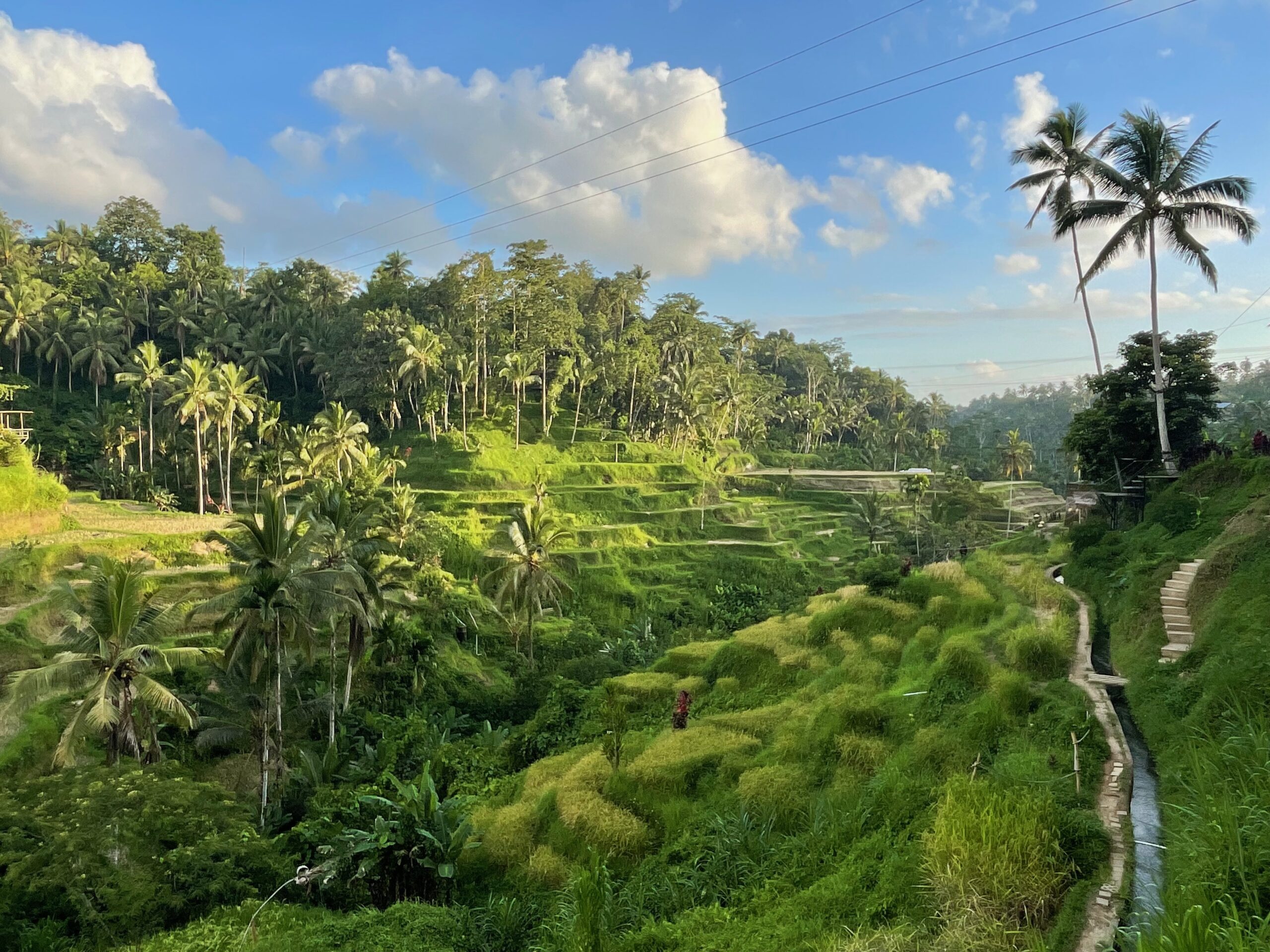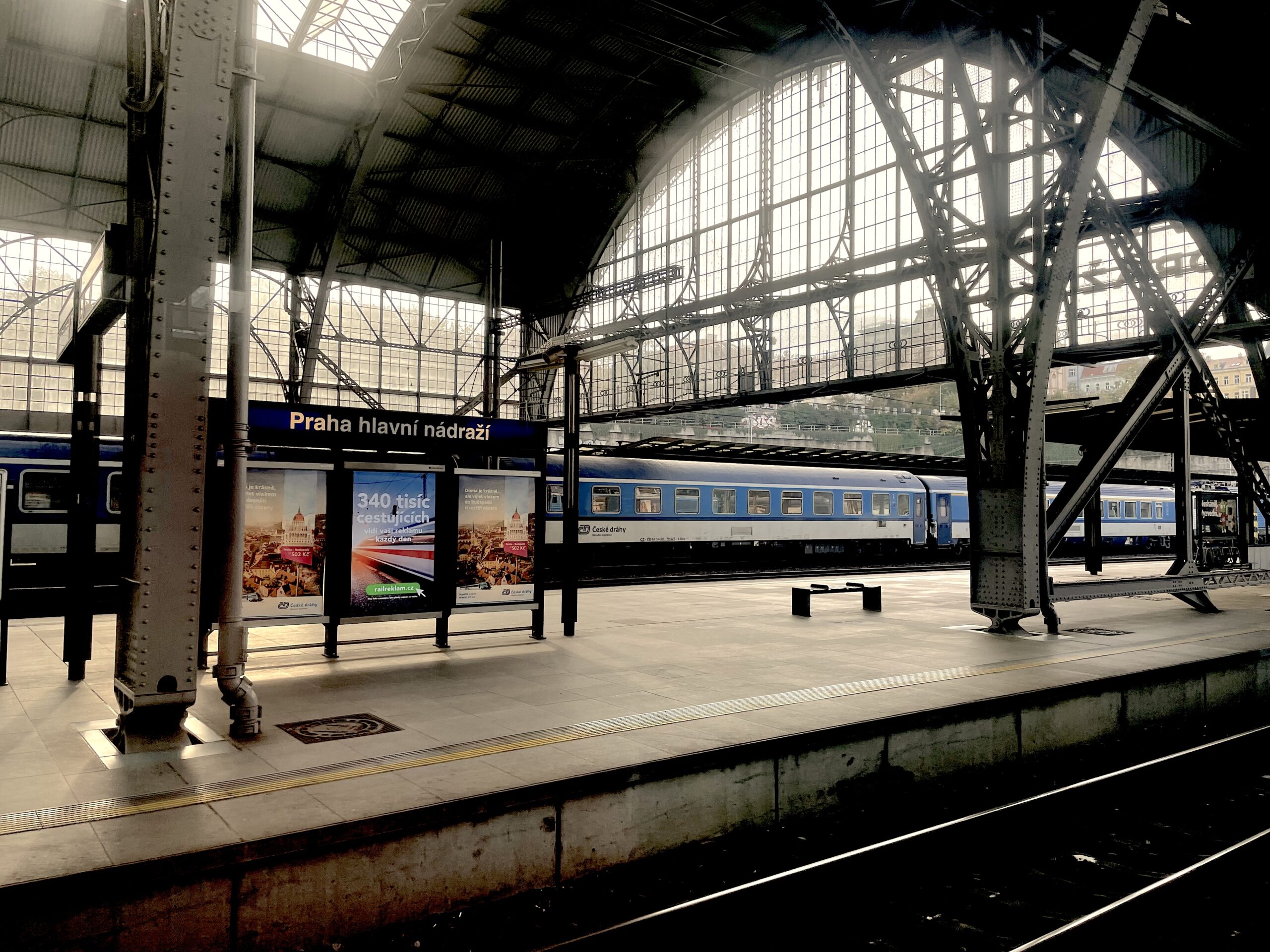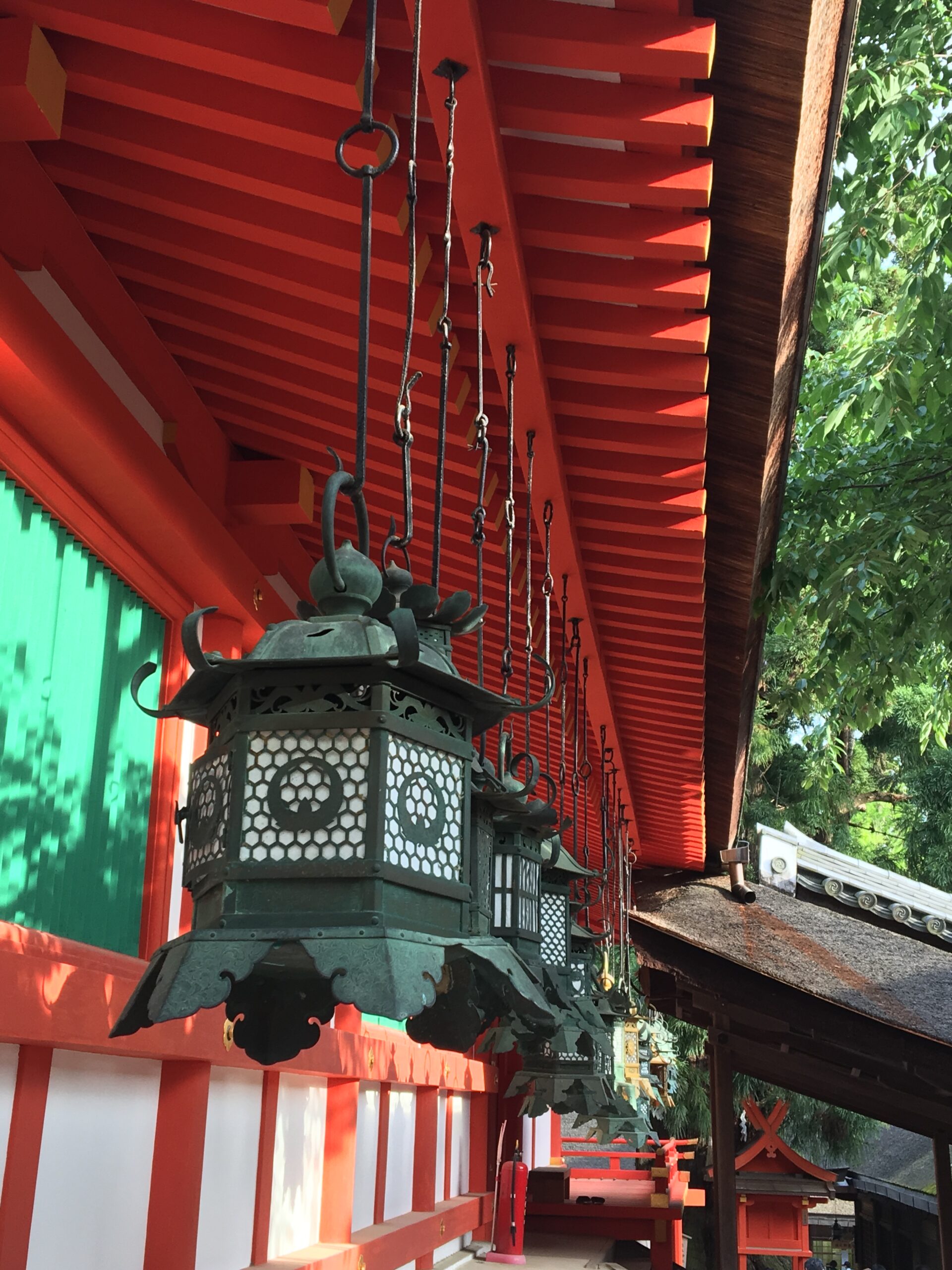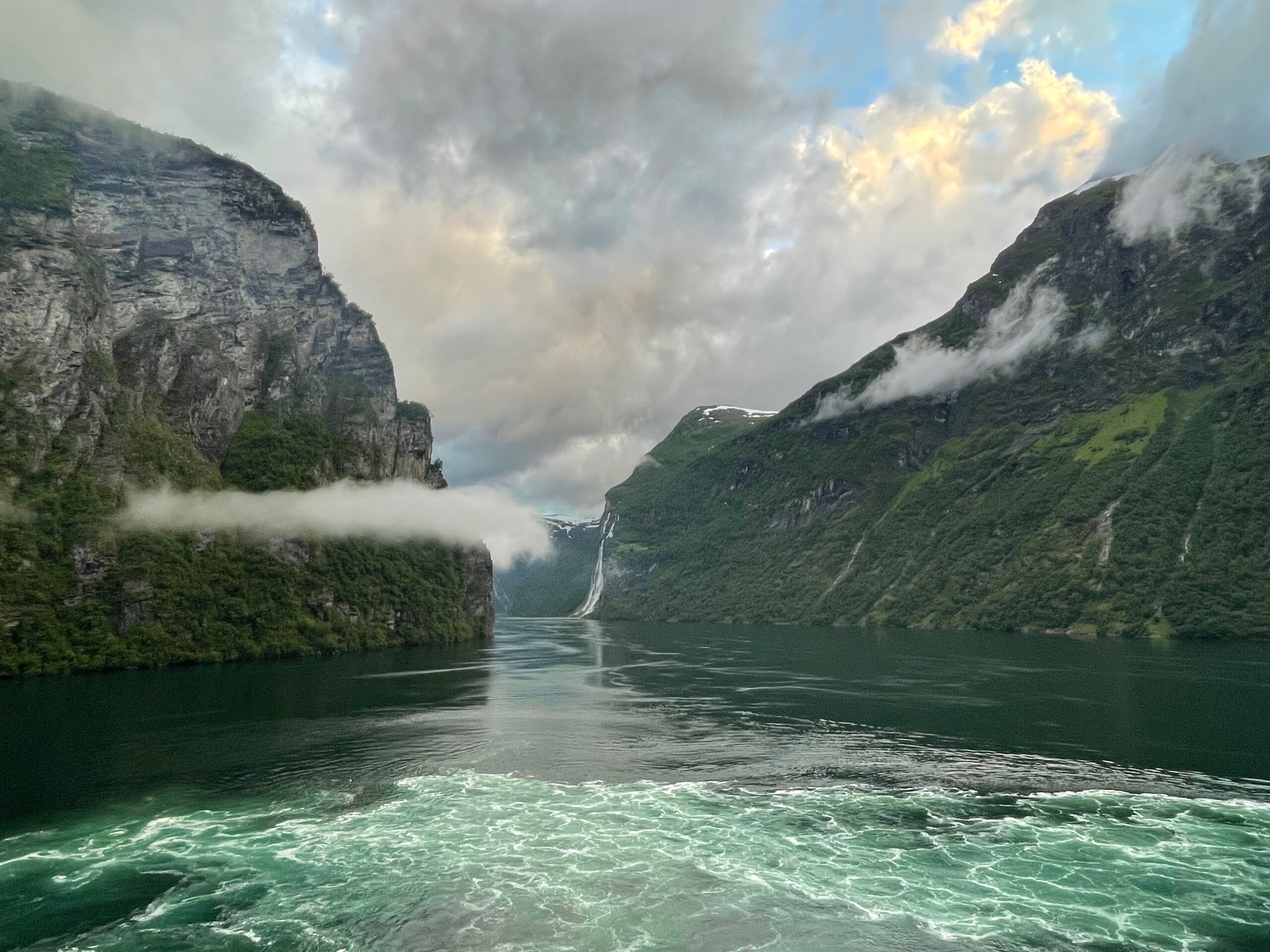Bali is a popular choice among travelers who want to enjoy beautiful tropical landscapes and have a swim/surf in warm waters of Indian Ocean. To me it seems like Bali delivers its promises: you can spend hours walking through magical rice field terraces, enjoy delicious traditional Balinese cuisine as well fresh seafood and fantastic local exotic fruits. If you prefer to spend time in lush greenery, you can go for hikes through the jungles and Balinese highlands, explore scenic waterfalls hidden in the forests, or relax on the beach switching between refreshing swim in the shallow waters to visits in countless spas which offer plenty of invigorating procedures including reputable Balinese massage.
Bali has this amazing diversity in its offer which is so attractive, you can opt for adventure like surfing, hiking vulcanos or trekking the mountains and jungles; choose full relaxation on the beach or decide for a more spiritual visit, in Bali you will find plenty of yoga and meditation classes as well as many spas which will take good care for your soul and body. If you’re more into culture, Bali is proud to show you it’s rich heritage which deeply connected with Hindu religion predominant on the island. You can visit historical Hindu temples, royal palaces, listen to the local music and admire local dances, the friendly locals are also happy to say more about their life in Bali and Indonesia in general so you’re experience will be even more complete.
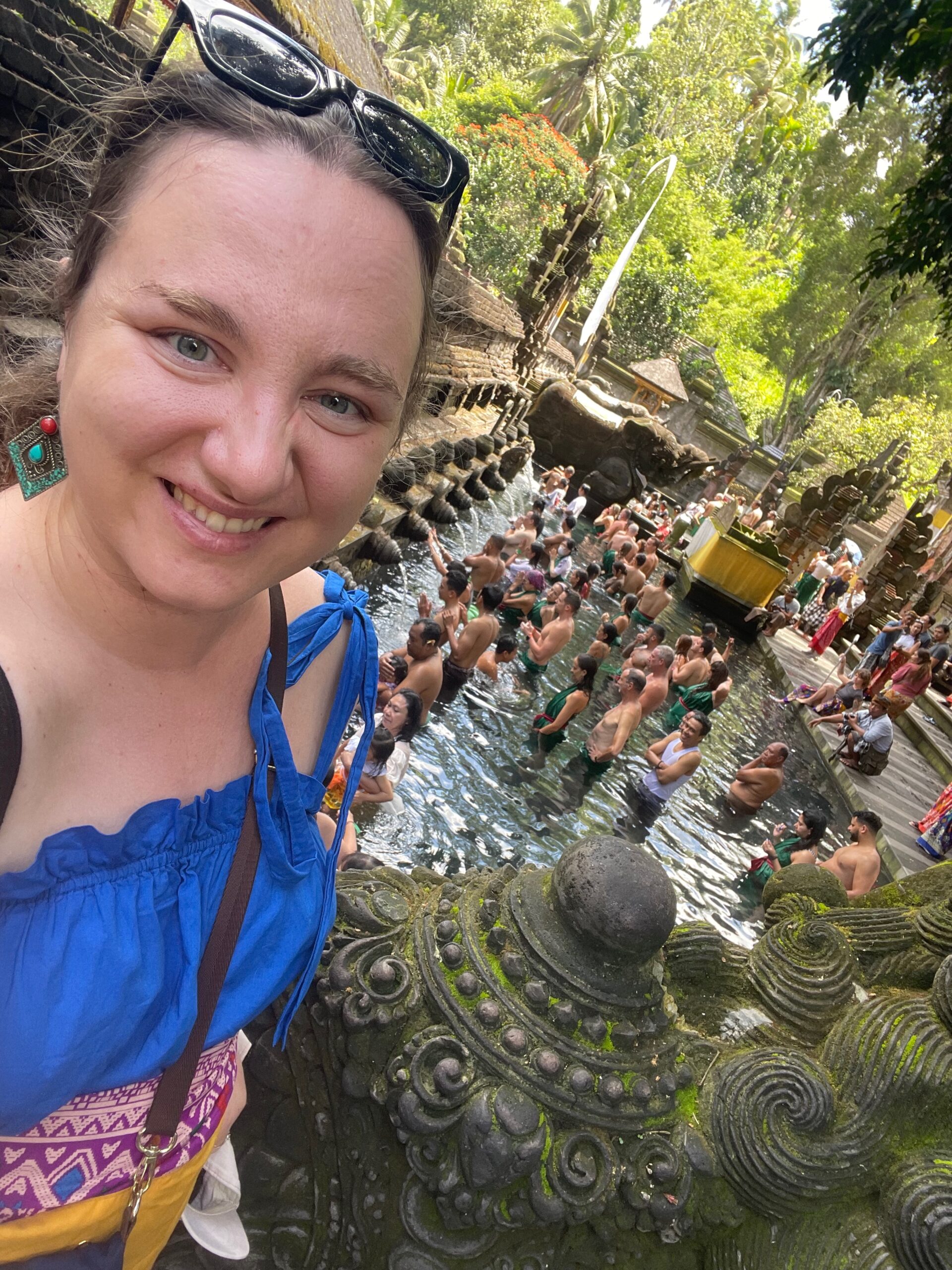 |
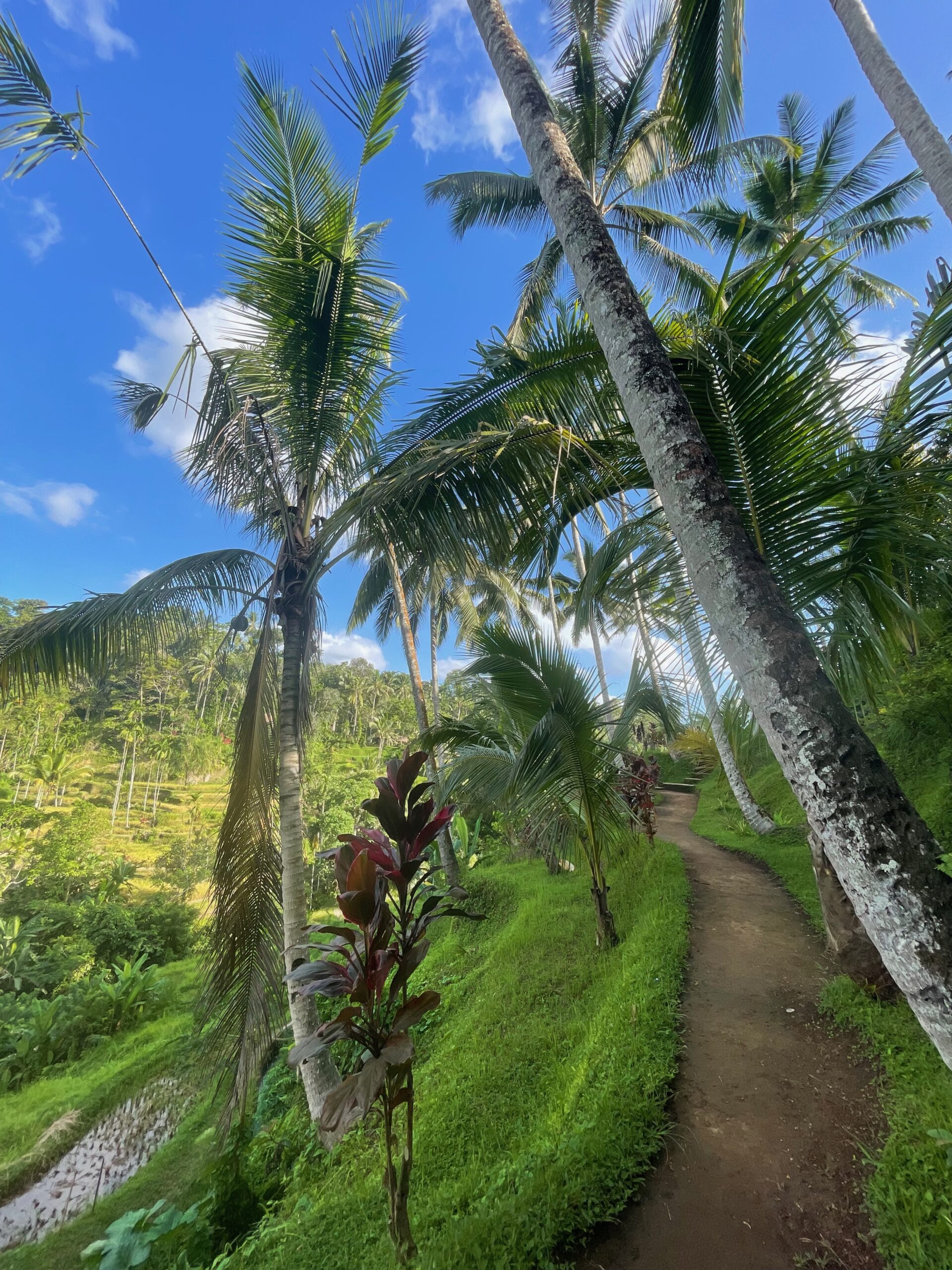 |
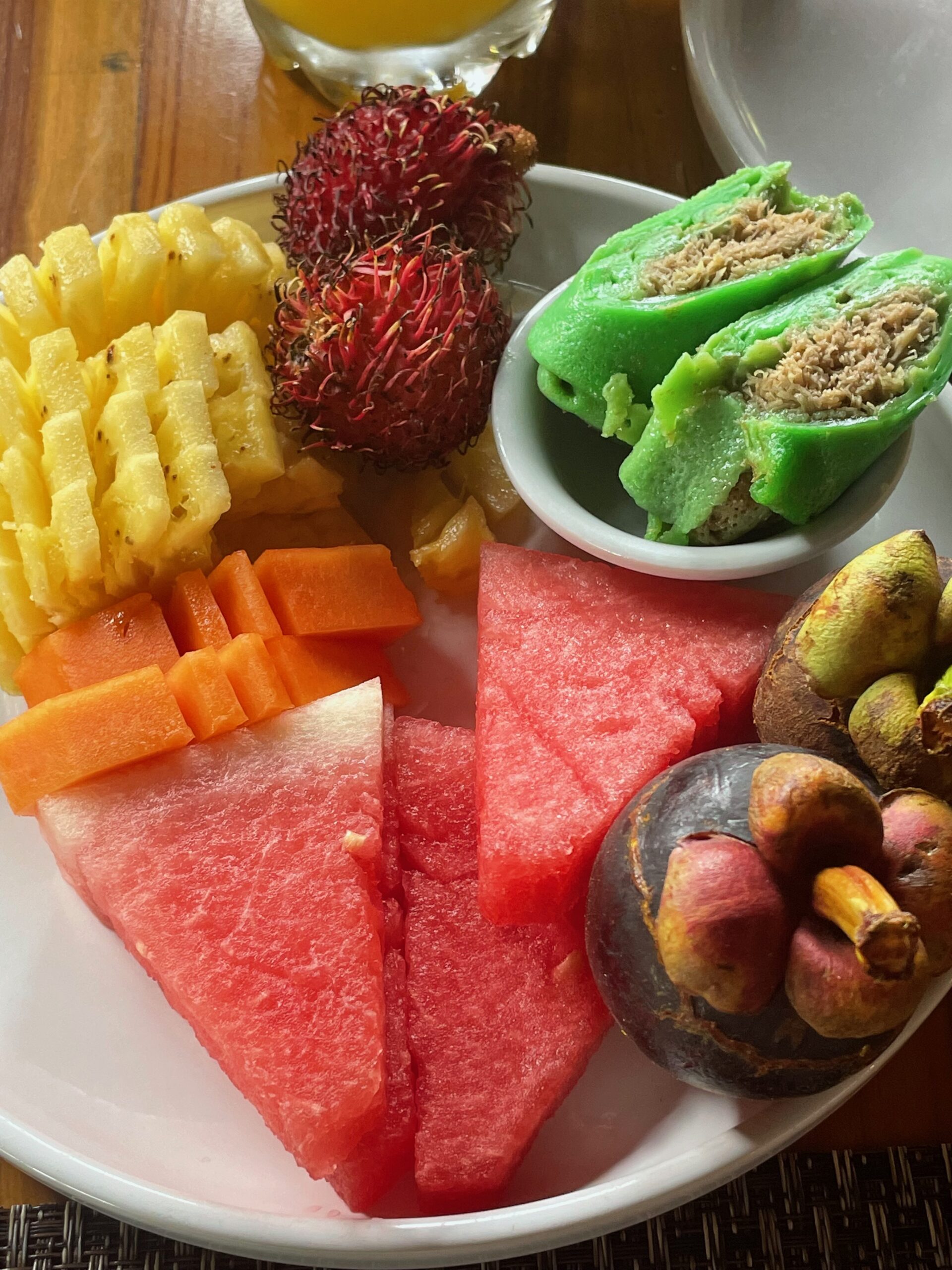 |
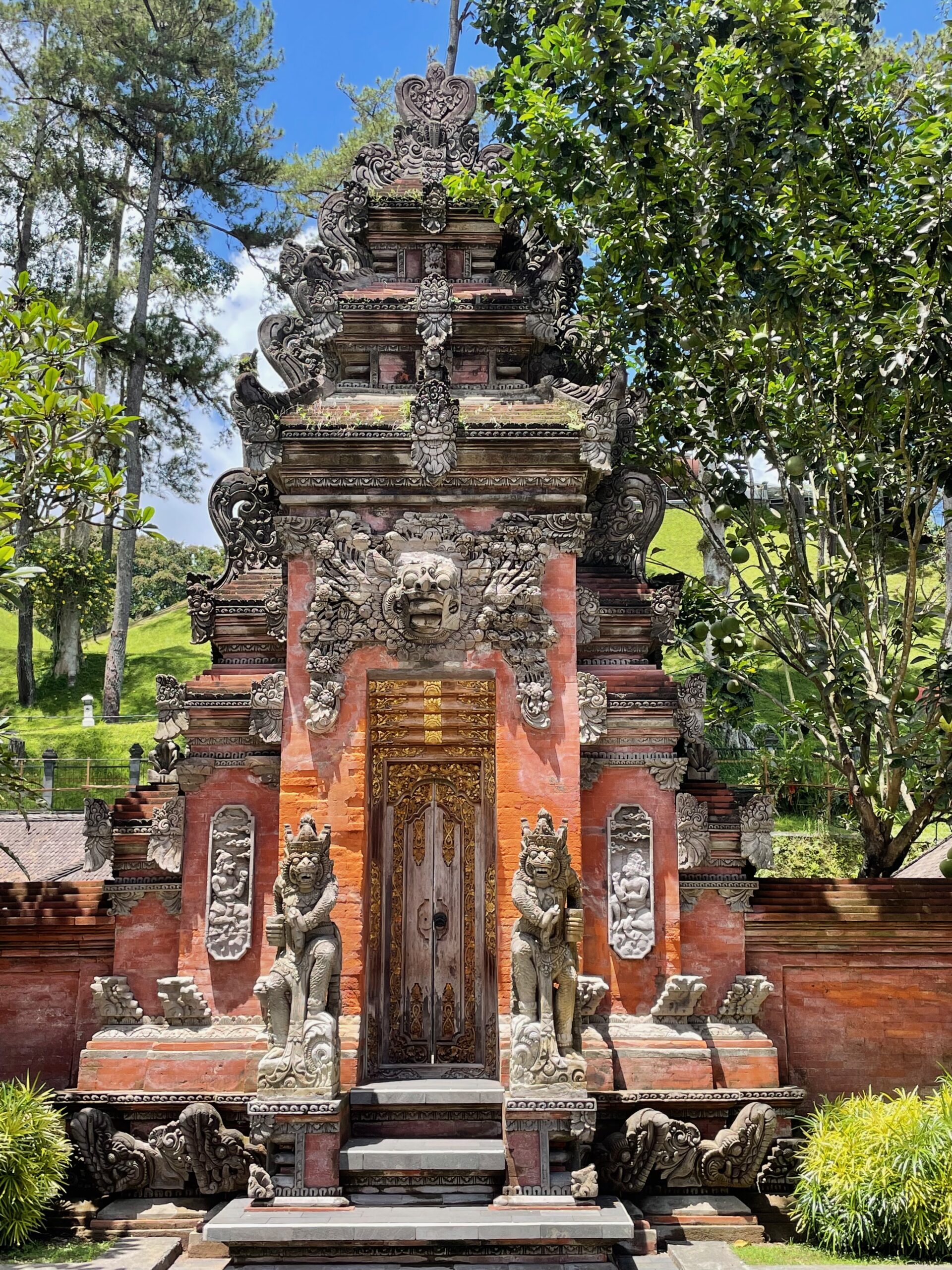 |
When planning our trip to Bali, I knew that I want to have a diverse experience during my stay, visit beautiful temples and royal palaces (the inner culture geek could not possibly skip this part) but also have time to admire scenic nature and immerse in the lush greenery of the forests and rice fields. Finally, the trip needed to include some blissful time on the beach when the only scheduled activity of the day would be a Balinese massage.
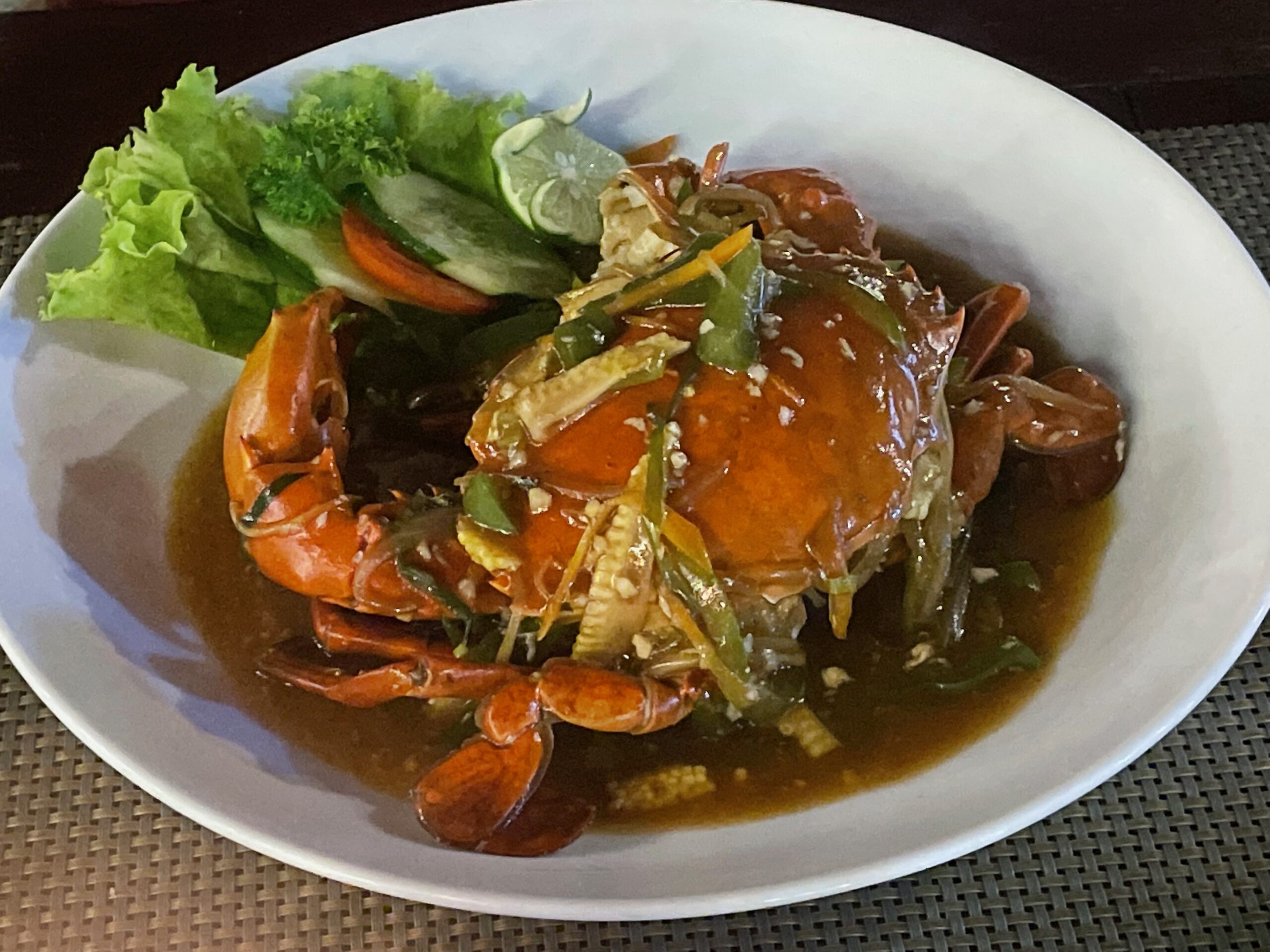 |
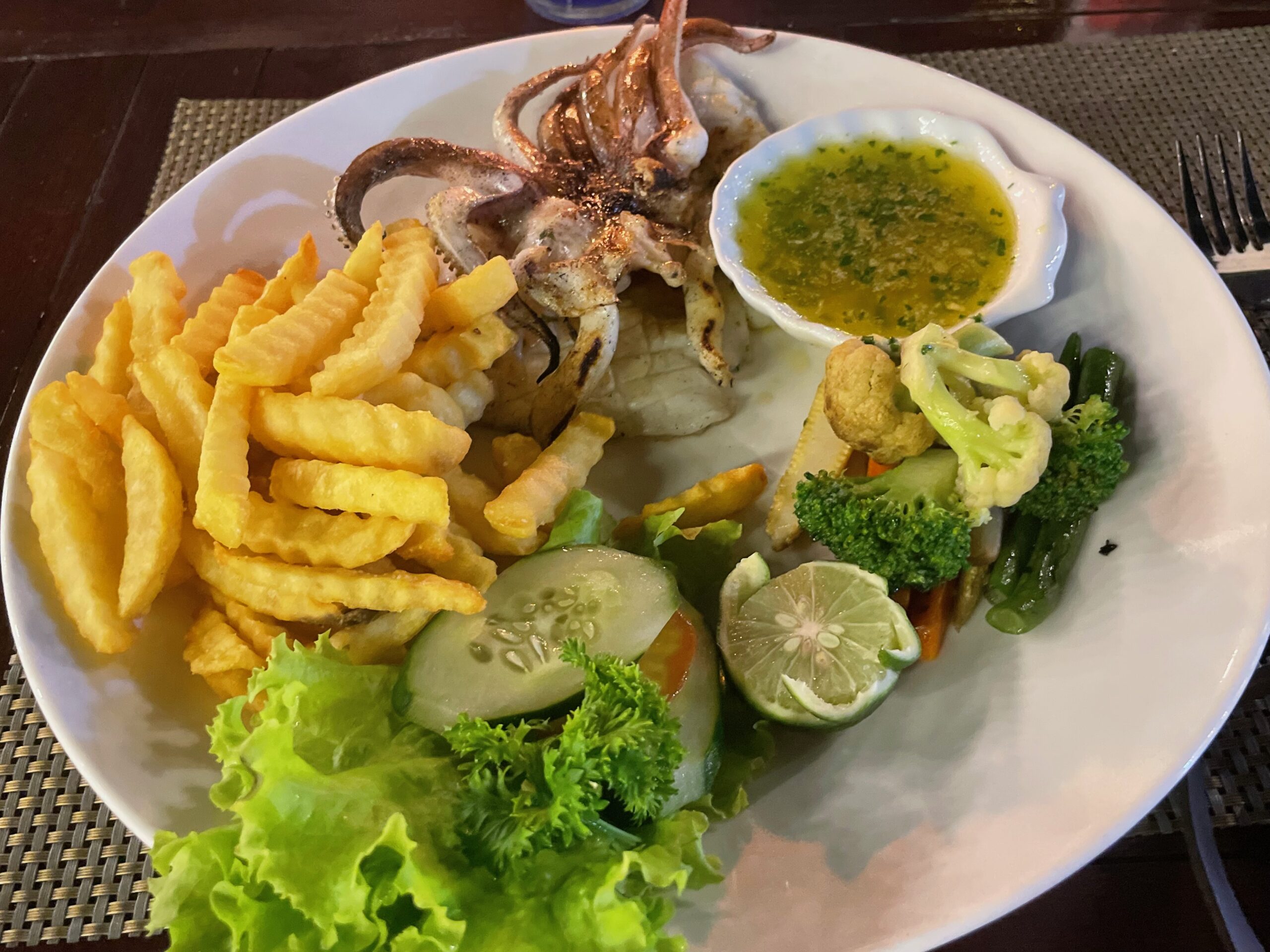 |
 |
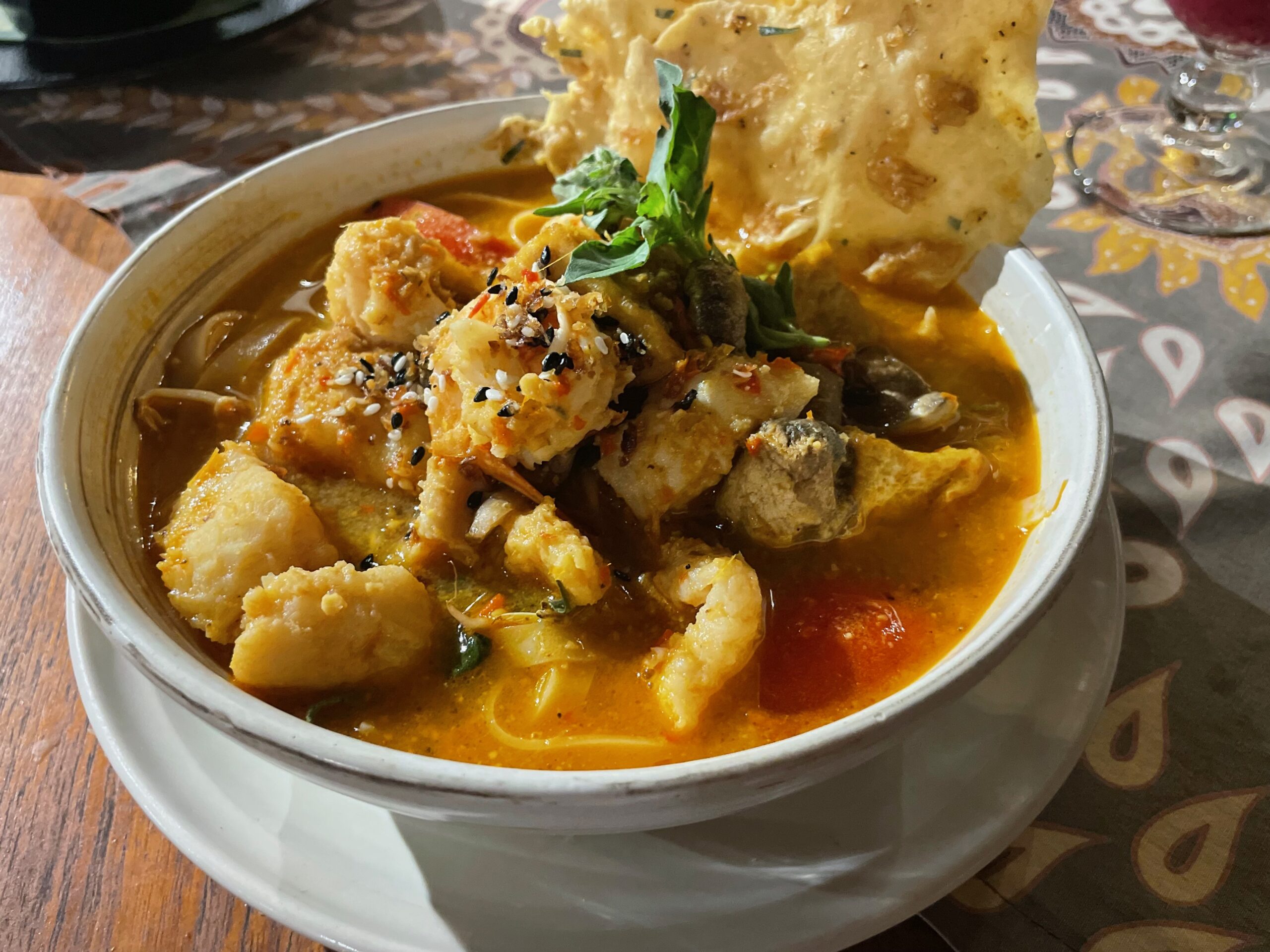 |
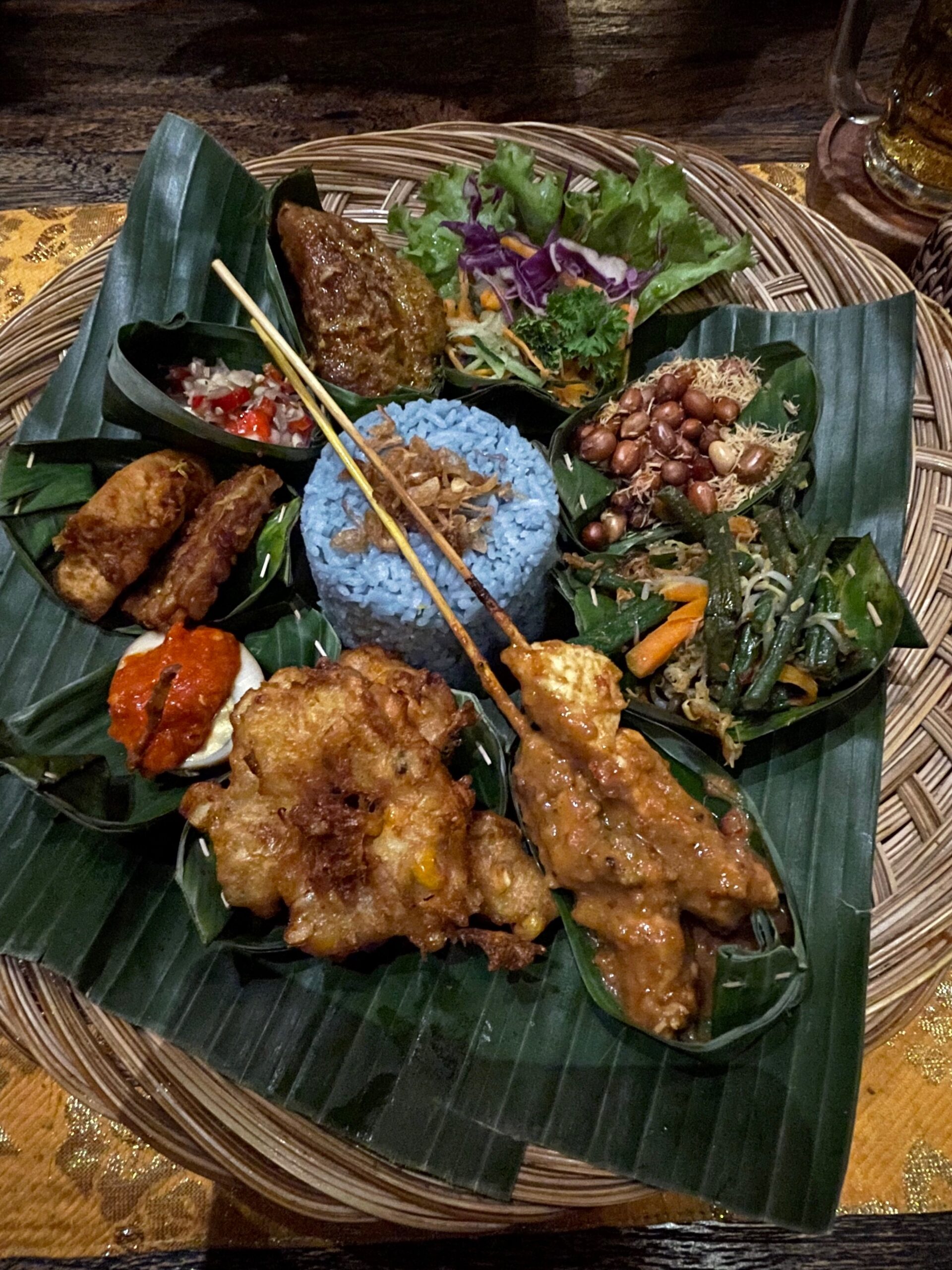 |
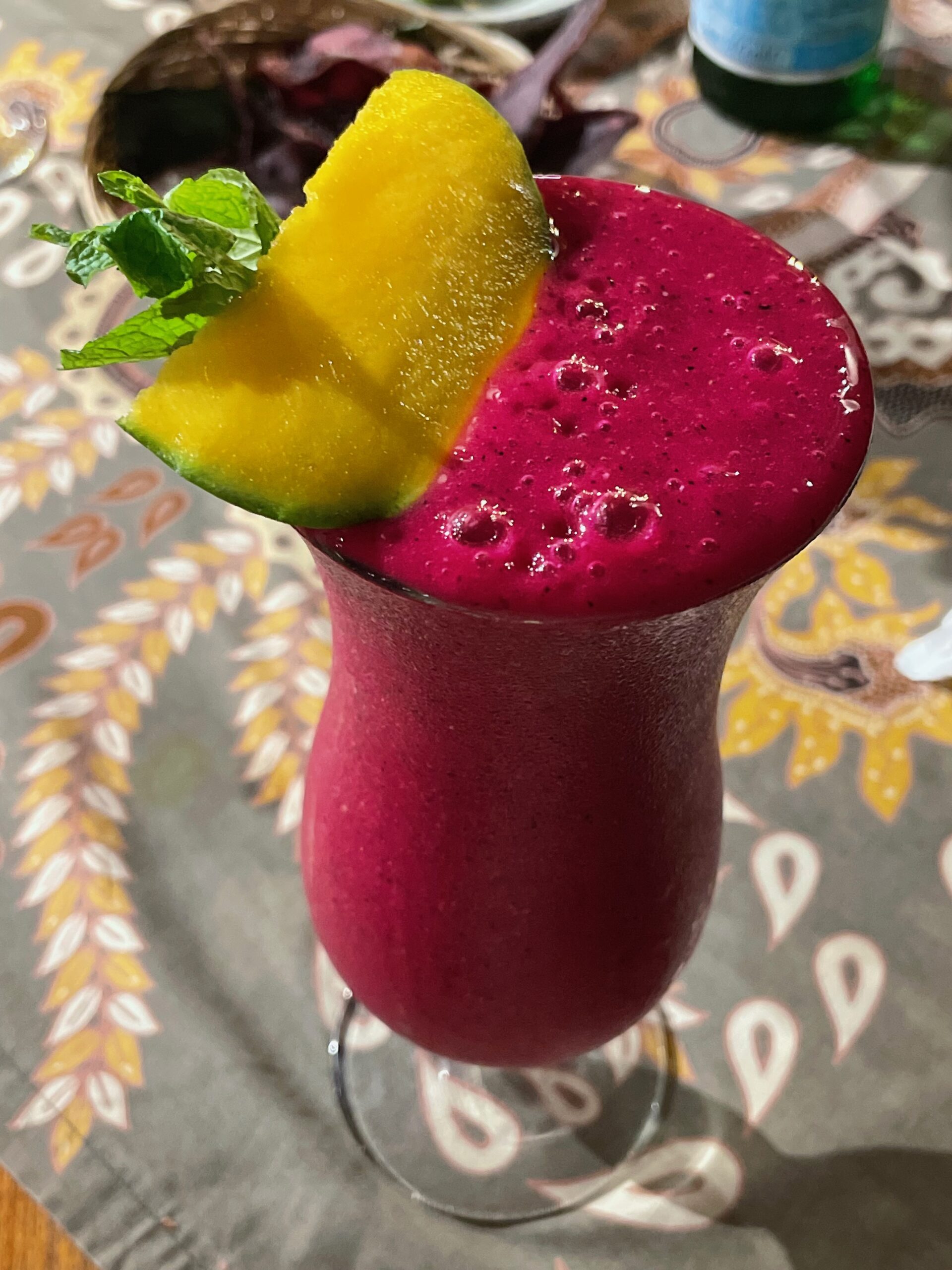 |
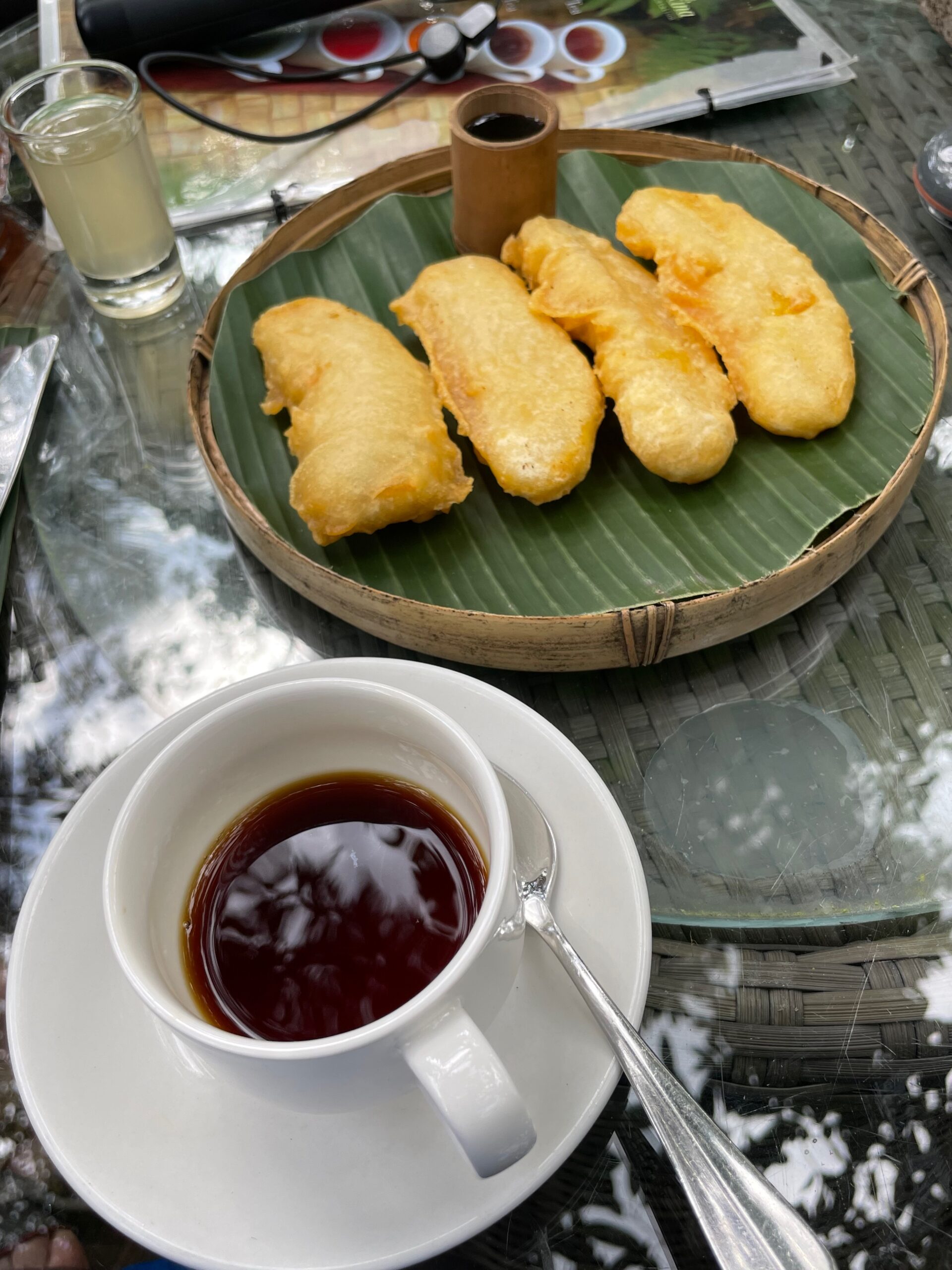 |
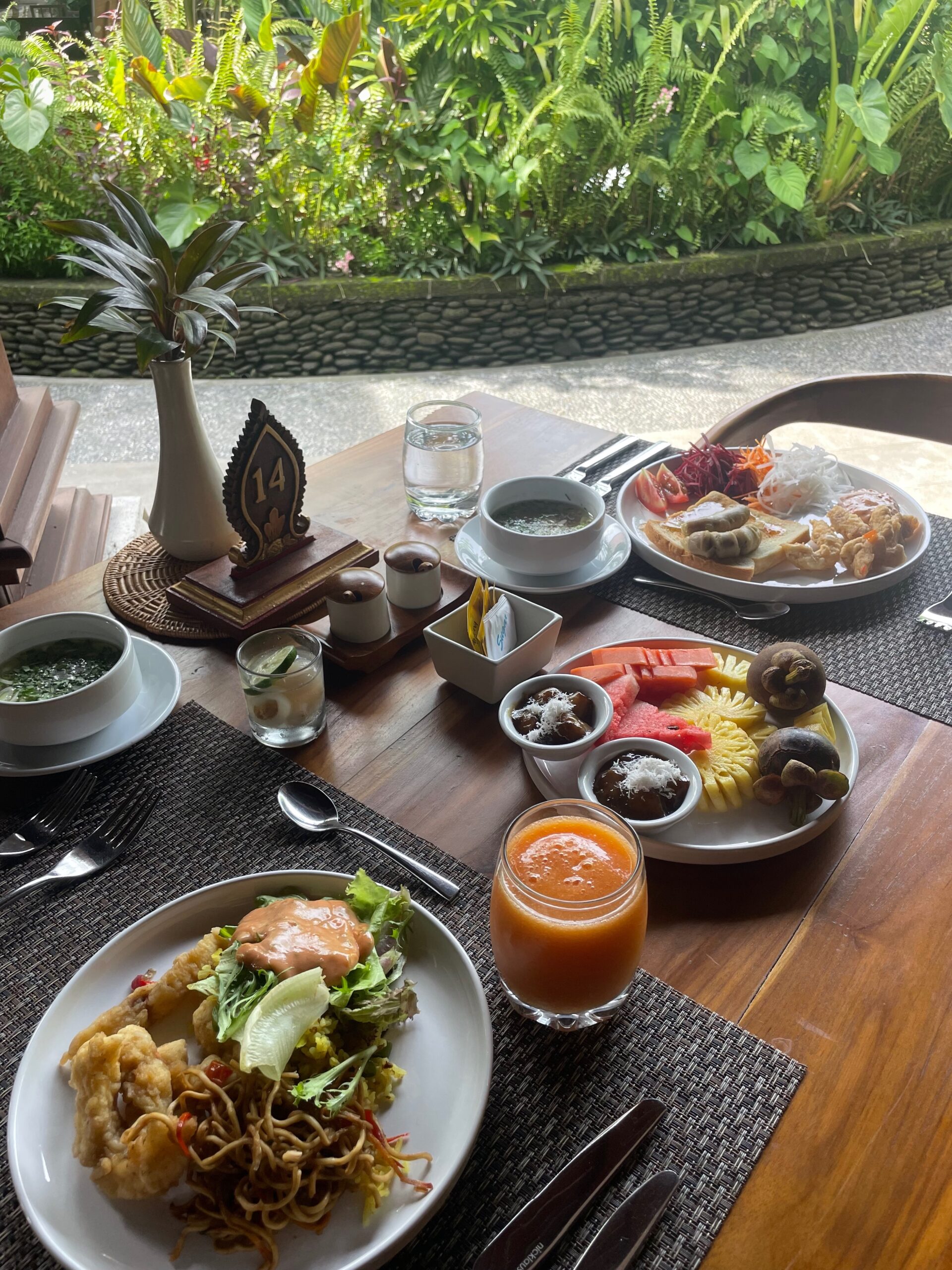 |
In this post I will present our almost 2 week itinerary around Bali filled with amazing food, scenic landscapes, mysterious temples and relax on the coast.
We have divided our trip into 2 parts. First 6 days we spent in Ubud located more in the centre of the island from where we organized daily trips to the mountains, rice fields, temples and waterfalls. The second week we spend in the coast in beautiful cosy Nusa Dua region which I find perfect for couples and young families since the beaches are clean, the waters are shallow and the overall atmosphere is very tranquil and intimate.
Day 1 (Ubud Royal Palace, Ubud Water Palace, Campuhan Ridge Walk and Juwuk Manis Rice Fields Walk)
We have spent our first day exploring Ubud and its historical sites. The city is a good place to start your adventures in Bali since they have a good gastronomical scene with plenty of traditional warungs serving delicious Balinese cuisine, you can find many small artisanal shops selling authentic Balinese products as well as easily find services and drivers to arrange your daily trips around the island. The prices are definitely lower and the experience feels more authentic than in the coast yet everything is tourist-tailored well enough so it’s easy to plan your days around Ubud.
The first day for us was to see main historical attractions of Ubud which was Ubud Royal Palace and Ubud Water Palace as well as we stopped by a few local Hindu temples. Interestingly, majority of them was not possible to enter by visitors, this included famous Pura Taman Kemuda Saraswati and this was a bit surprising to me.
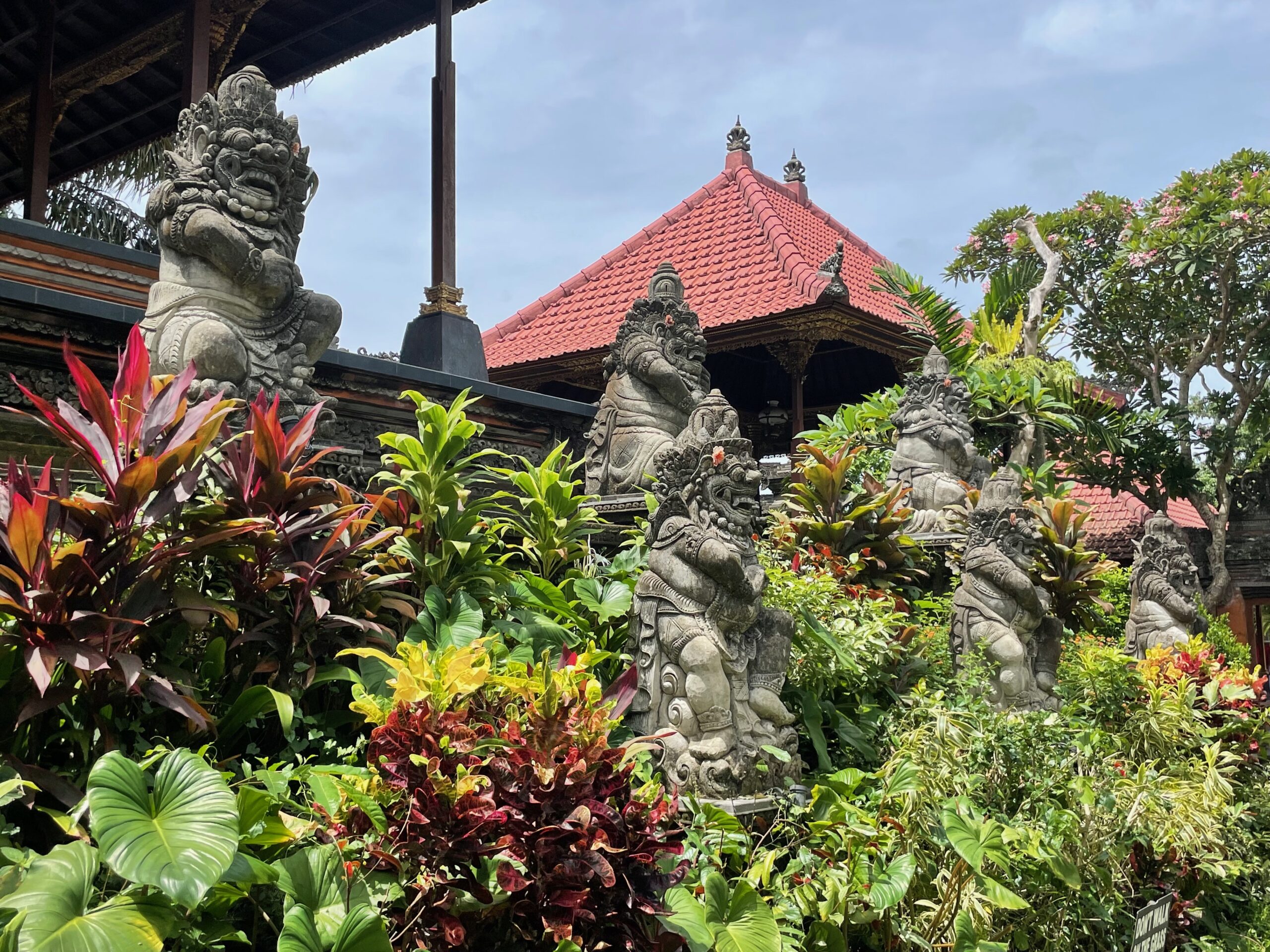 |
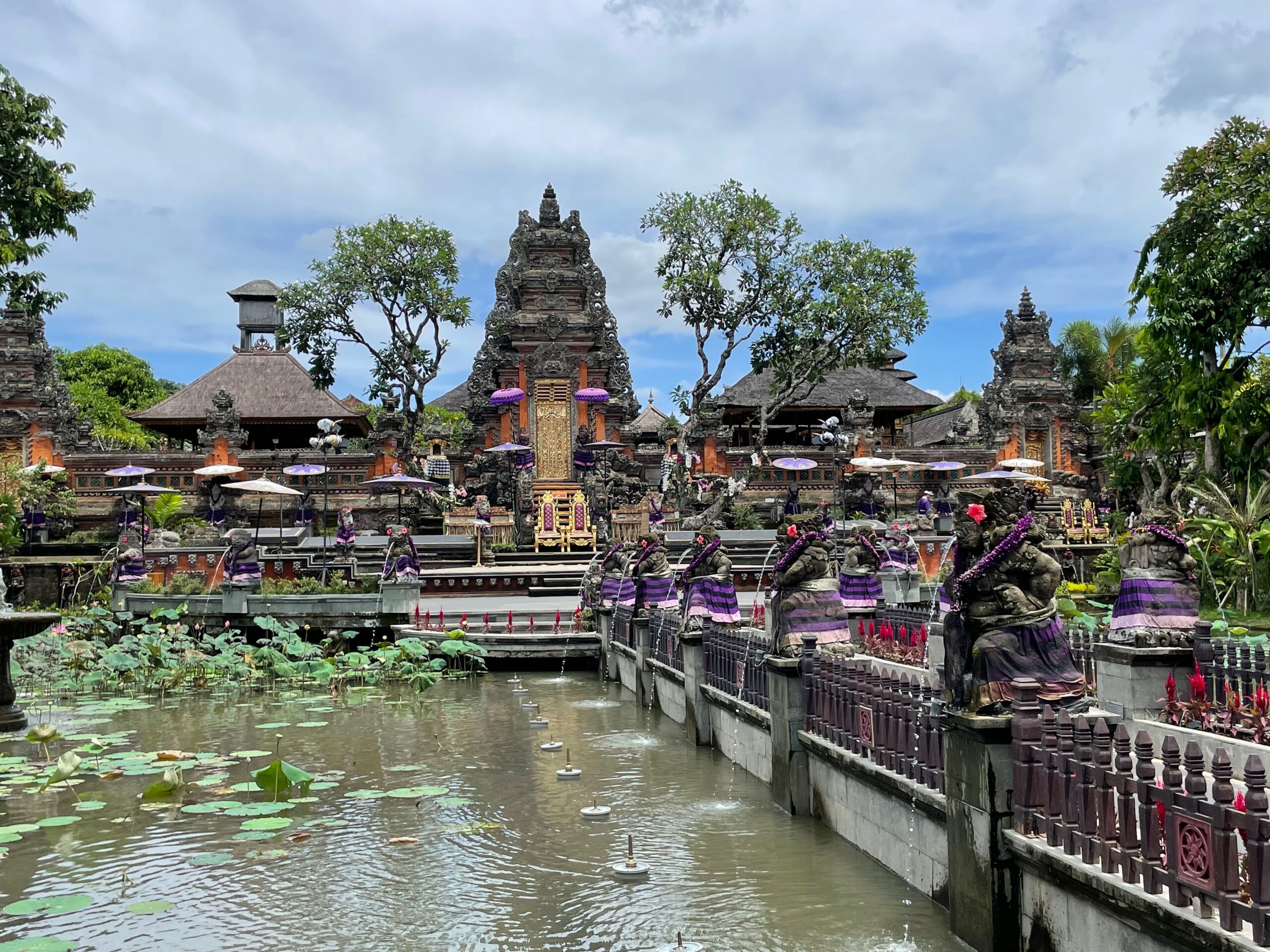 |
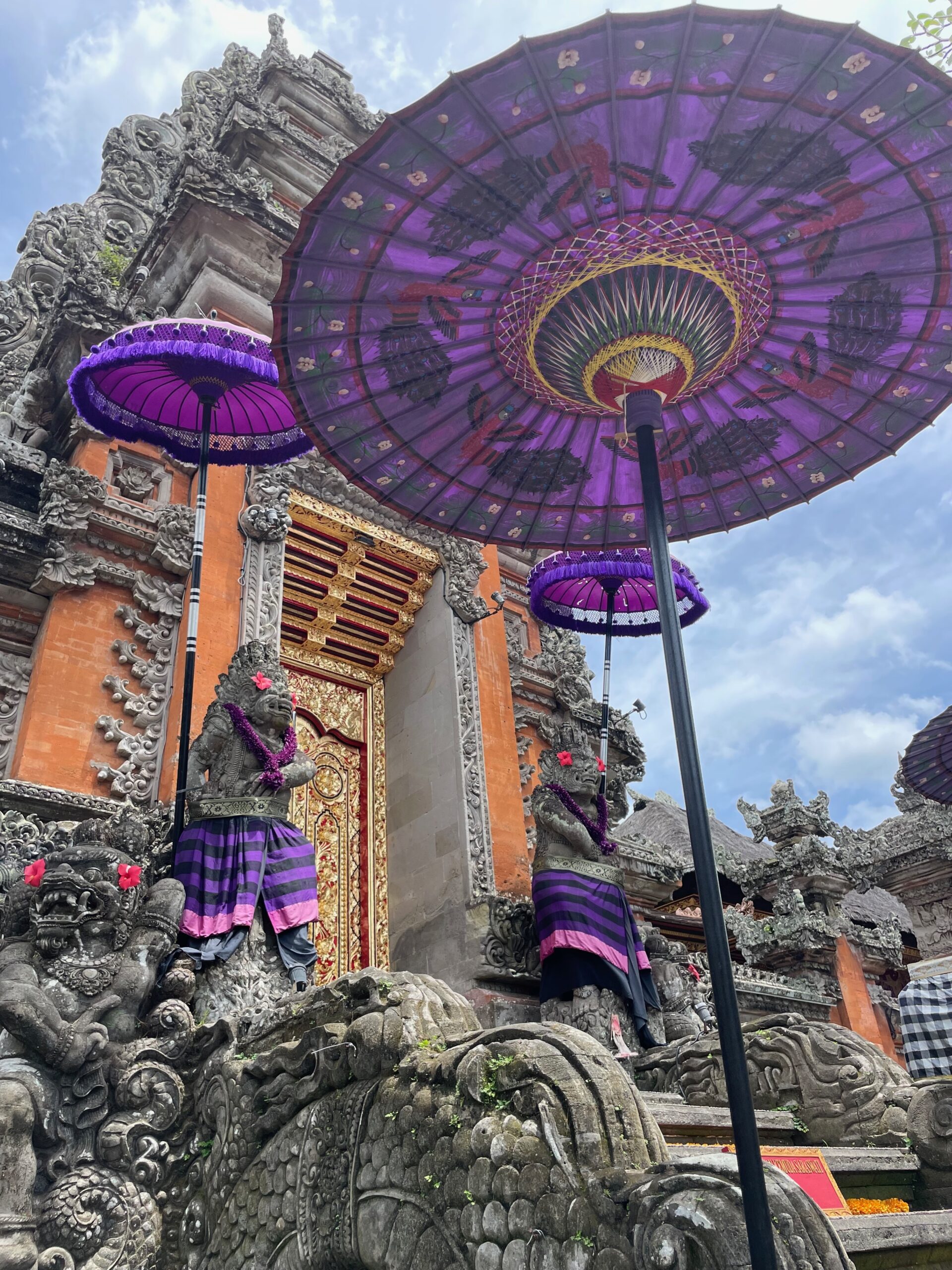 |
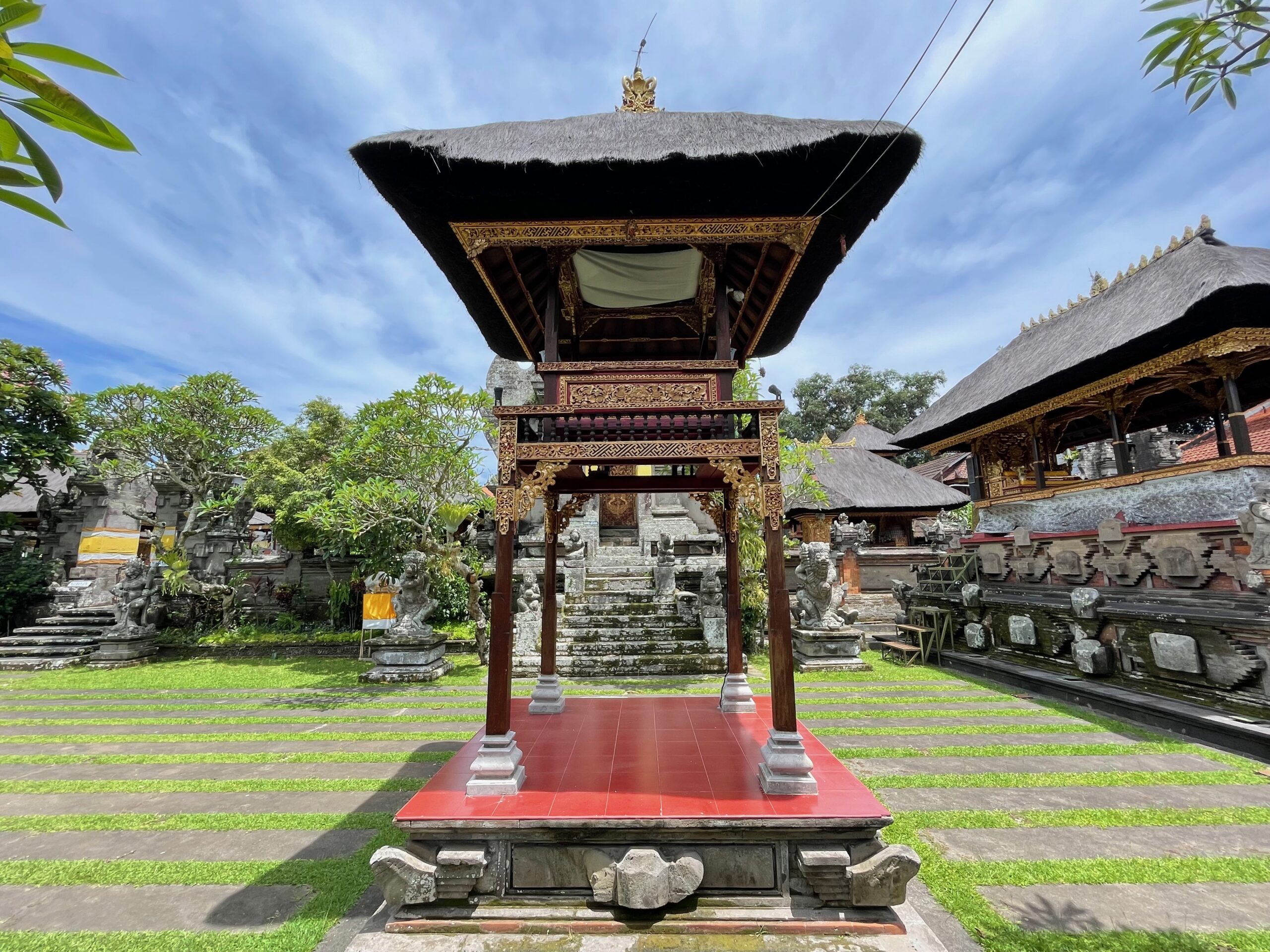 |
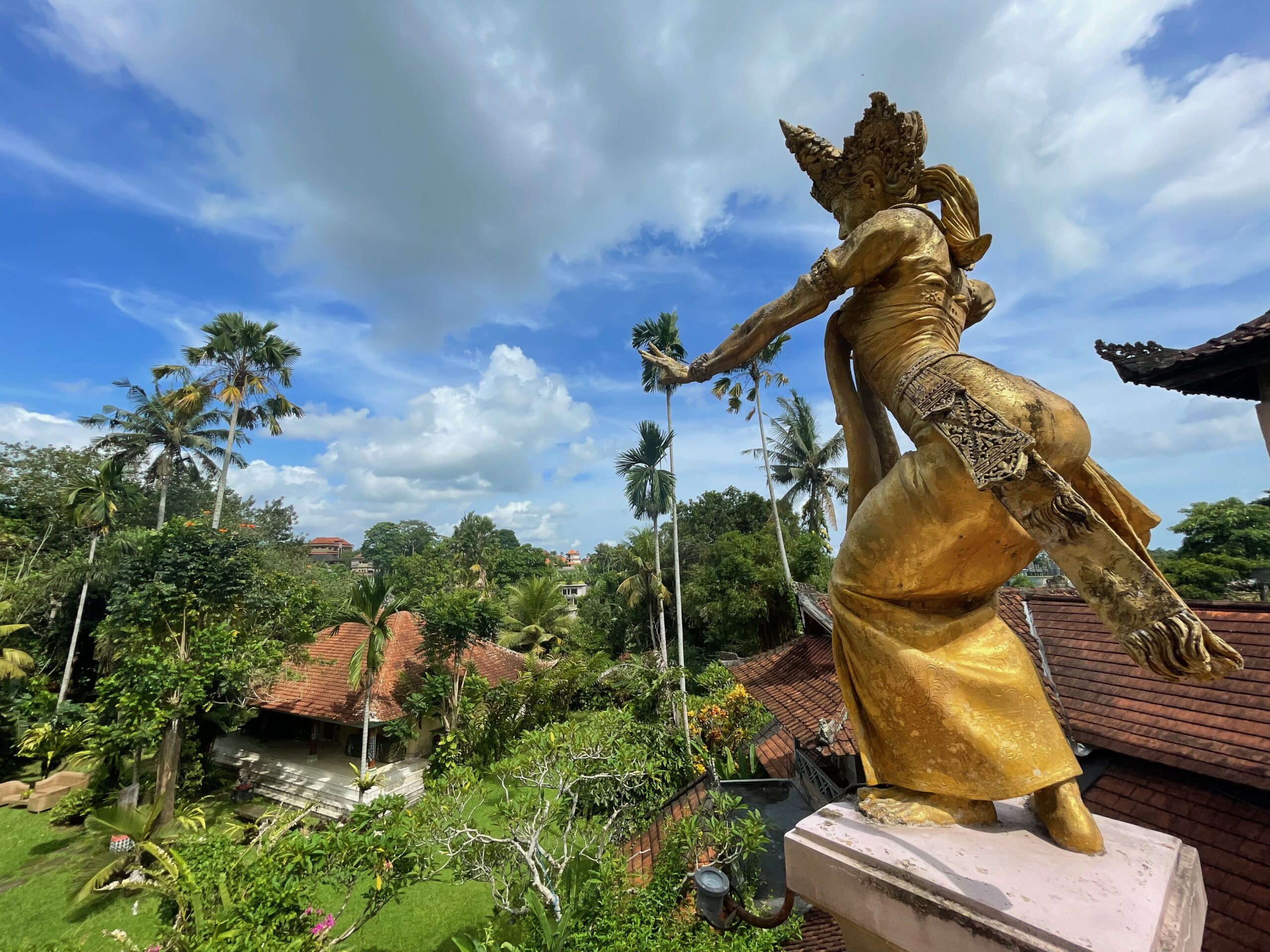 |
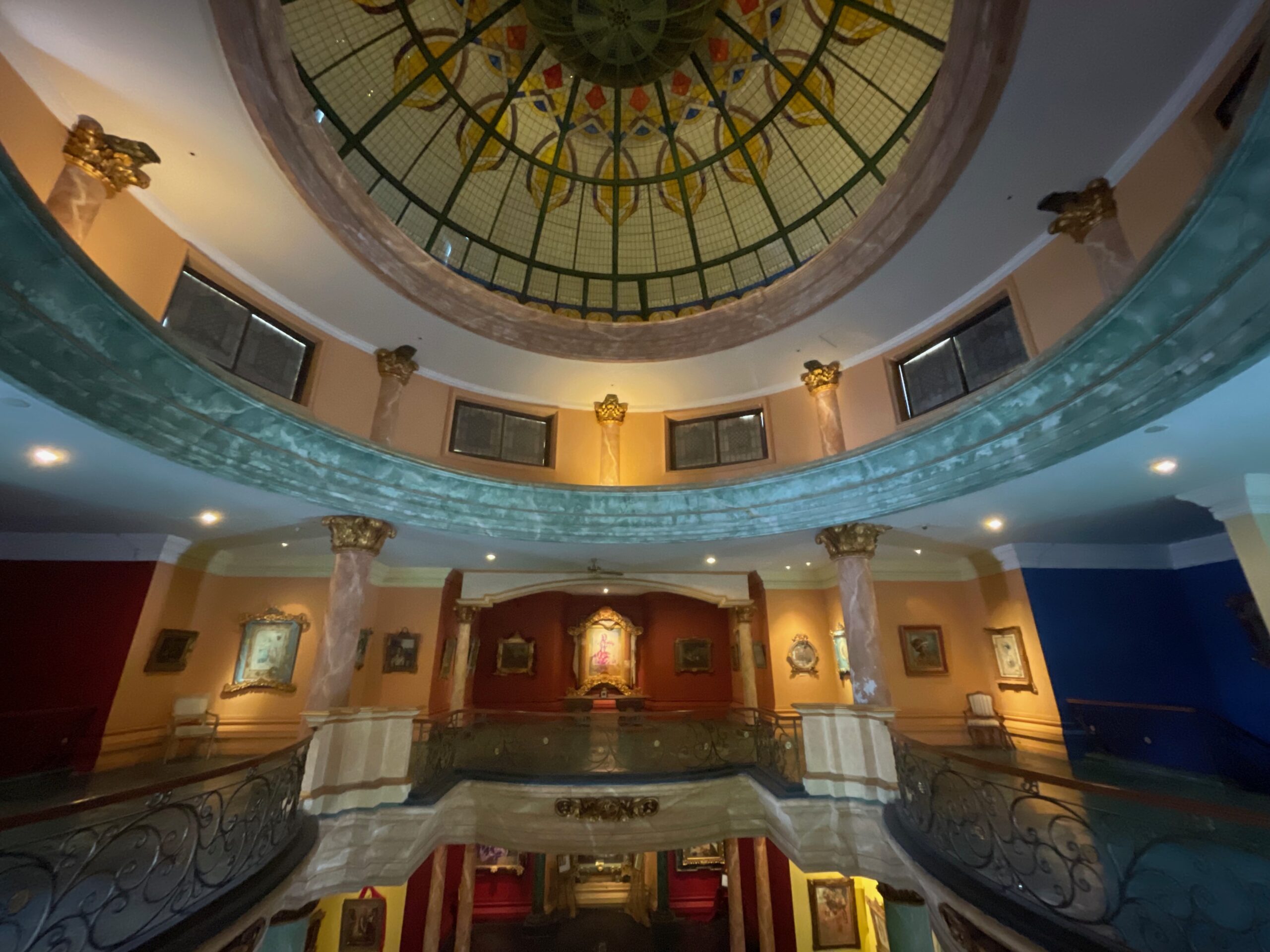 |
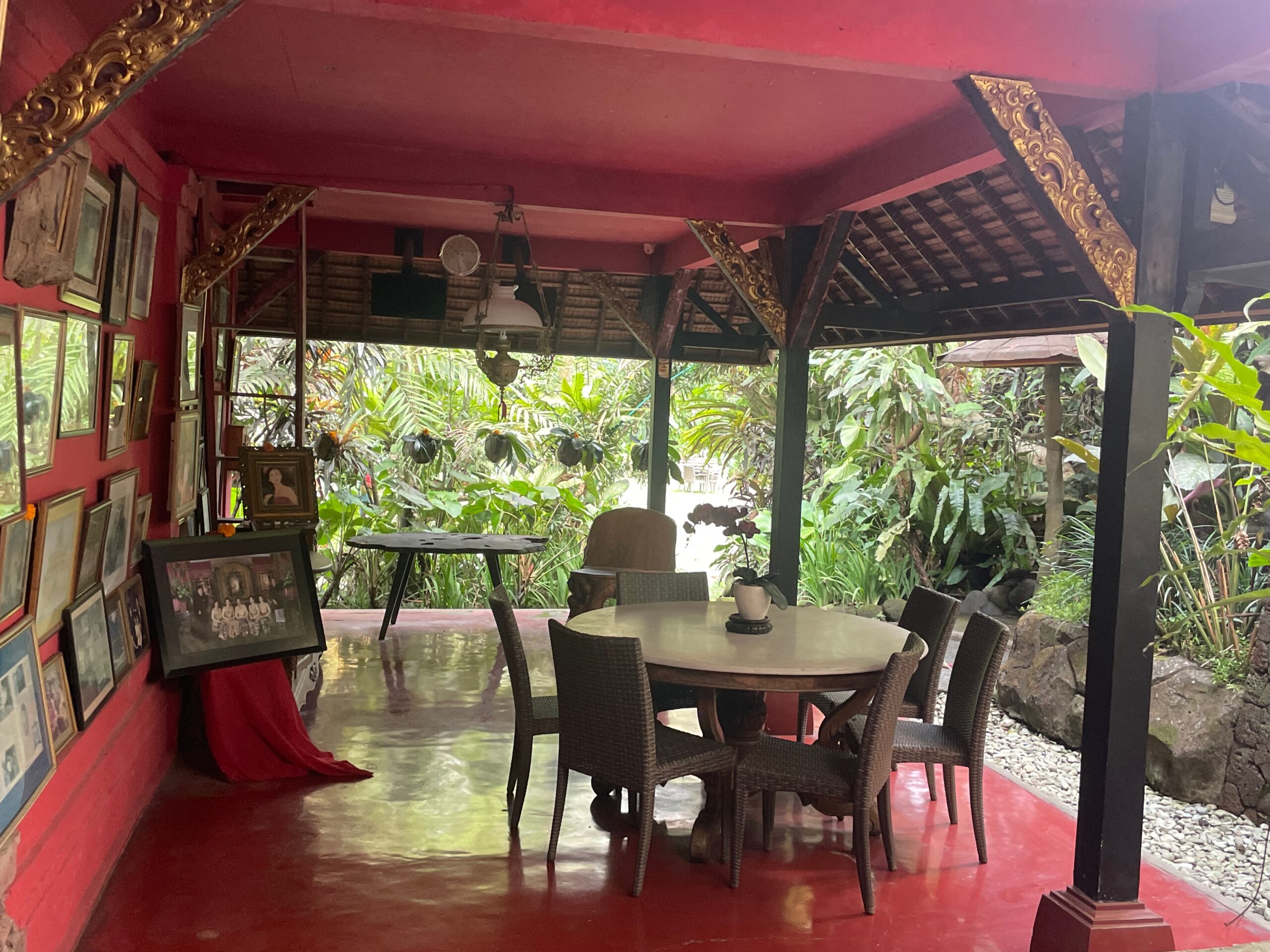 |
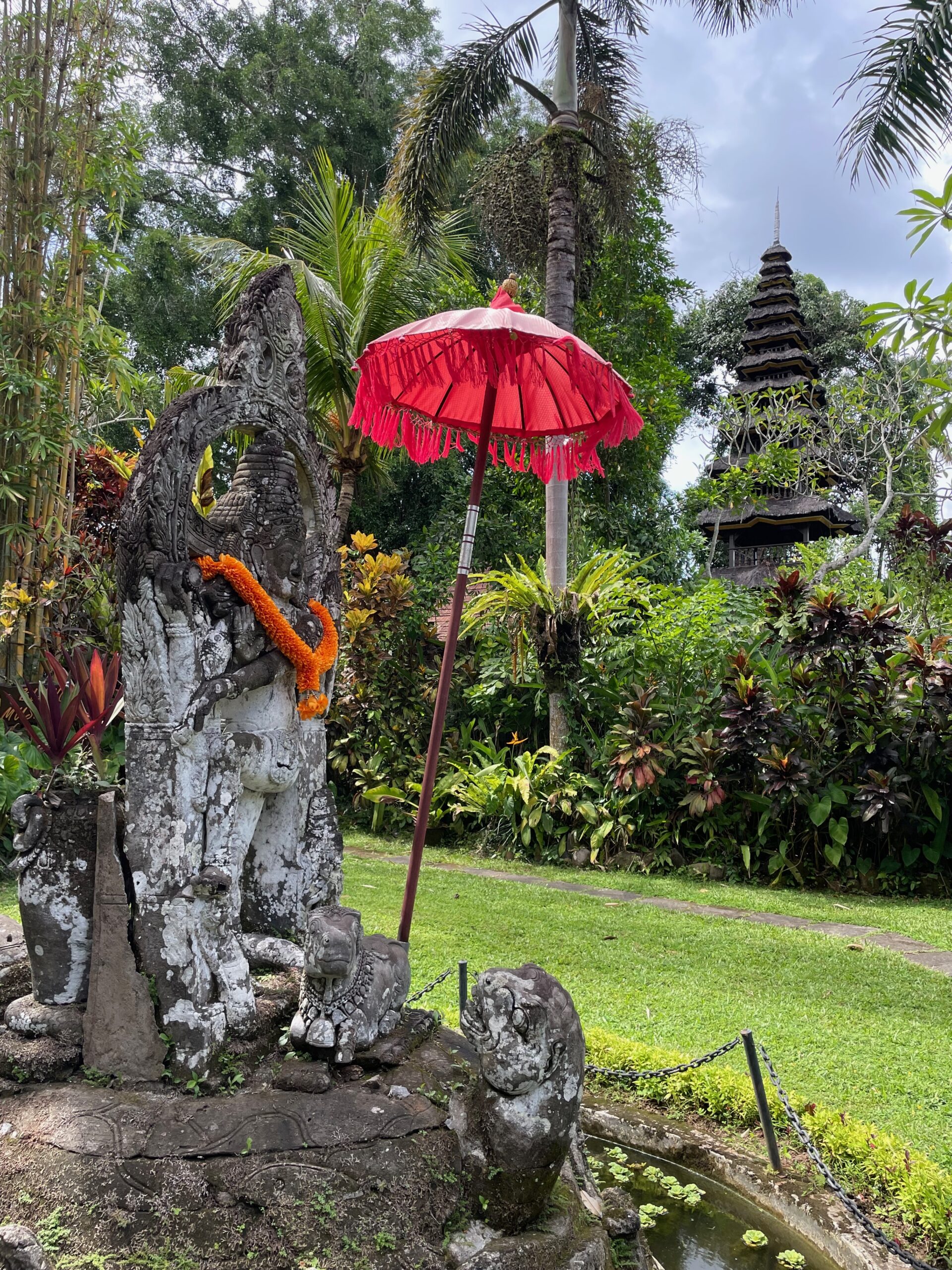 |
In the afternoon we also decided to do two rice fields treks: we’ve done one of the most popular ones (and it wasn’t very crowded) Campuhan Ridge Walk but we didn’t see there rice fields though -it’s possible they were hidden behind some bushes; still the views are nice so it’s ok to do this path. Our second trek was a nearby Juwuk Manis Rice Fields Walk where you can actually admire rice fields and overlook the Balinese workers taking care of the rice. All along the path you will find many small charming cafes where you can stop for refreshments, we decided to have a cold coconut water and dragon fruit juice. We had this walk around the sunset and there was few tourists left, the golden hour was basking the fields in warm light and the atmosphere was very tranquil especially when comparing to busy loud roads in the centre of Ubud.
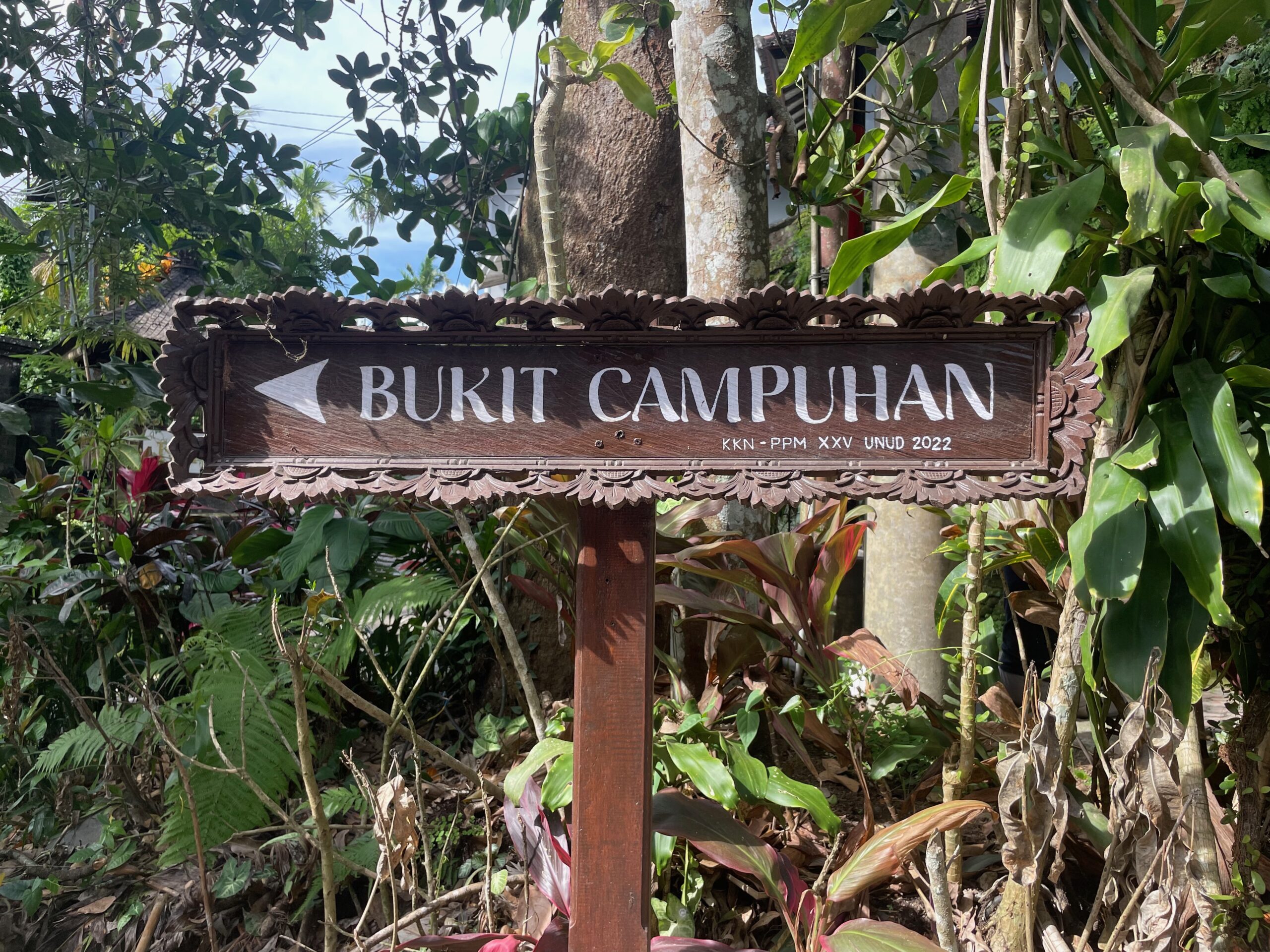 |
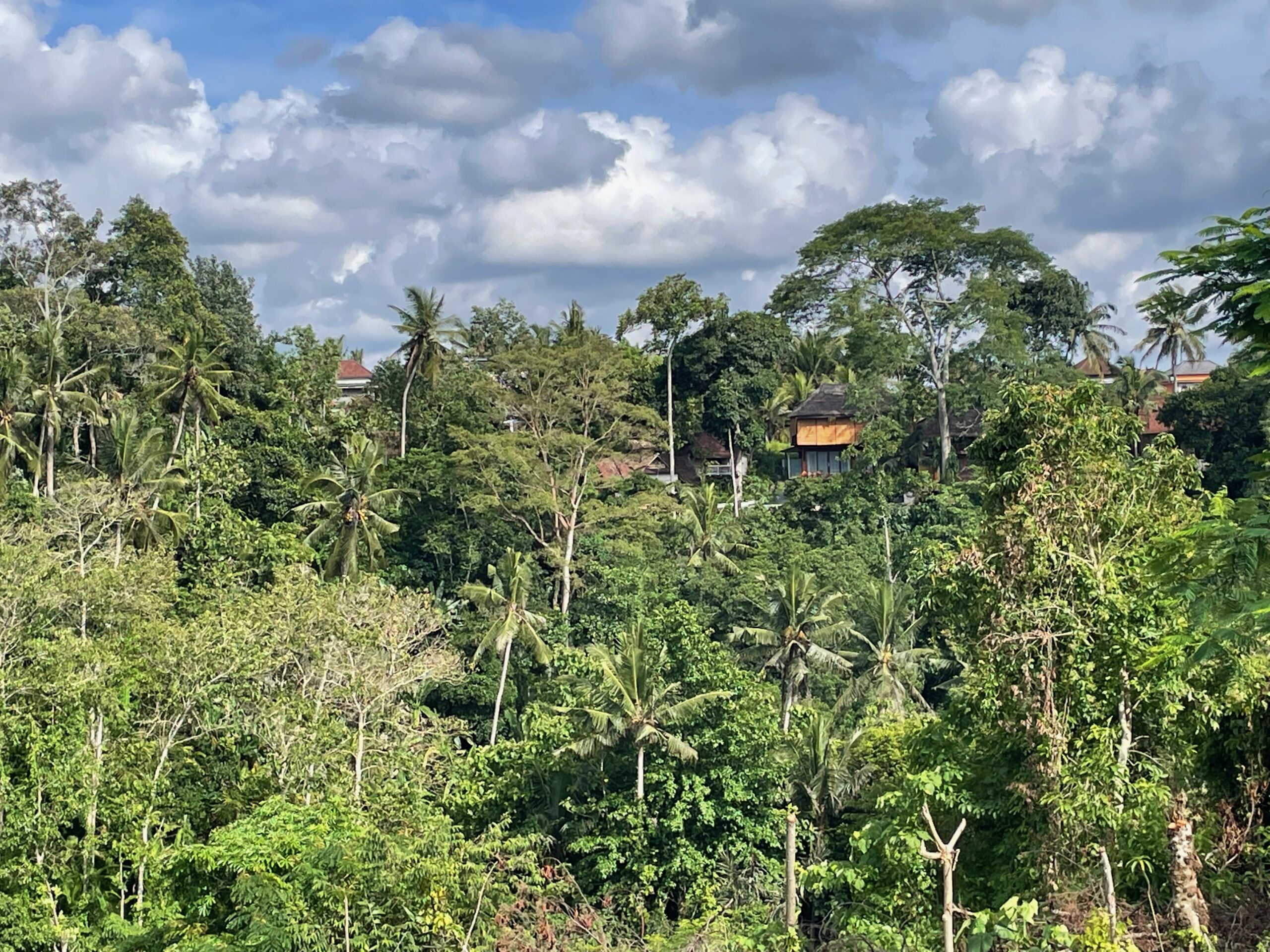 |
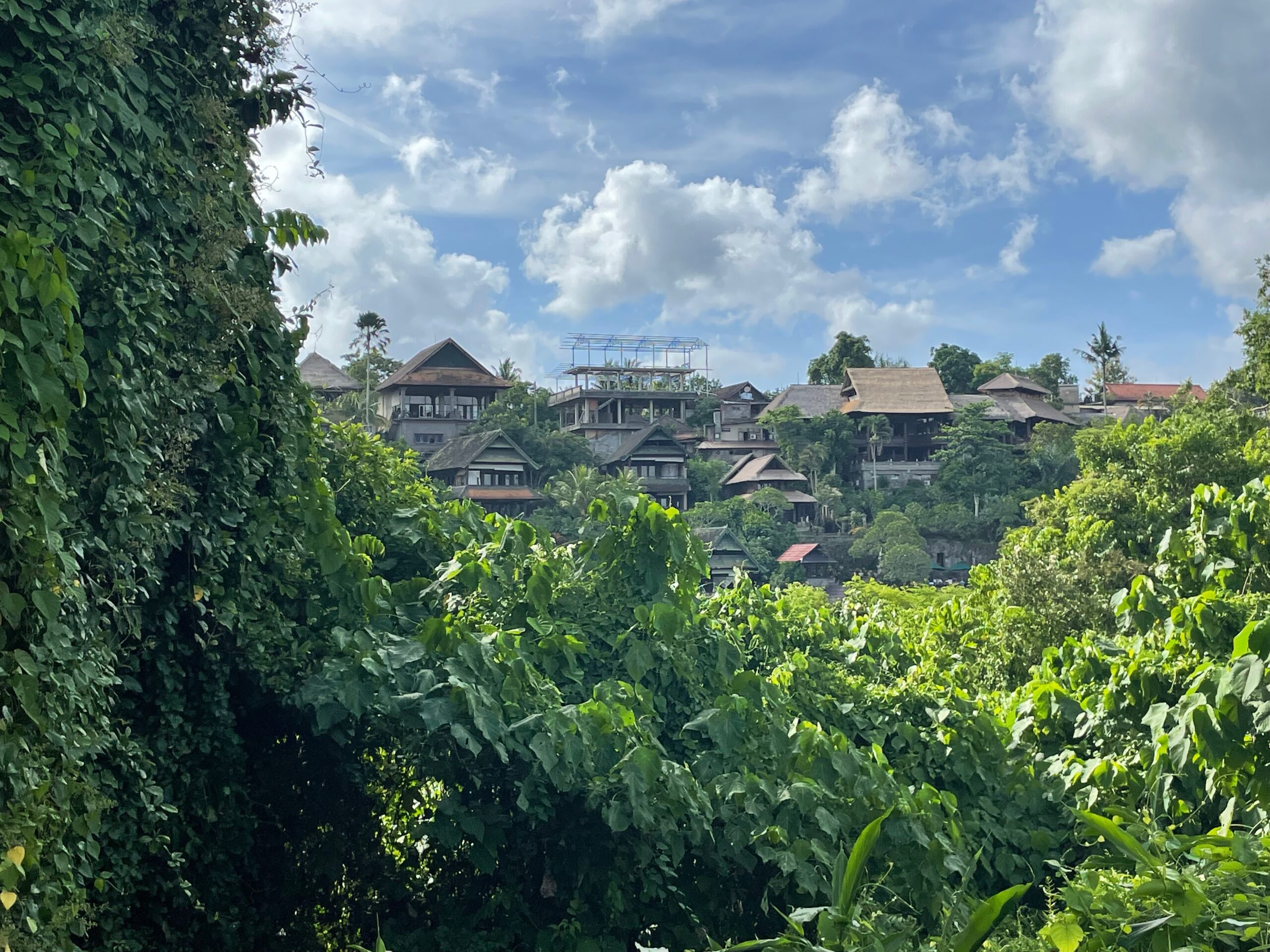 |
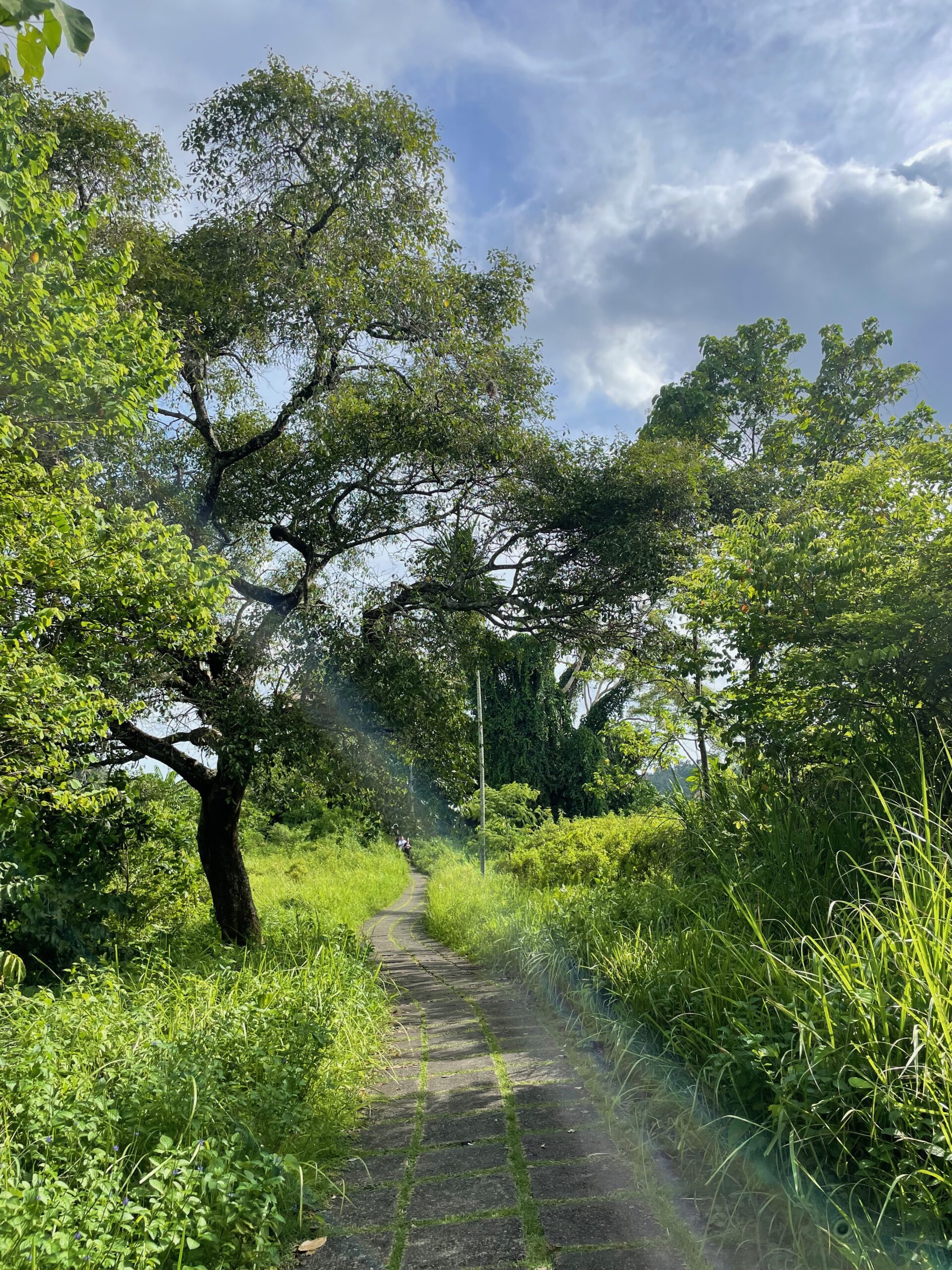 |
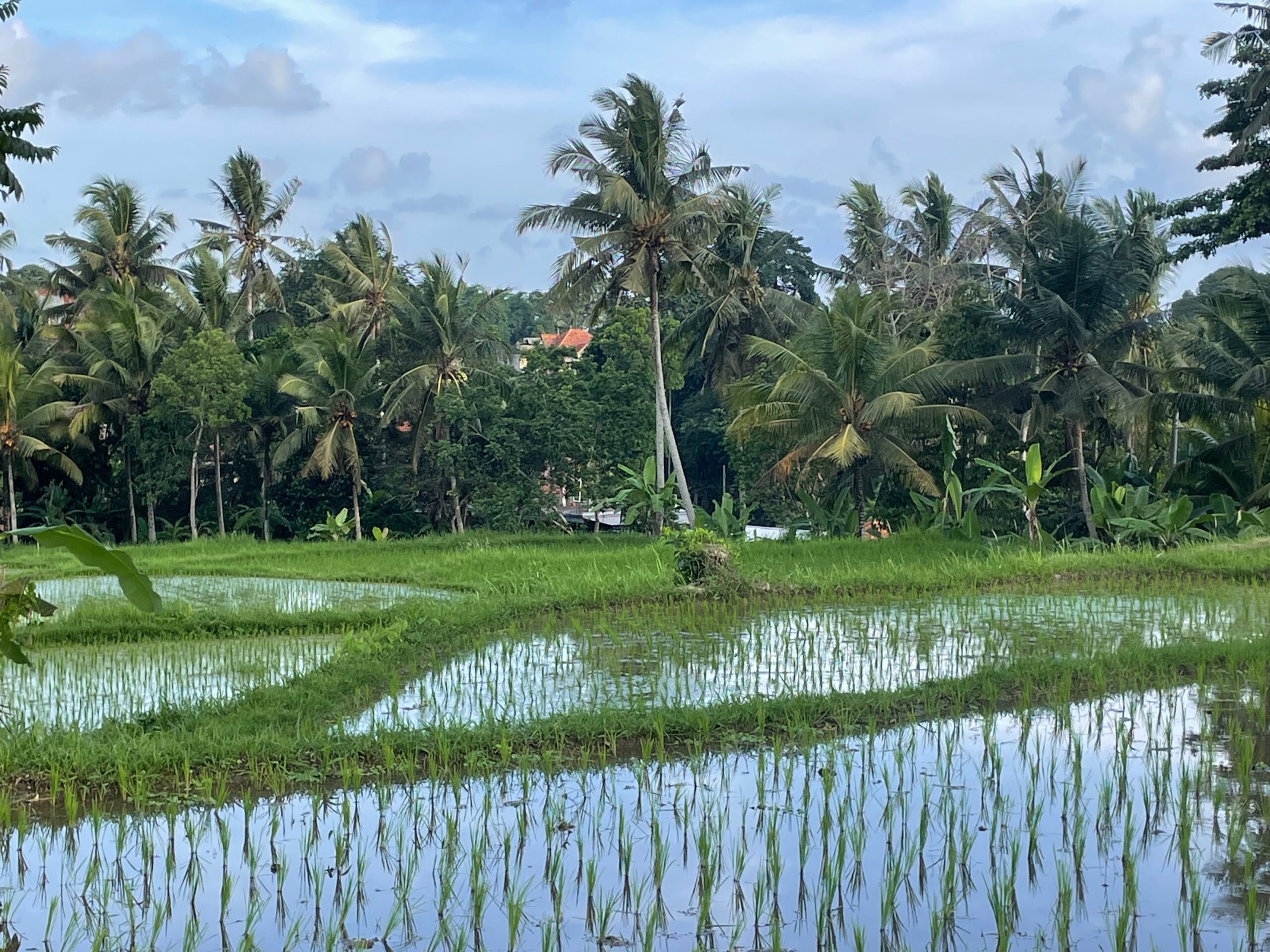 |
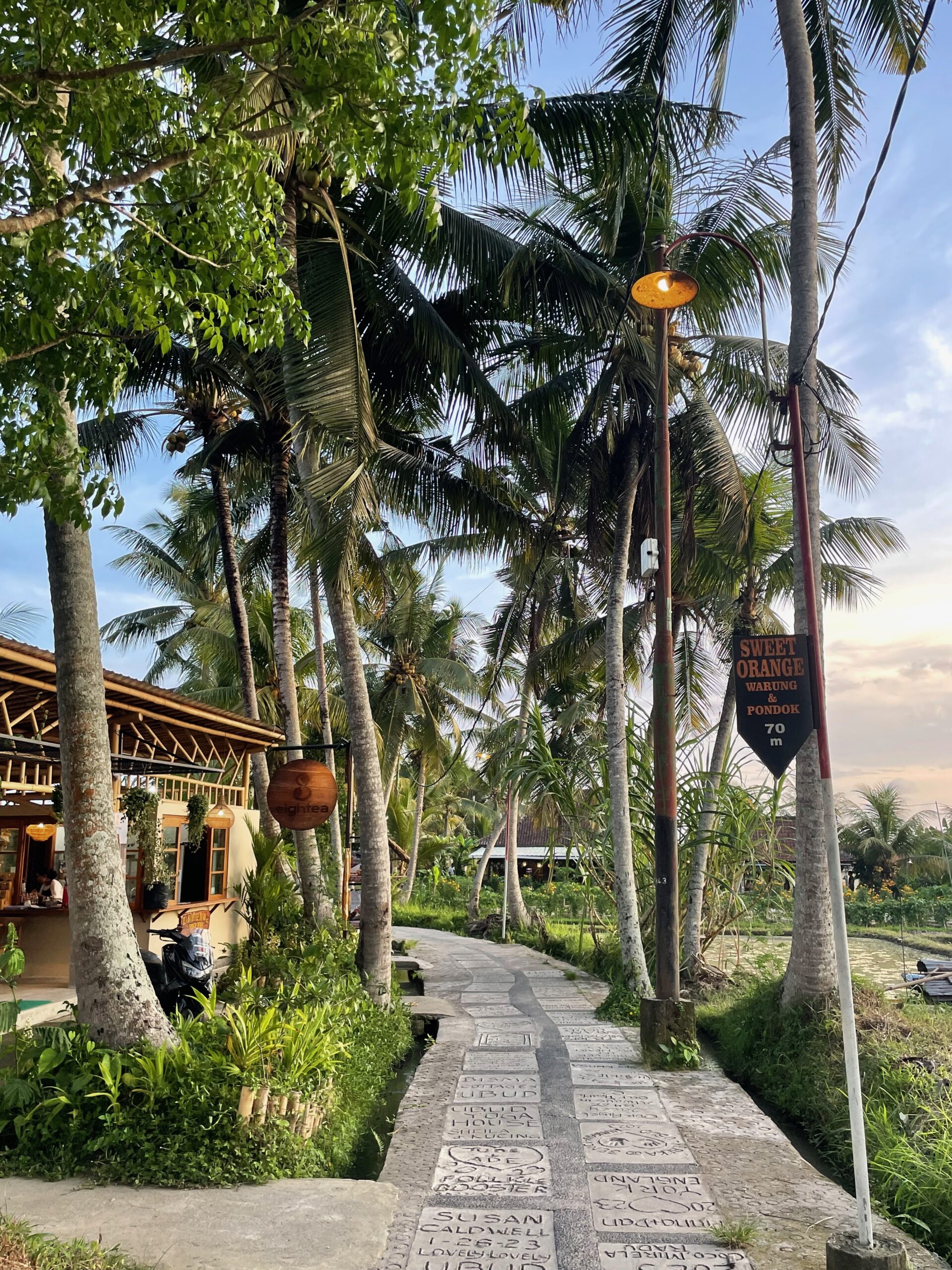 |
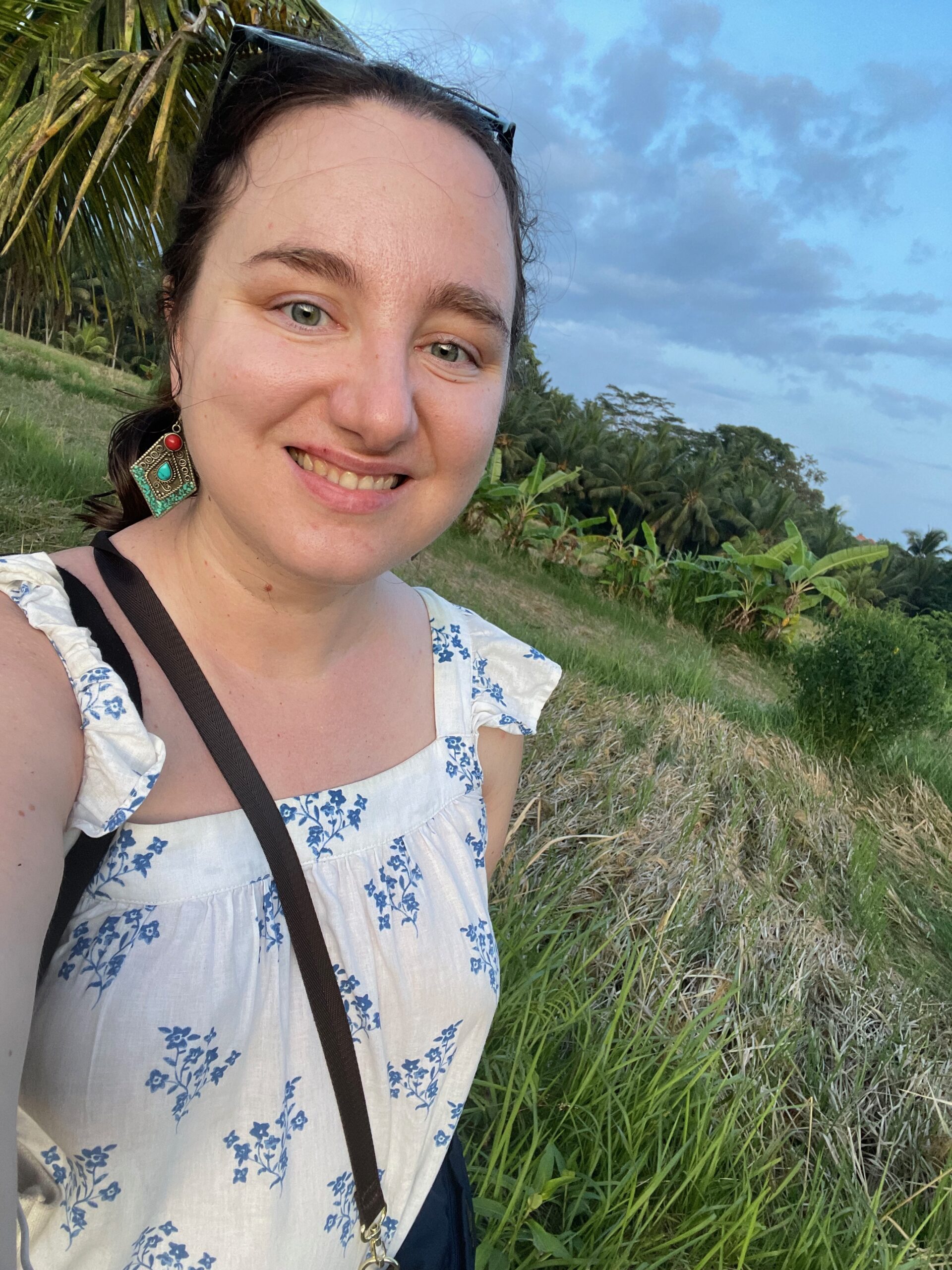 |
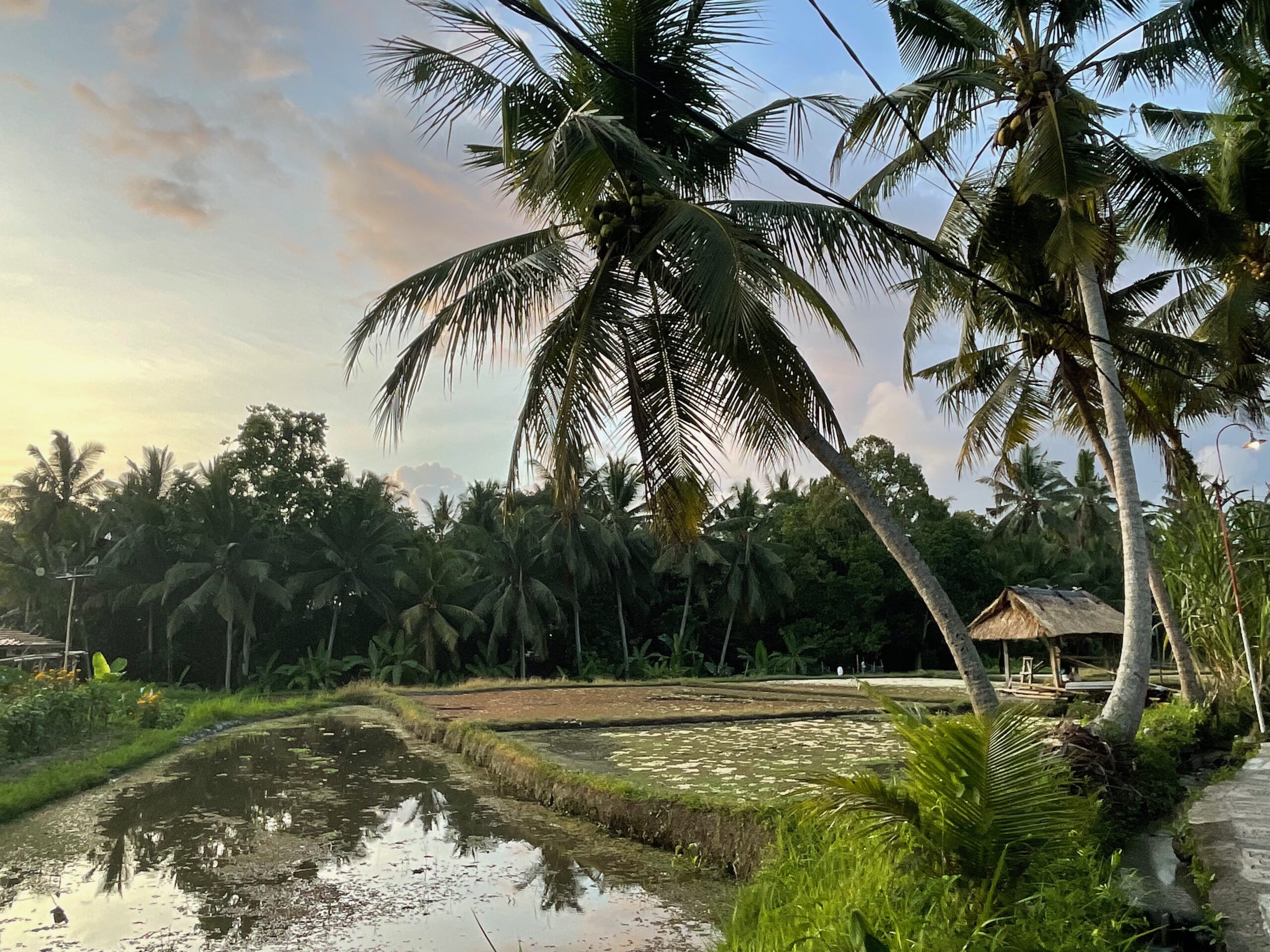 |
At the end of the day we visited few shops and the Ubud Art Market. In the center we have found plenty of great options for a Balinese dinner, we opted for traditional meat dishes since we knew we will have plenty of seafood next week on the coast.
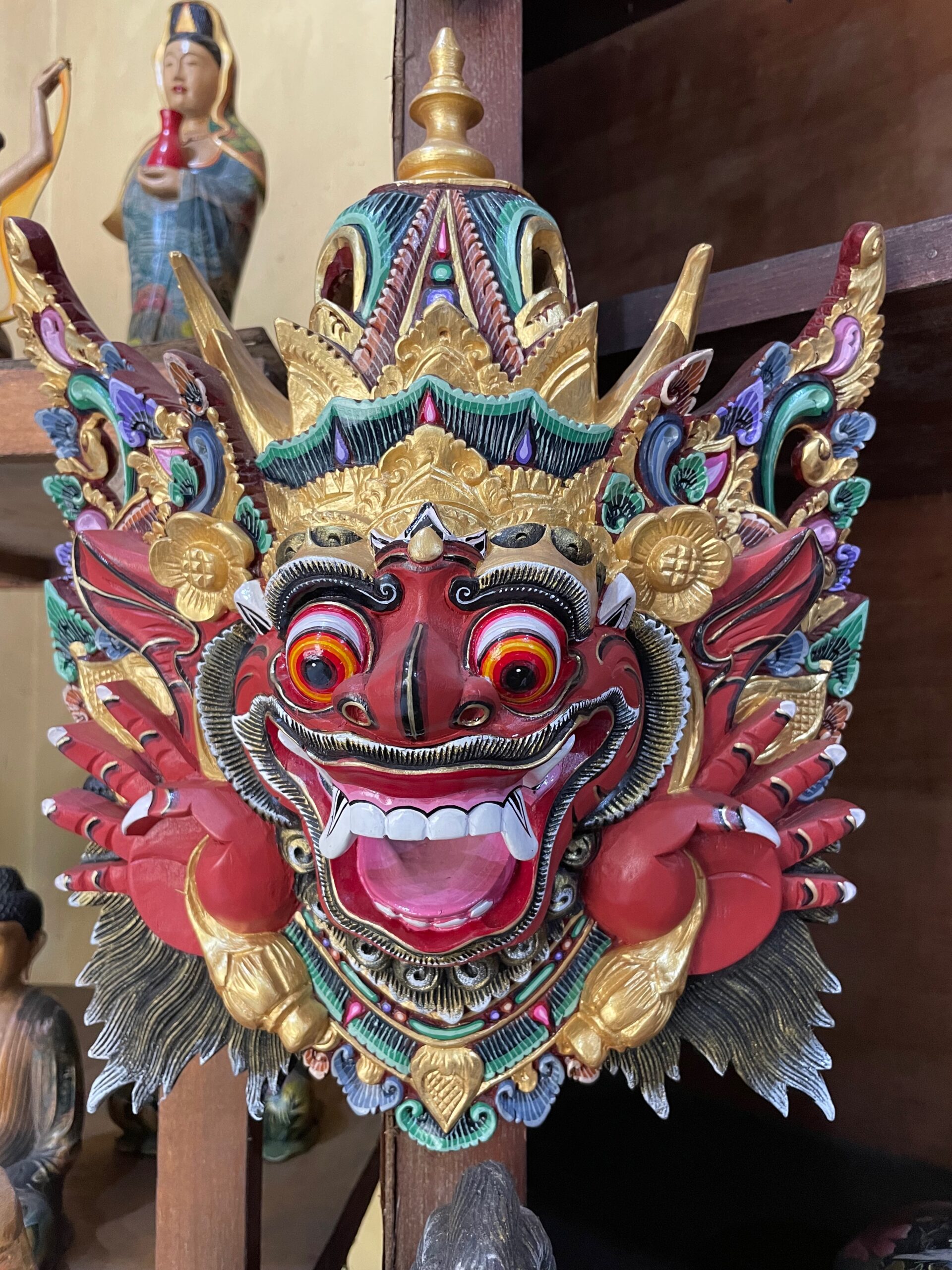 |
First day was also a good opportunity to speak with your Grab drivers/ ask in the hotel for prices of scooters, renting a car or a driver for trips around the island. Normally, you can make arrangements for the next day even late in the evening which gives a lot of flexibility.
Day 2 (Pura Tirta Empul Temple, Pulina coffee plantation, Ceking Rice Terrace)
On our second day we opted for a day trip to famous Pura Tirta Empul Temple which is known to be Bali’s Sacred Water Temple. Indeed, inside there are several holy springs which are believed to have been created by the God Indra. The Balinese believe that the water is sacred and has the power to purify those who will take a bath. Even if you’re a tourist you can immerse in the water. Inside of the temple we saw a lot of locals entering the holy springs (we decided to just walk around). Apart of the holy springs, there is a complex of religious pavilions, however, you can’t come very close if you’re not going to pray. At the end we were a bit surprised by the lack of internet at the exit of the temple. We came to Pura Tirta Empul with a Grab car and since we had no reception we couldn’t order another ride to the next destination. There was a lot of locals who were very active to convince us to their service (which was overpriced), however (another surprise) the fair prices had in fact taxi drivers stationing in the parking area.
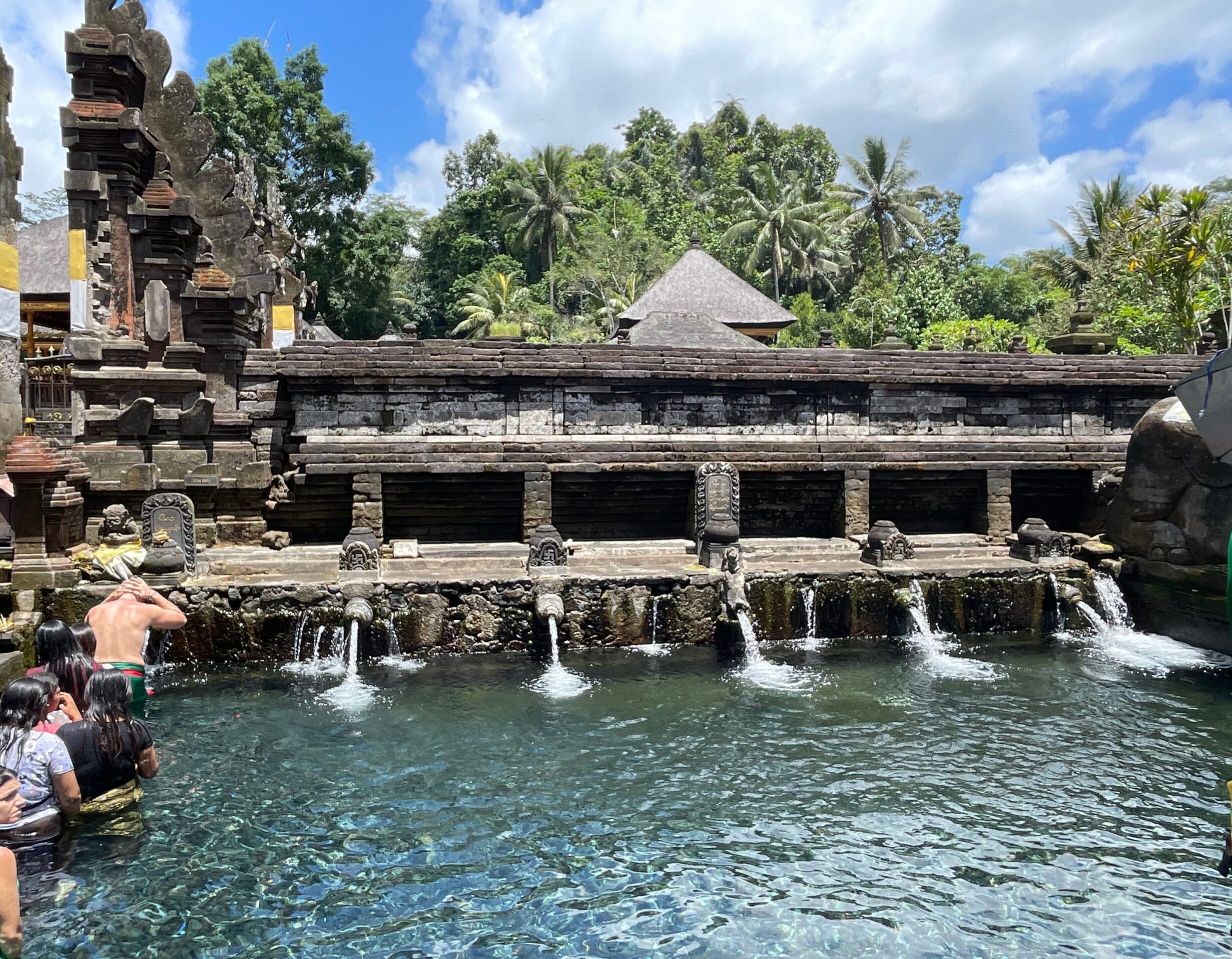 |
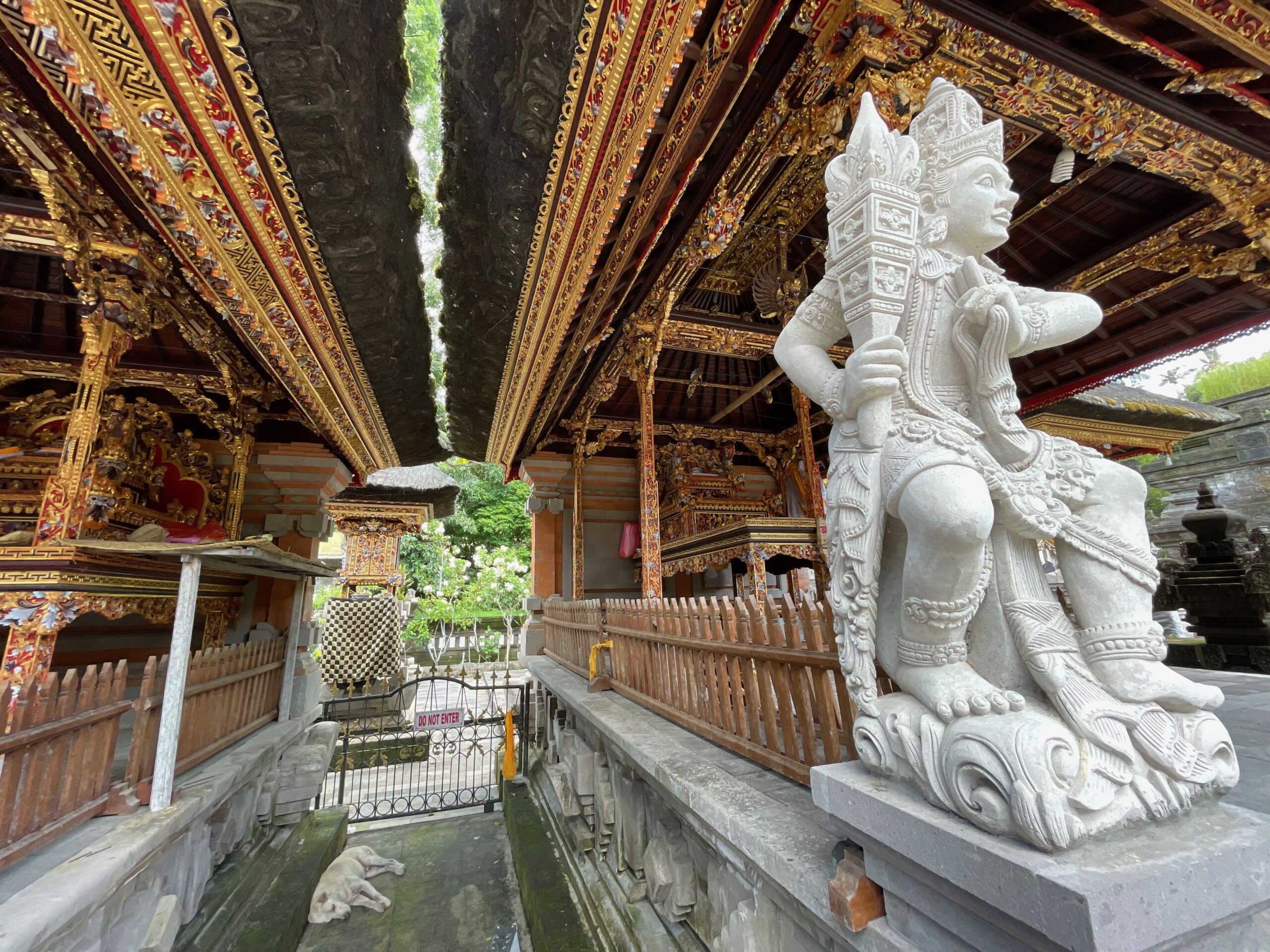 |
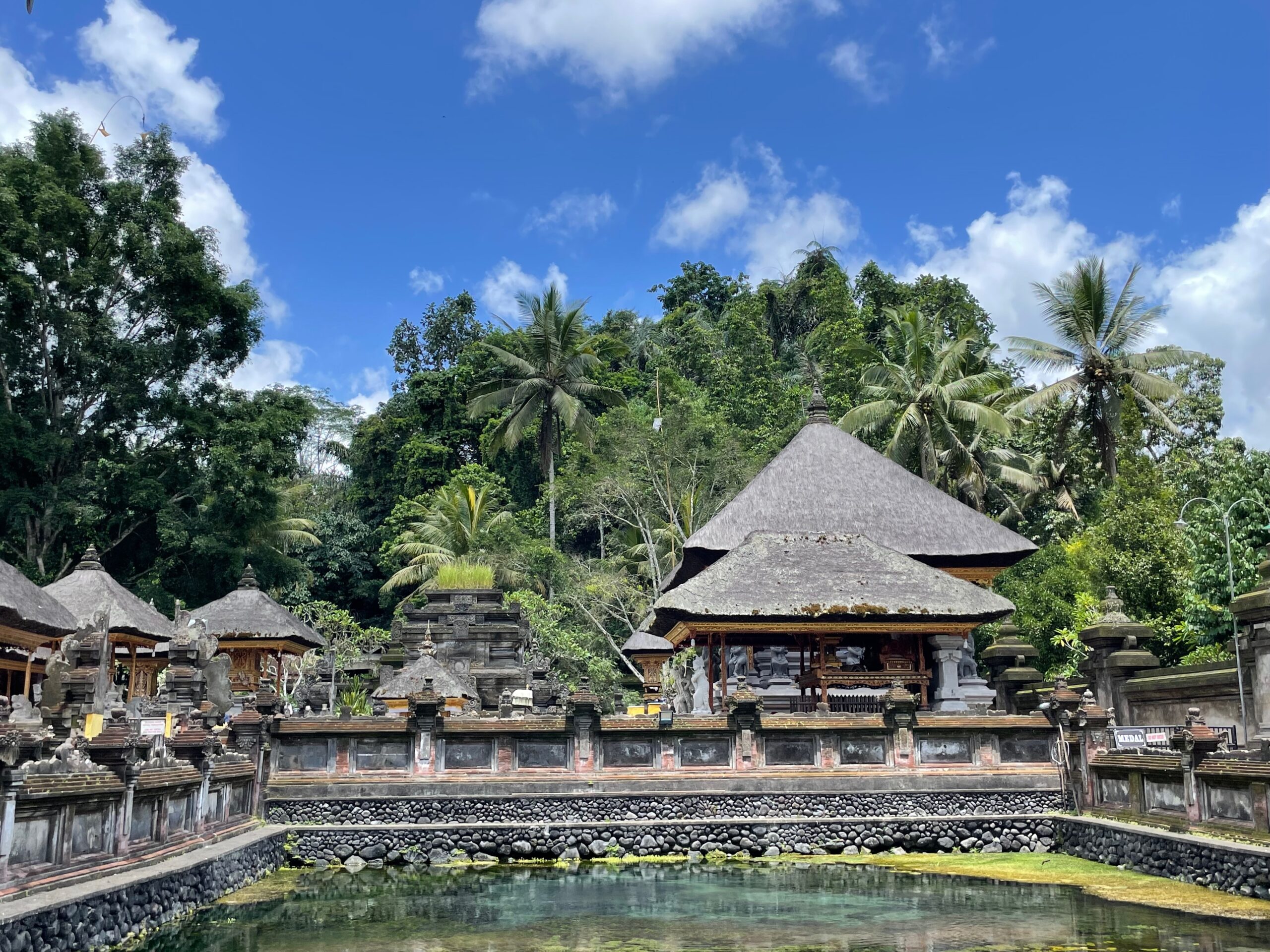 |
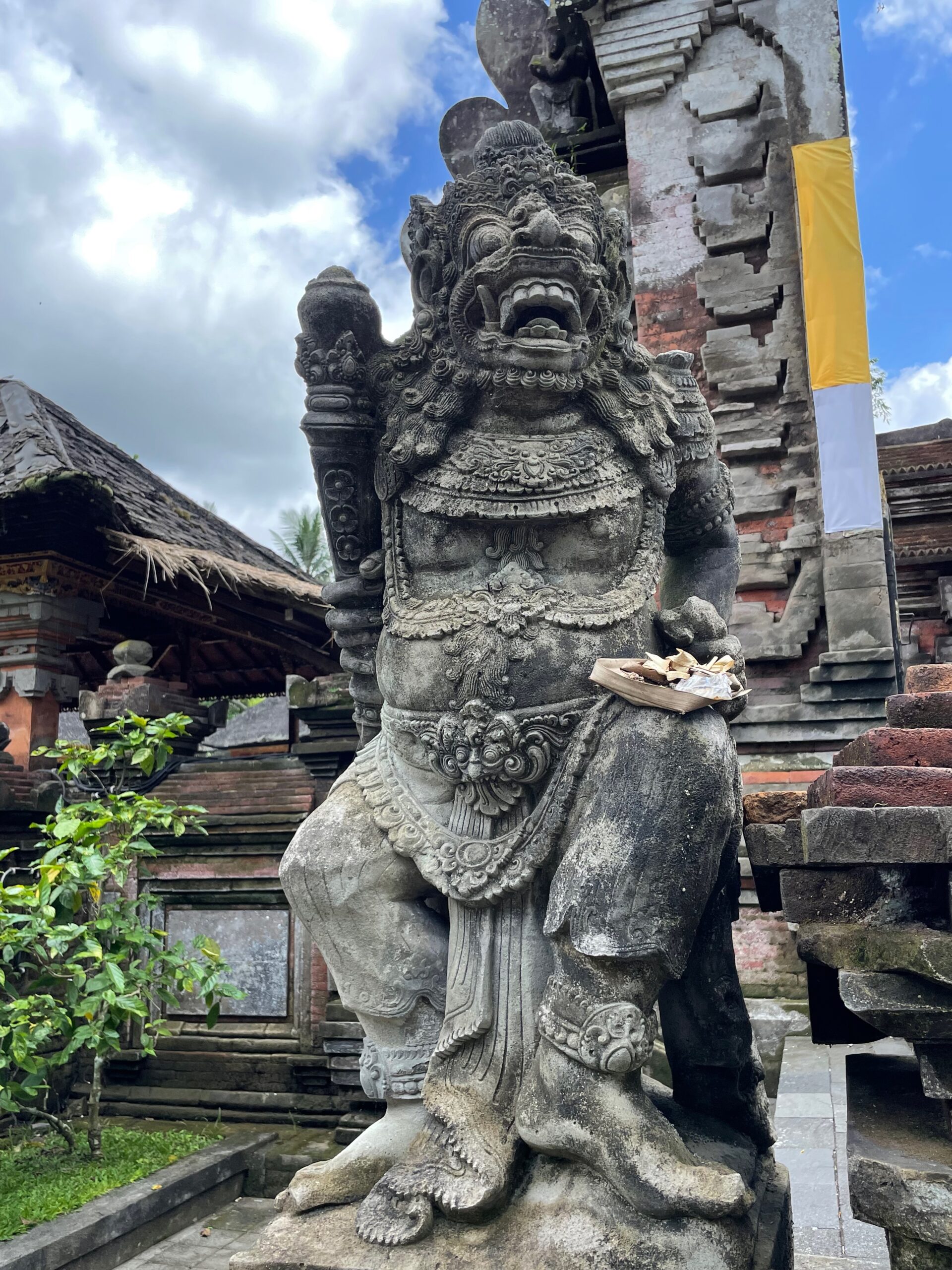 |
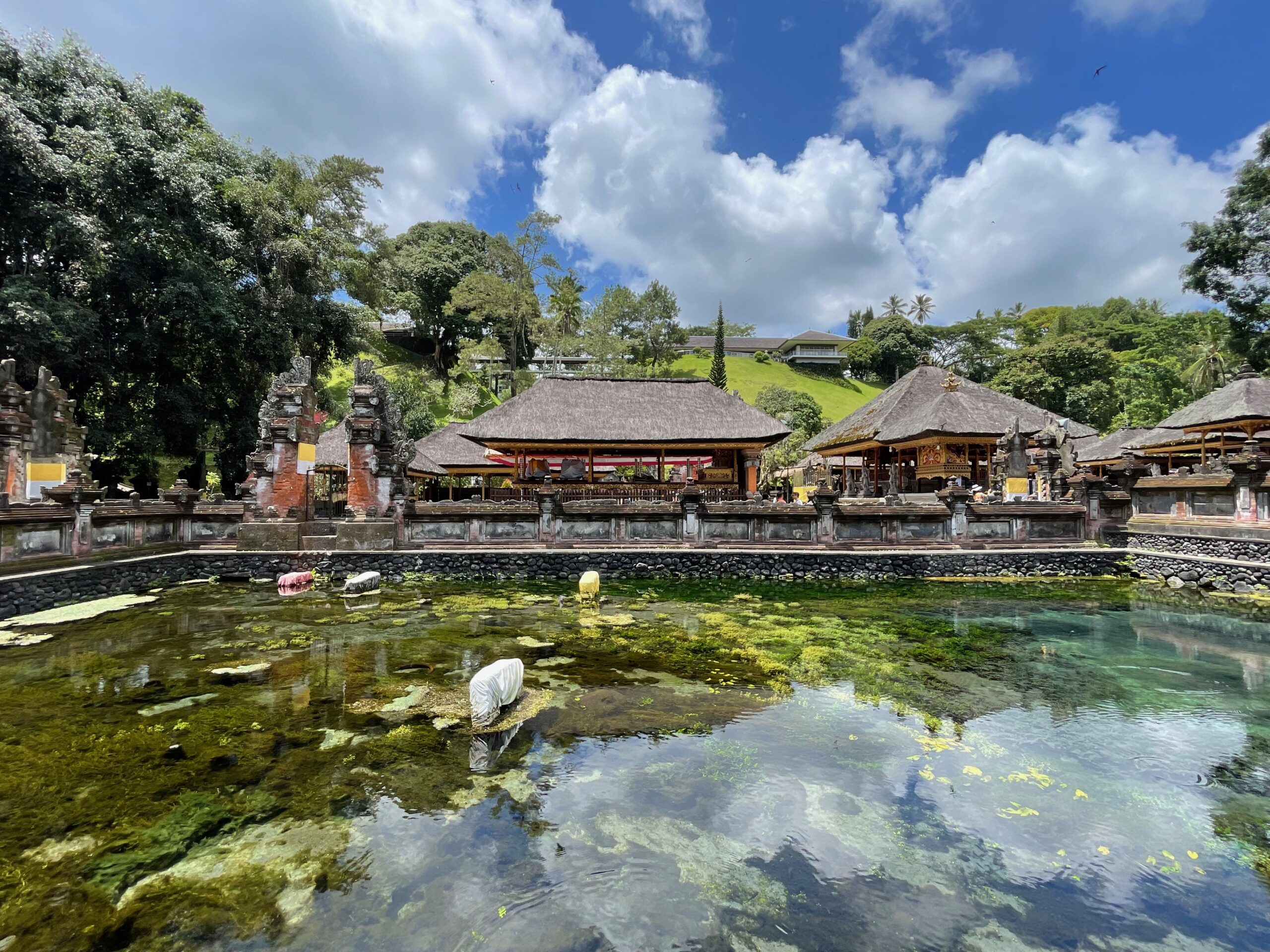 |
We took a taxi to Pulina coffee plantation to try some of Balinese and Indonesian coffee. There is few coffee plantations open for visitors in Bali, however, we chose Pulina due to its proximity to scenic rice terraces which wanted to see afterwards. To be completely honest, I was hoping that there is a small coffee plantation in Pulina premises which one can admire from some small terrace when sipping from your own cup of coffee. However, the concept was more ‘standard’ and similar to visiting spices/coffee/fruit farms in tropical climate areas. The entrance is free, and the Pulina guide takes as on a small tour around the garden where one can see the coffee plants, see the spice trees and meet the civet – famous animal which eats the coffee cherries, partially digests them and then defecates. The fermented cherries are then collected and used to produce famous Balinese luwak coffee.
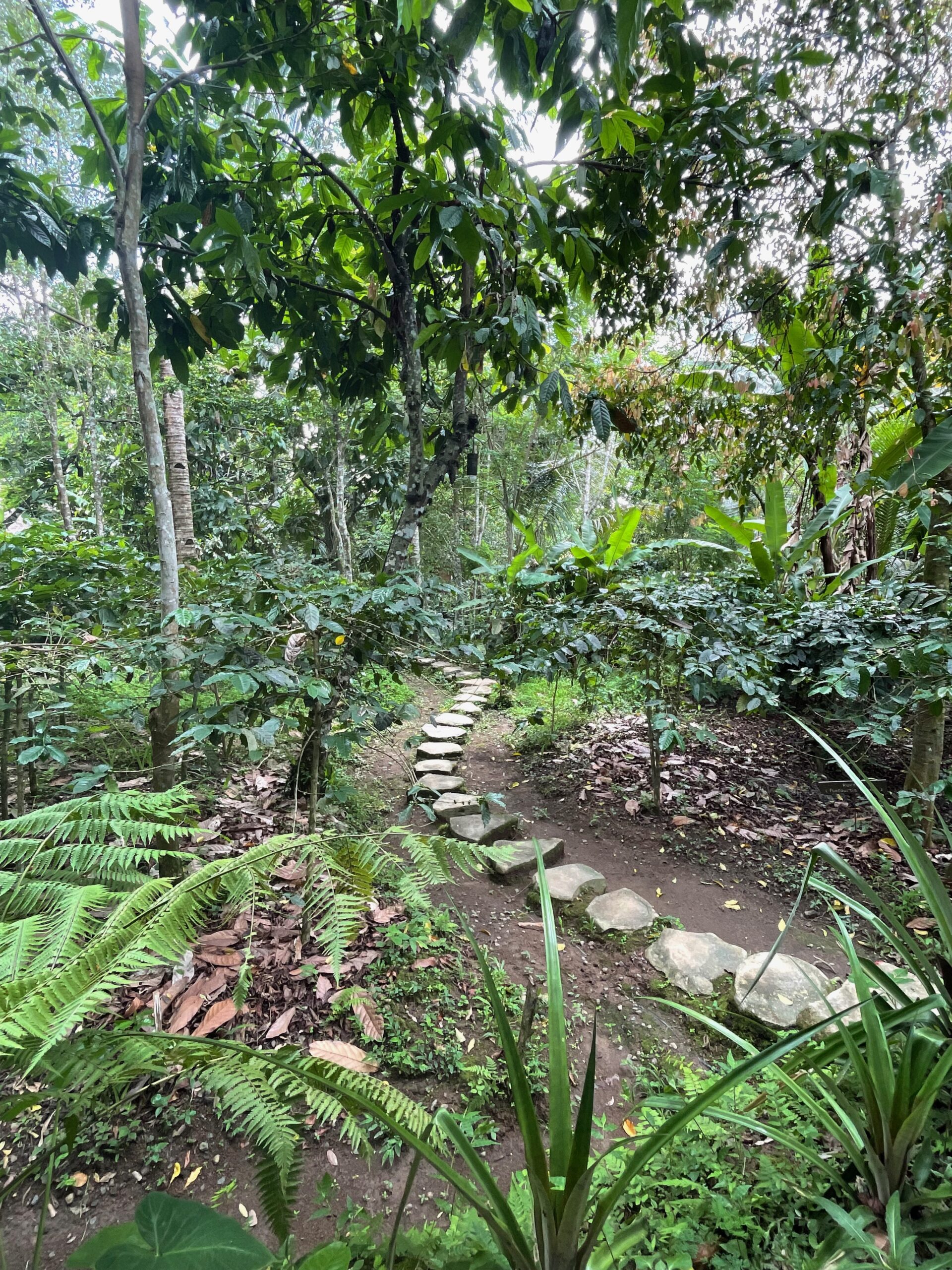 |
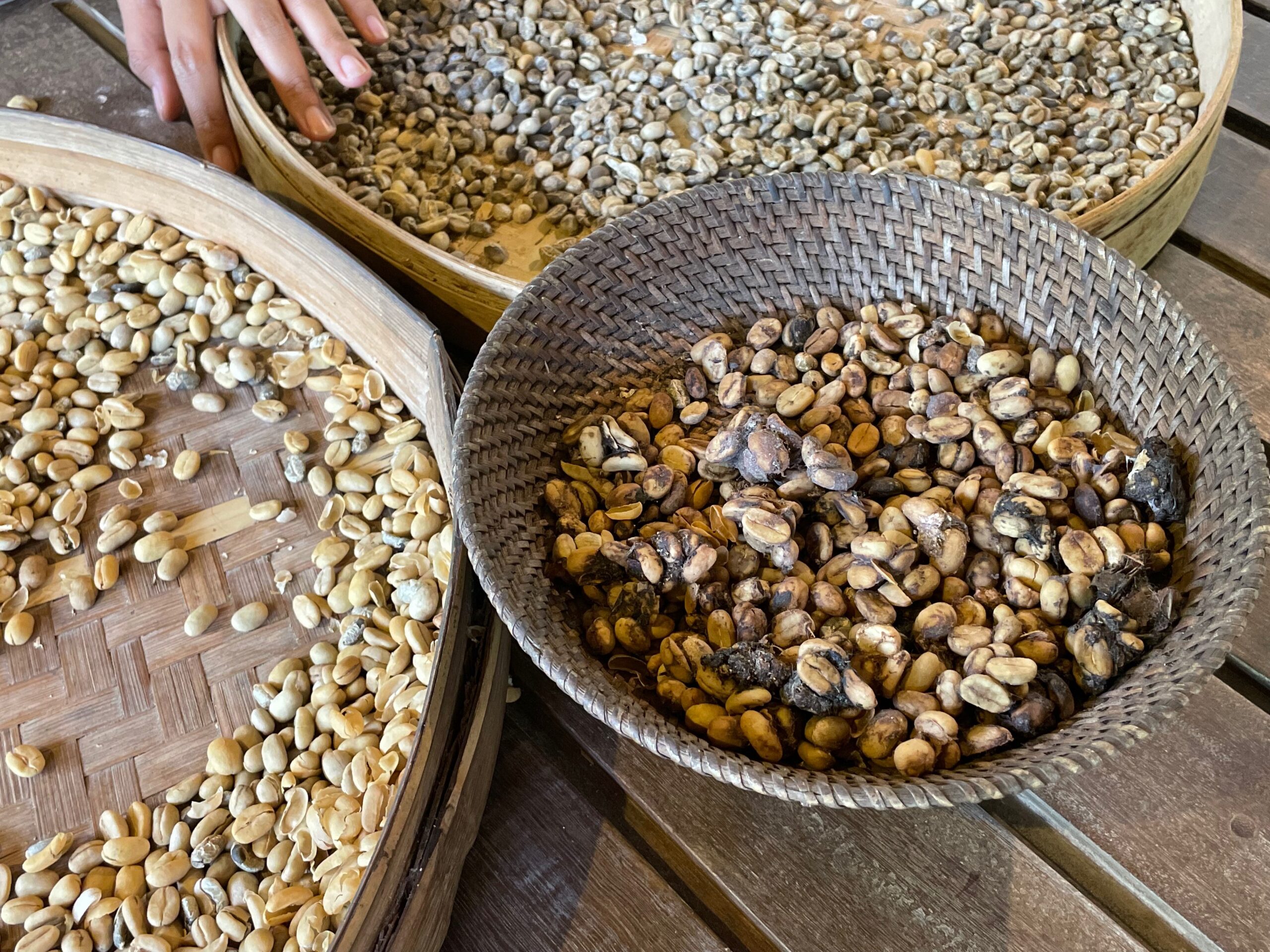 |
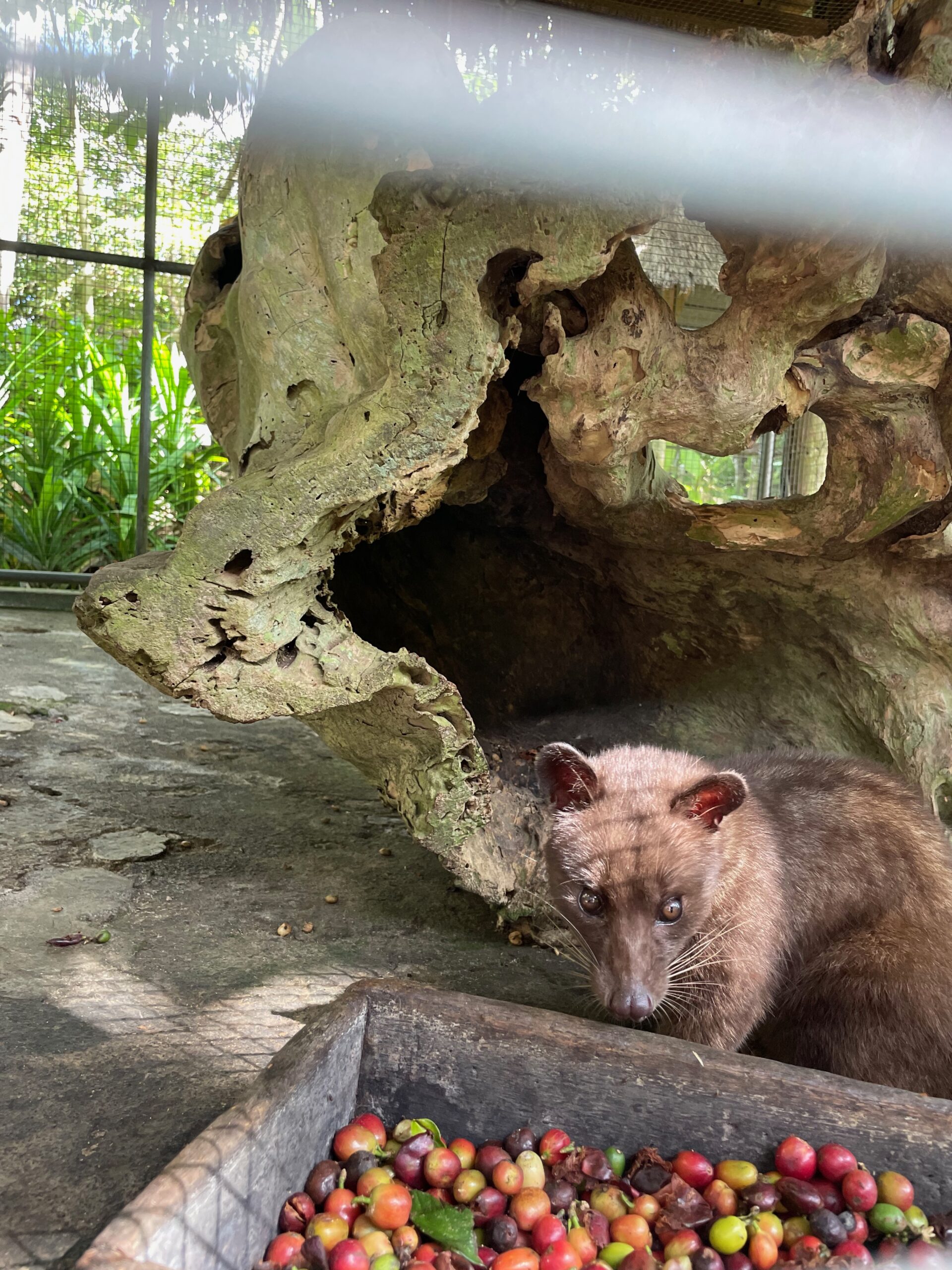 |
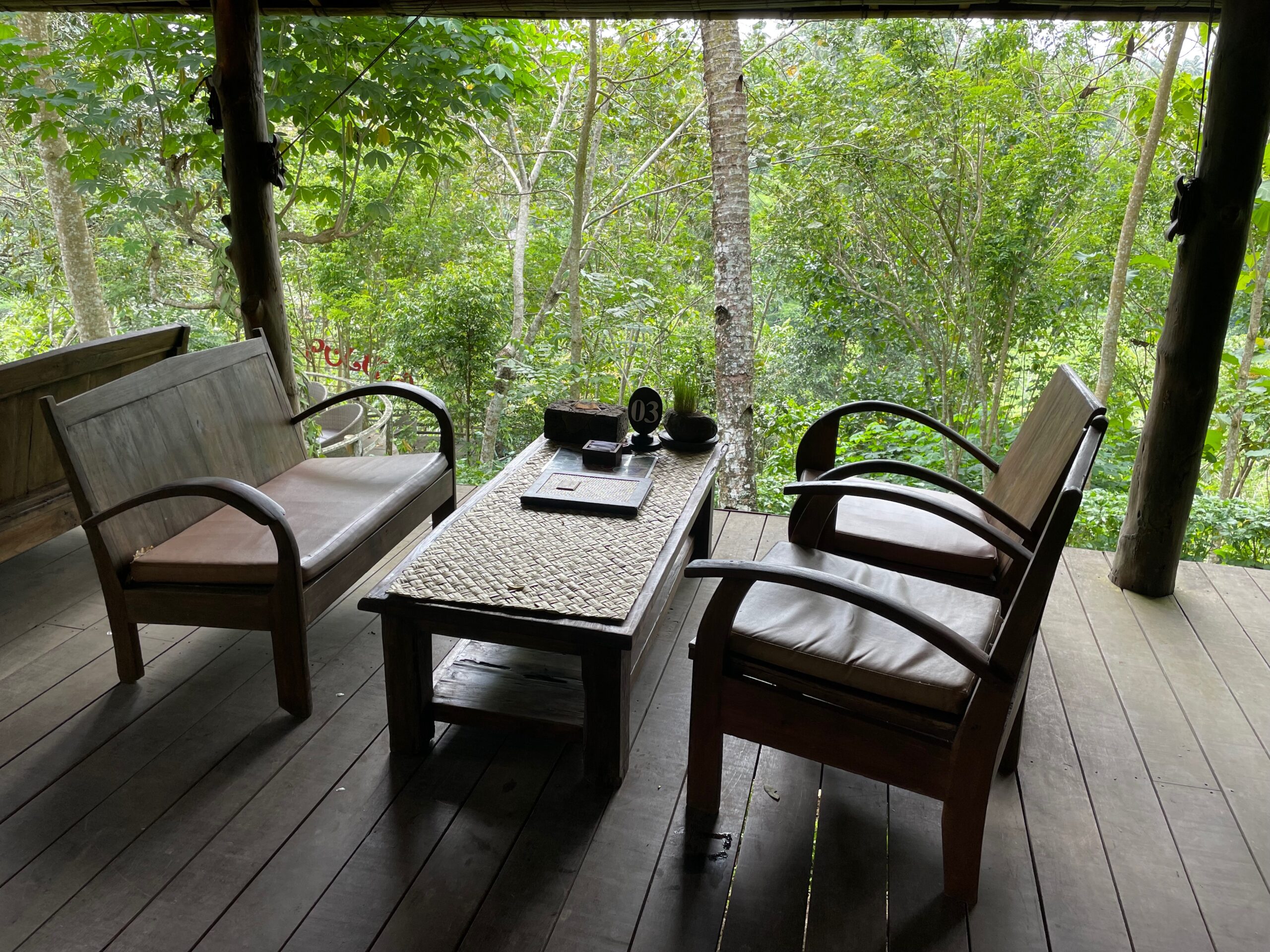 |
At some point there were few tents where the traditional method of coffee production was presented to us and at the end we were lead to the cafeteria where we ordered cup of luwak coffee. This was our first degustation of luwak so far and from the perspective of our second try in Ubud city center, I’d say that the coffee served in Pulina was a bit thin. However, this was a relaxing stop in the shadowy garden after a ride and visit to Pura Tirta Empul. If you never visited this kind of farm where one can see different plants native to tropical region, the tour around Pulina garden can be interesting. Otherwise, the experience is rather standard. At the end there is a coffee shop where you can buy luwak and other Balinese coffee (produced the standard way). I didn’t opt for any purchases since I knew I’ll search for coffee in bigger supermarkets in Ubud.
The last stop of the day was nearby located scenic Ceking Rice Terrace (Tegalalang). There is a small fee to enter the facility, however, the views are worth it. There are many attractions waiting for visitors who want to have a bit of adventure such as terrace rice swing and rope sliding activities. However, if you want to just absorb the scenic beauty of cascading rice fields, there is plenty of well-maintained small paths you can slowly walk to take pictures and admire the landscape from different angles. I recommend spending here 1-2 hours and if you plan the visit in the afternoon, then it’s worth waiting for golden hour for the amazing light, around sunset the area gets also emptier, the attractions close down and there is definitely less tourists so it’s also a perfect moment to have a more cameral and tranquil experience.
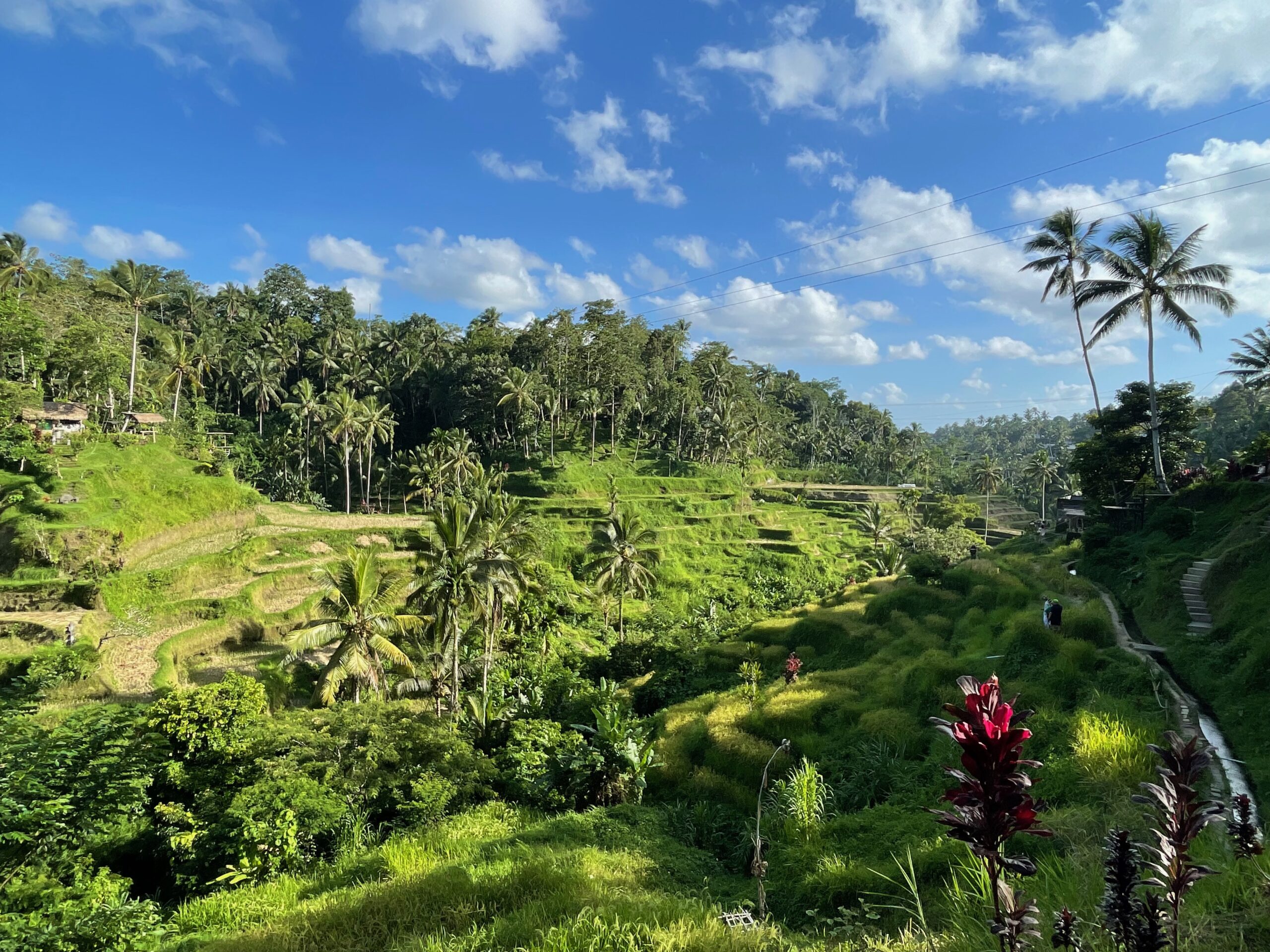 |
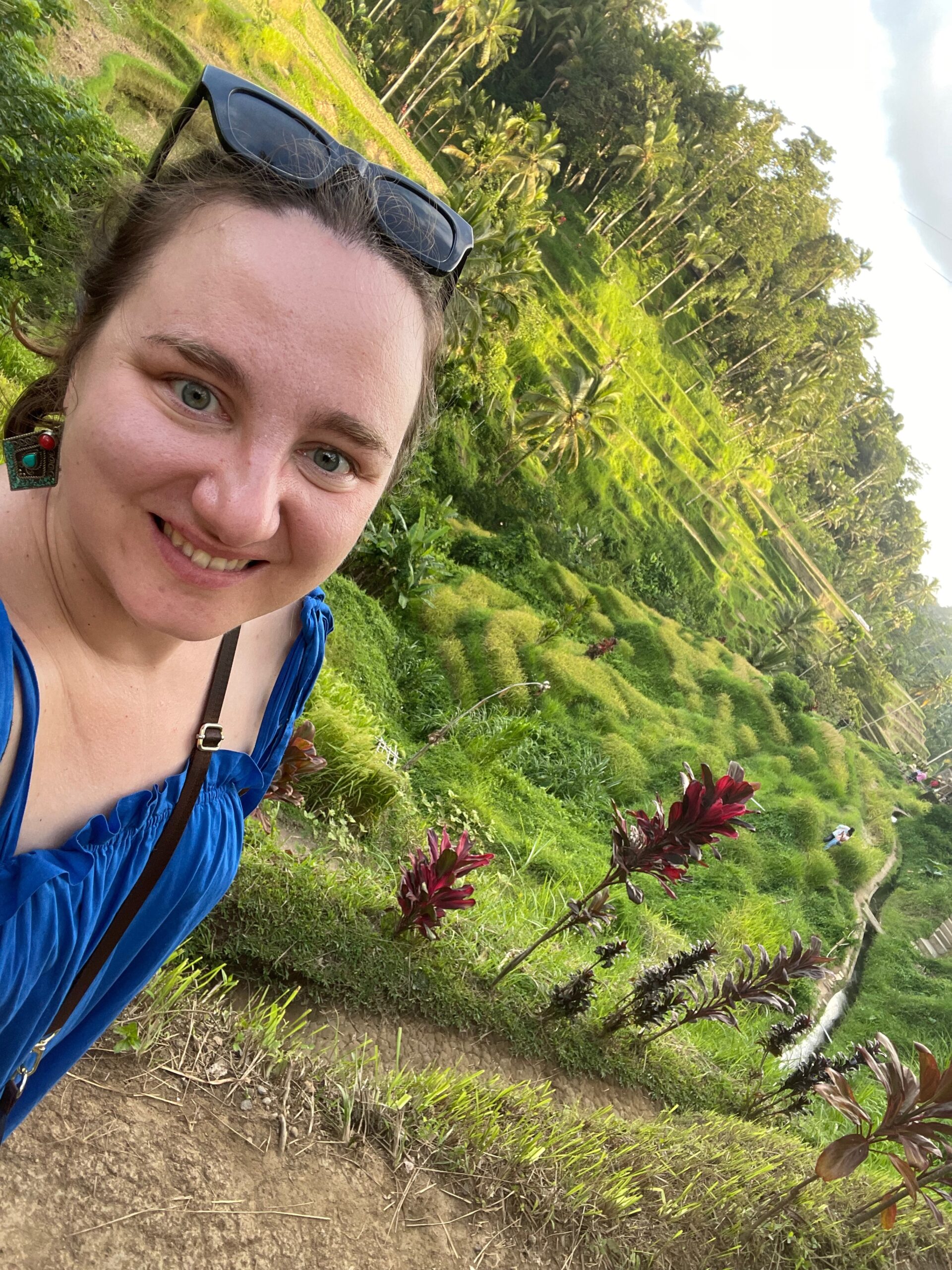 |
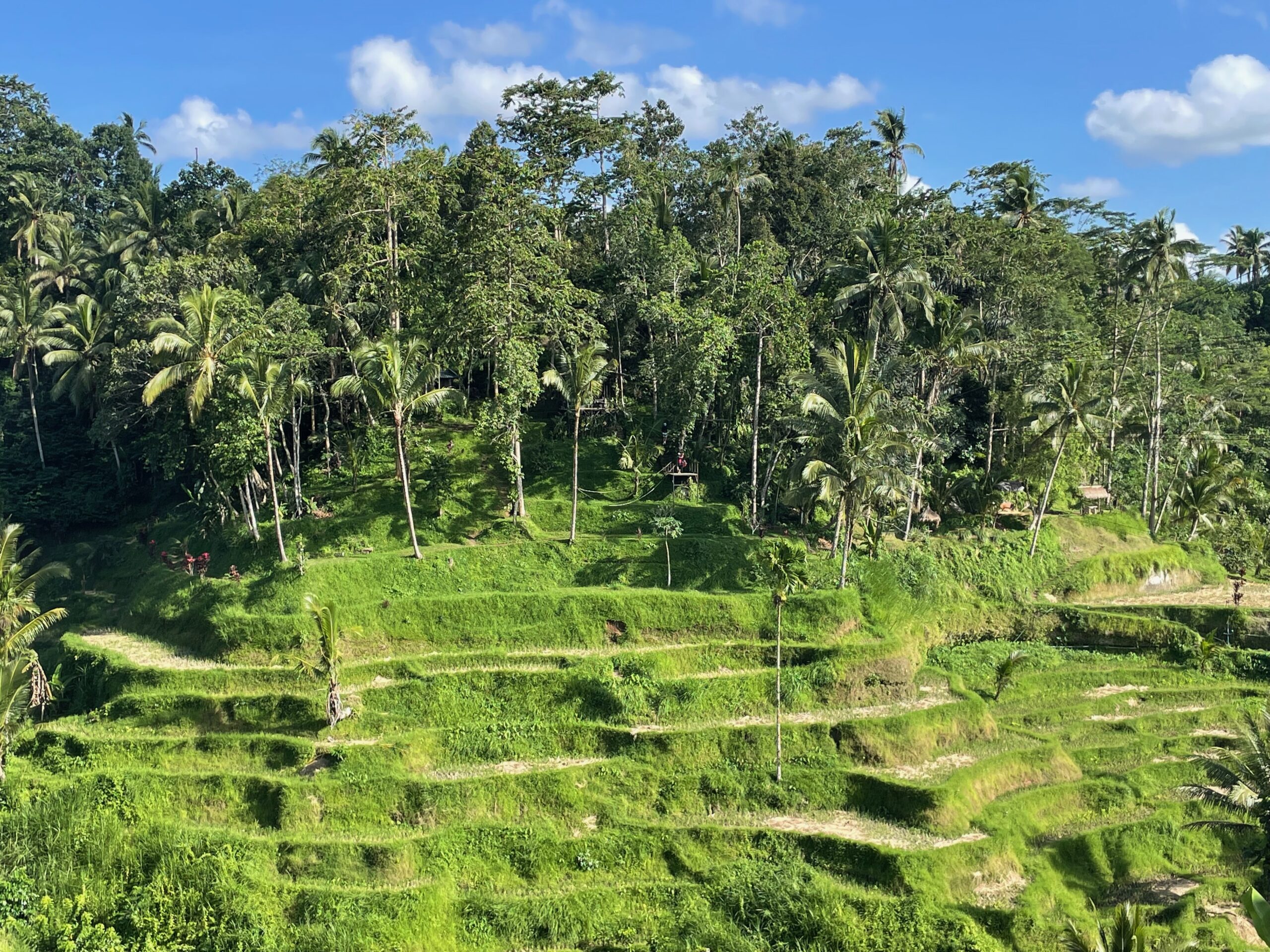 |
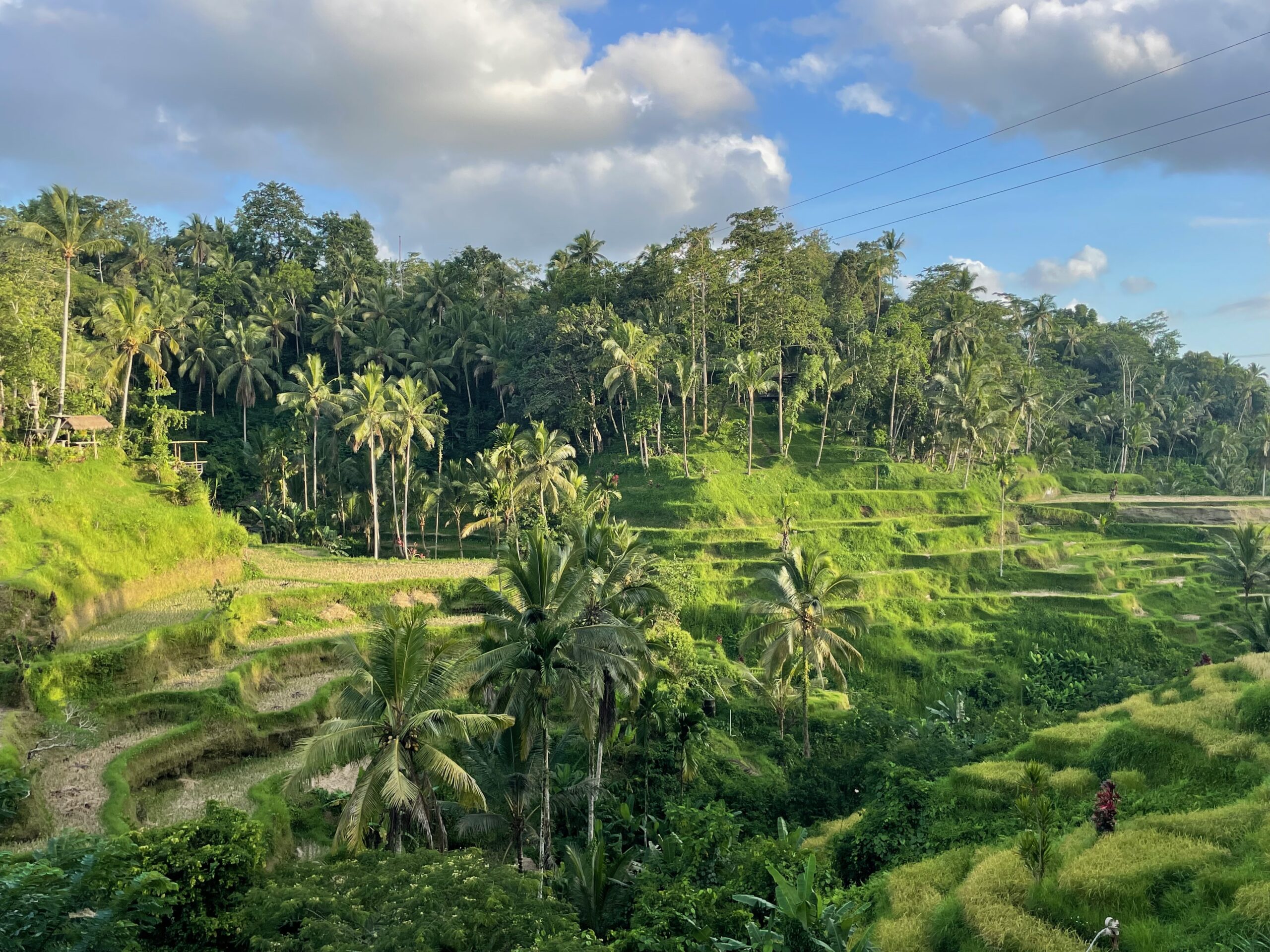 |
Despite the fact that the Ceking Rice fields are located around 10km from Ubud city centre, it took us slightly more than one hour to come back. The traffic jam in the evening is really serious since the Bali roads do not have in general a big capacity.
We have done this day without a scheduled driver, just ordering Grabs. Alternatively, you can easily do the route with scooter, even if I find the traffic a bit to hectic for an inexperienced user.
Day 3 (Kintamani village, Ulun Danu Beratan Temple, Banyu Wana Amertha Waterfall)
After two days spent in Bali, we gathered enough of information to schedule a full day trip further to the Northern Bali with a hired driver. We decided to arrange the ride with one of our drivers whose service we used the other day. In general, when moving around Bali, the drivers will ask you about your plans and often will offer they services, you can easily exchange with them the phone numbers or take their small cards with the contact details. I suggest to choose the drivers whose service appeared to be good during your scheduled ride, if they drive safely, have good reflex and are communicative, then the person can be a good choice. You can take few contacts and then text the drivers to share with them your itinerary and see their prices. From our experience, the prices were similar but lower than suggested by the hotel or from tour agencies. If you plan a full day trip to more remote parts of the island I suggest to hire a driver rather than drive yourself (especially by small scooter).
We have decided to start our trip with Kintamani village to admire beautiful volcanic landscapes and in particular with a gorgeous view at Mount Batur. If you’re in adventurous mood you can rent a jeep car and have a ride along the lava fields. We however, sticked to the small café on a viewing platform to take in the surrounding beauty.
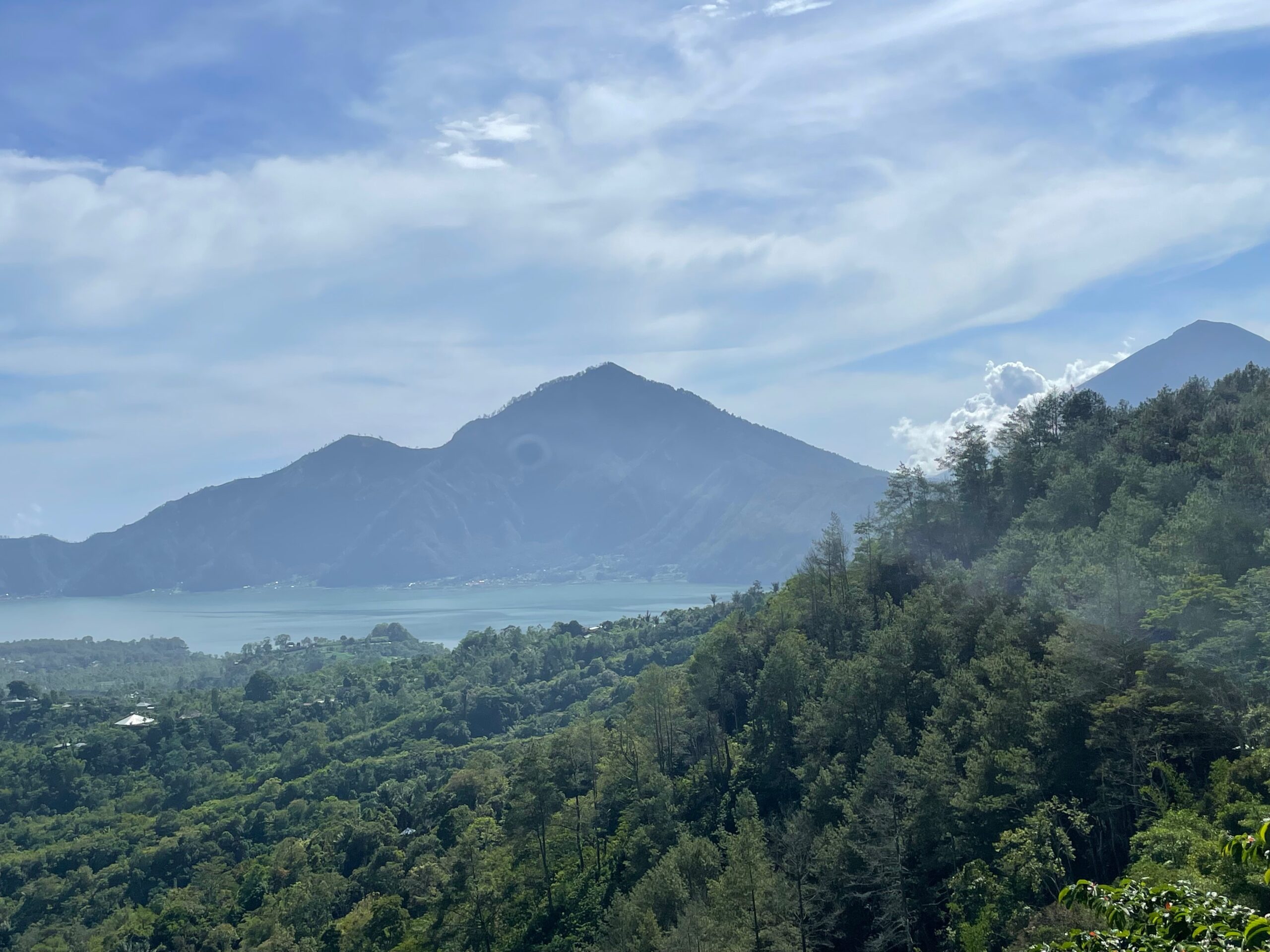 |
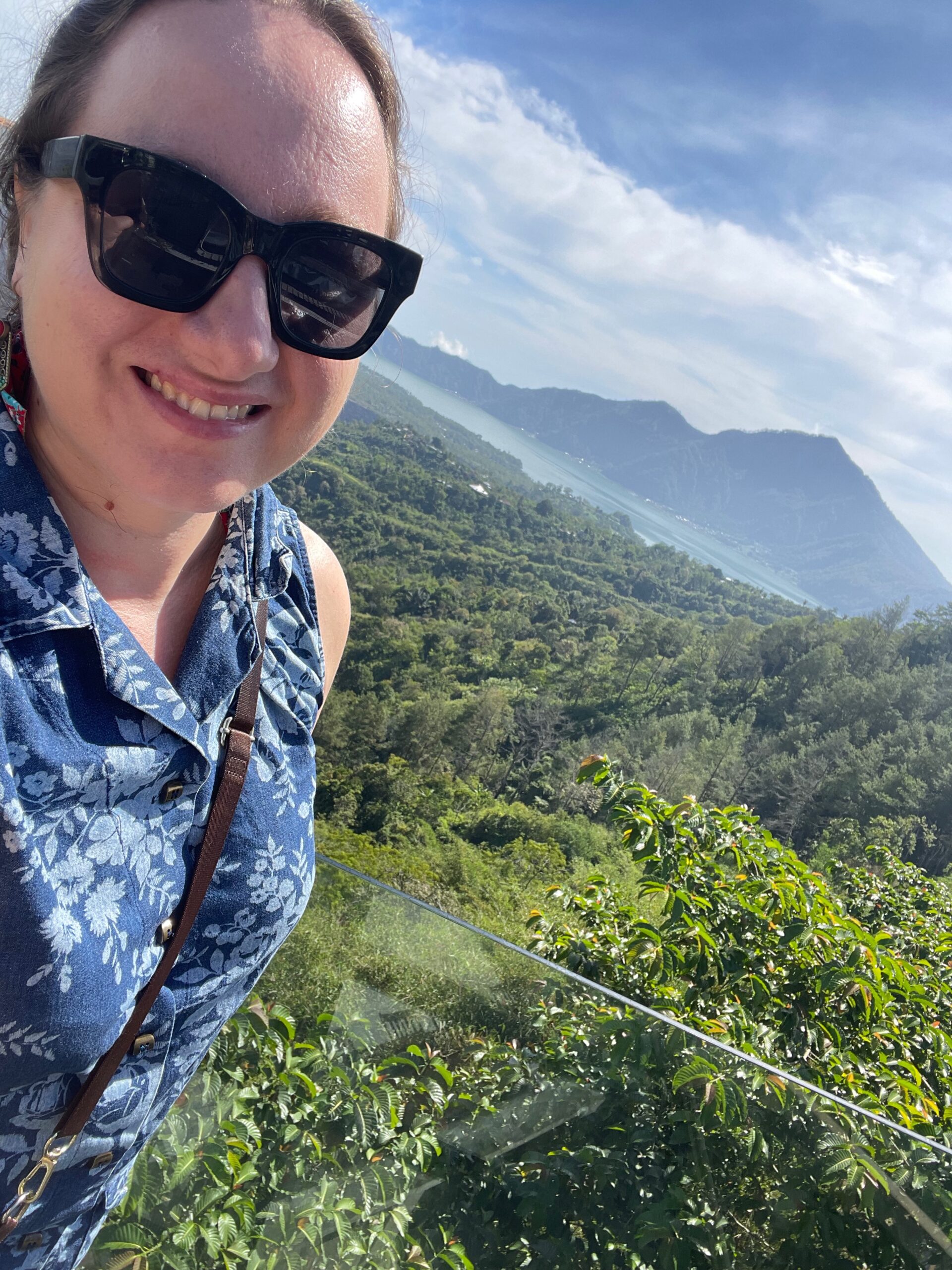 |
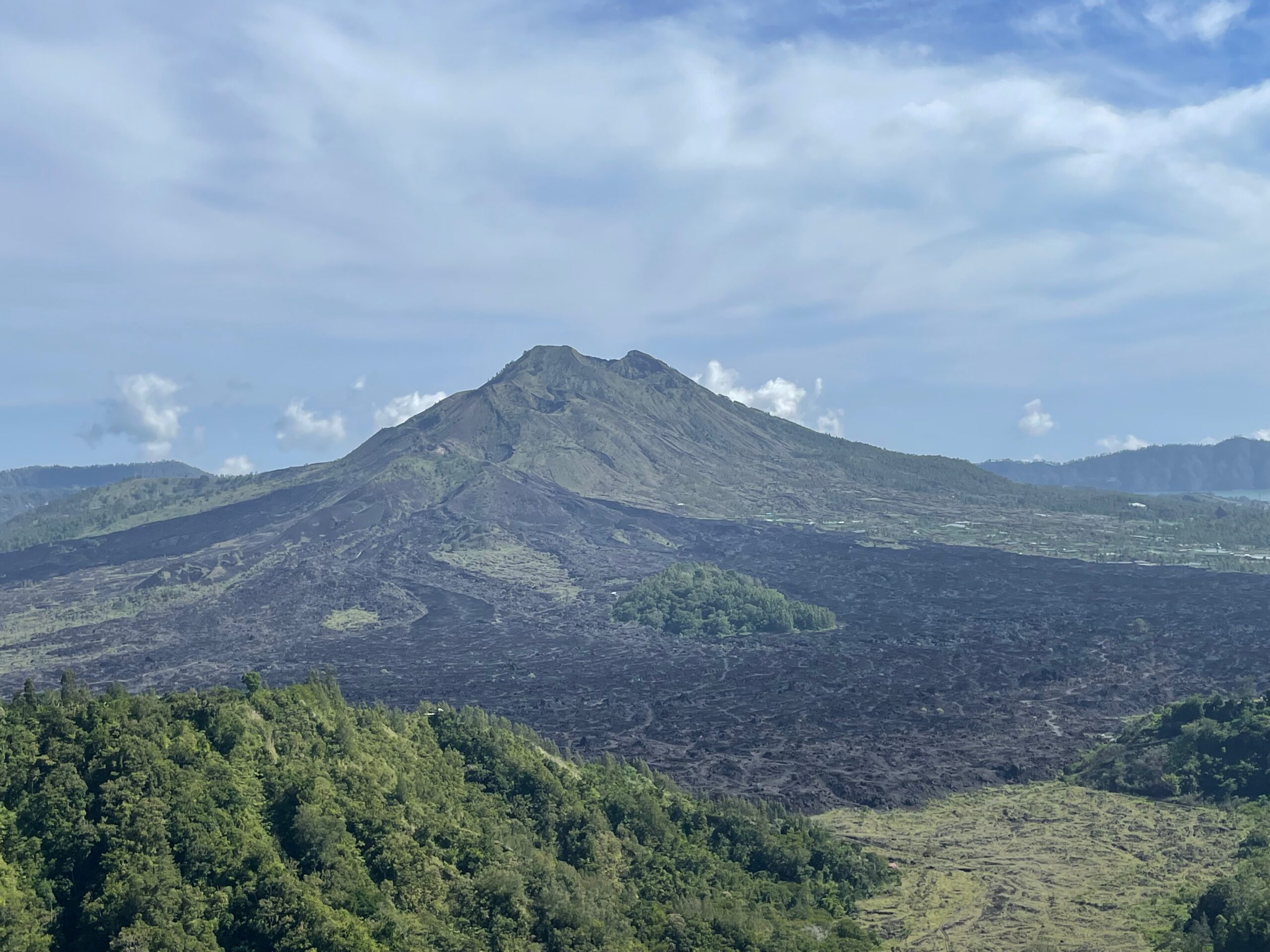 |
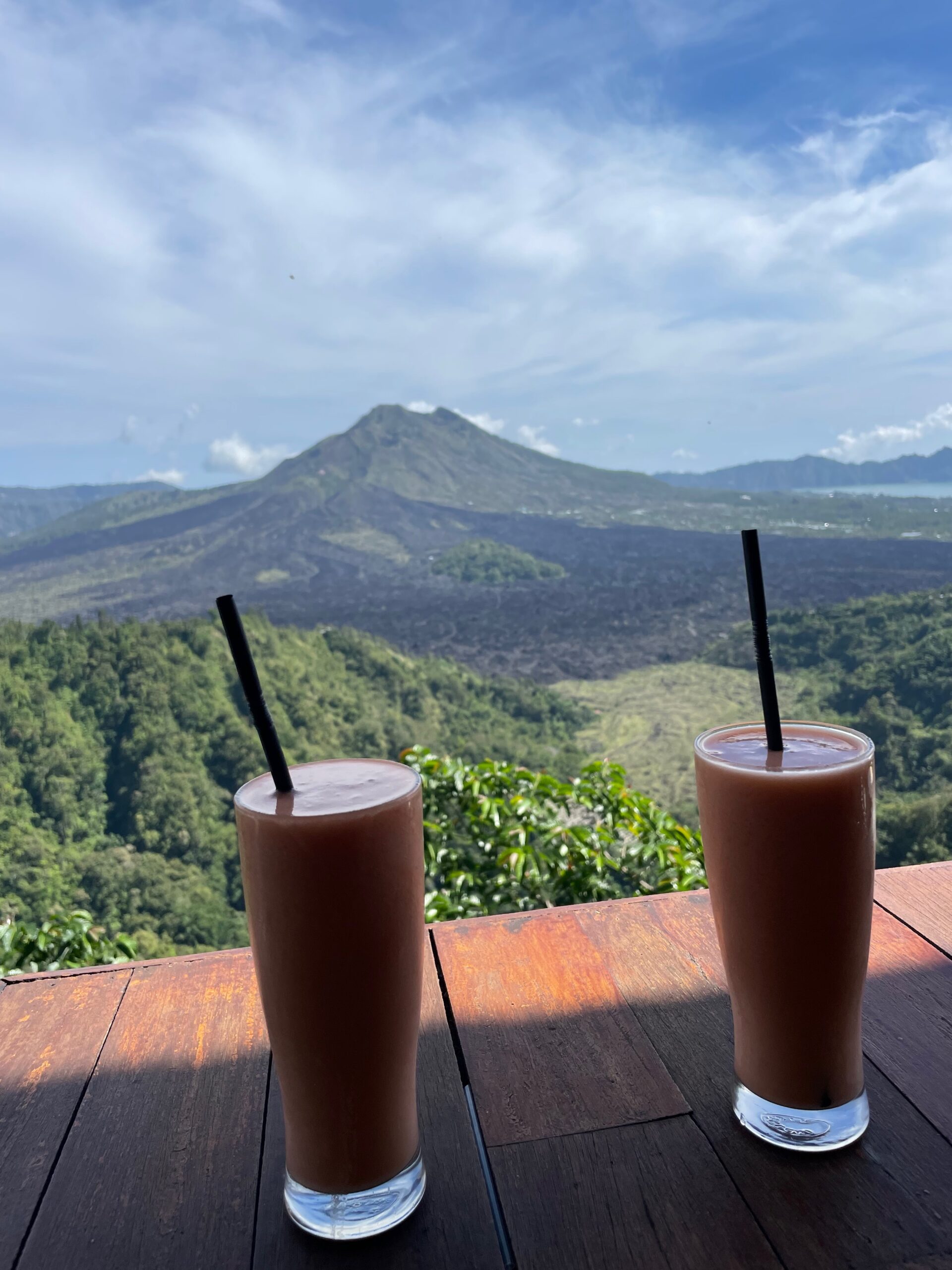 |
The second part of our itinerary was a bit unusual and our driver told us that in our plan we combined spots from two different excursions which are usually suggested for tourists. We have decided to move from Kintamani to famous Ulun Danu Beratan Temple which is the temple complex located on shores of Lake Bratan in the mountains near Bedugul.
Here, I feel that one should mention a bit more about Bali roads. When you look at the map, the distance between Kintamani and Ulun Danu Temple is merely 54 kilometers so it’s not an overwhelming distance, however, the actual ride takes around 2 hours in practice. This is because the roads in Bali, especially in the Northern part are quite narrow and our ride went through some mountainous roads where you can’t go very fast.
Nonetheless, I was not very regretful about this leg, because the views from the car were beautiful, we were passing some small villages and less touristy parts of Bali which was refreshing experience. For me, the 2-hour drive was part of the sightseeing on its own and I don’t discourage anyone from following similar itinerary.
After 2 hours of very scenic ride, we got to Ulun Danu Temple which is a major Hindu Shaivite temple in Bali and it’s frequented by both Indonesian visitors as well as foreign tourists. The complex is very busy, with shrines which can be seen from outside only for non-prayers as well as many more touristic attractions such as animal stand where one can take pictures with bats, owls or snakes (for extra fee), gastronomical points for lunch and many other commercial stands. Personally, I felt a bit overwhelmed by the liveliness of this place and it was difficult for me to find a quiet place to reflect on the beauty of the scenery. If not all the stands and points of commerce, the floating temple and shrines on the shore of the lake with mountains across, this would be an amazing place for contemplation and reflection (or/and for Hindu believers prayer). I must admit that this is what I expect when visiting historical sacred sites.
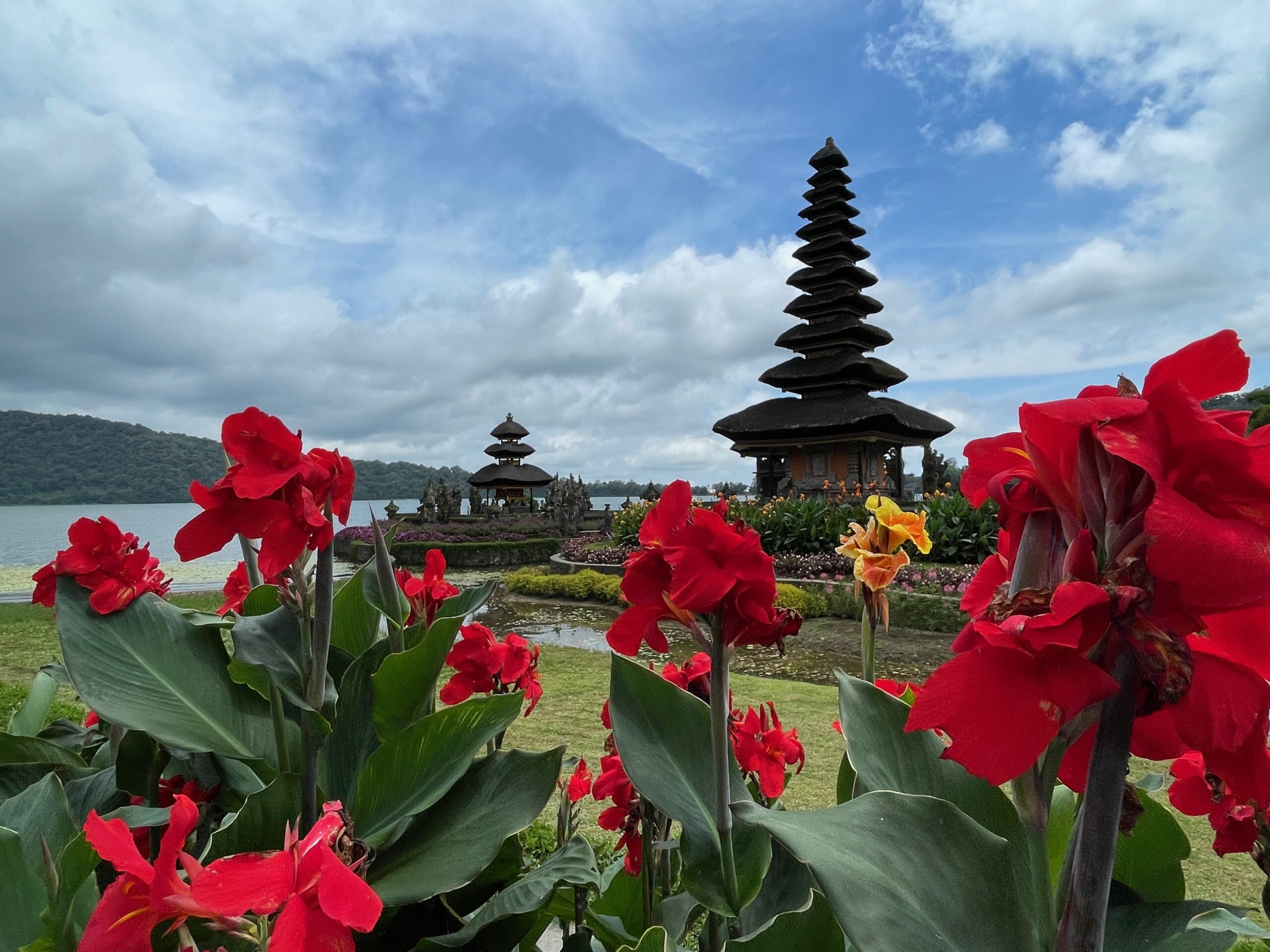 |
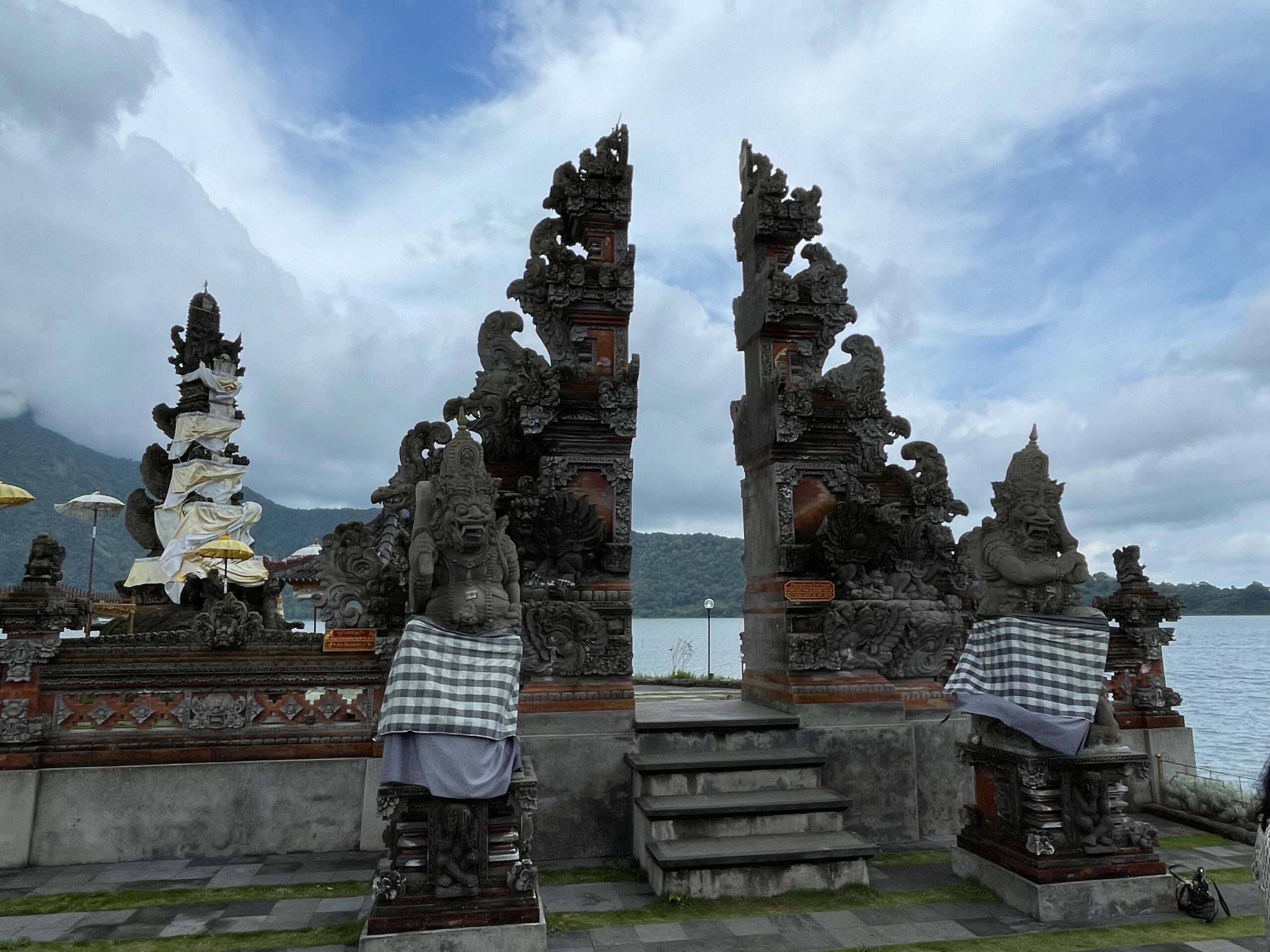 |
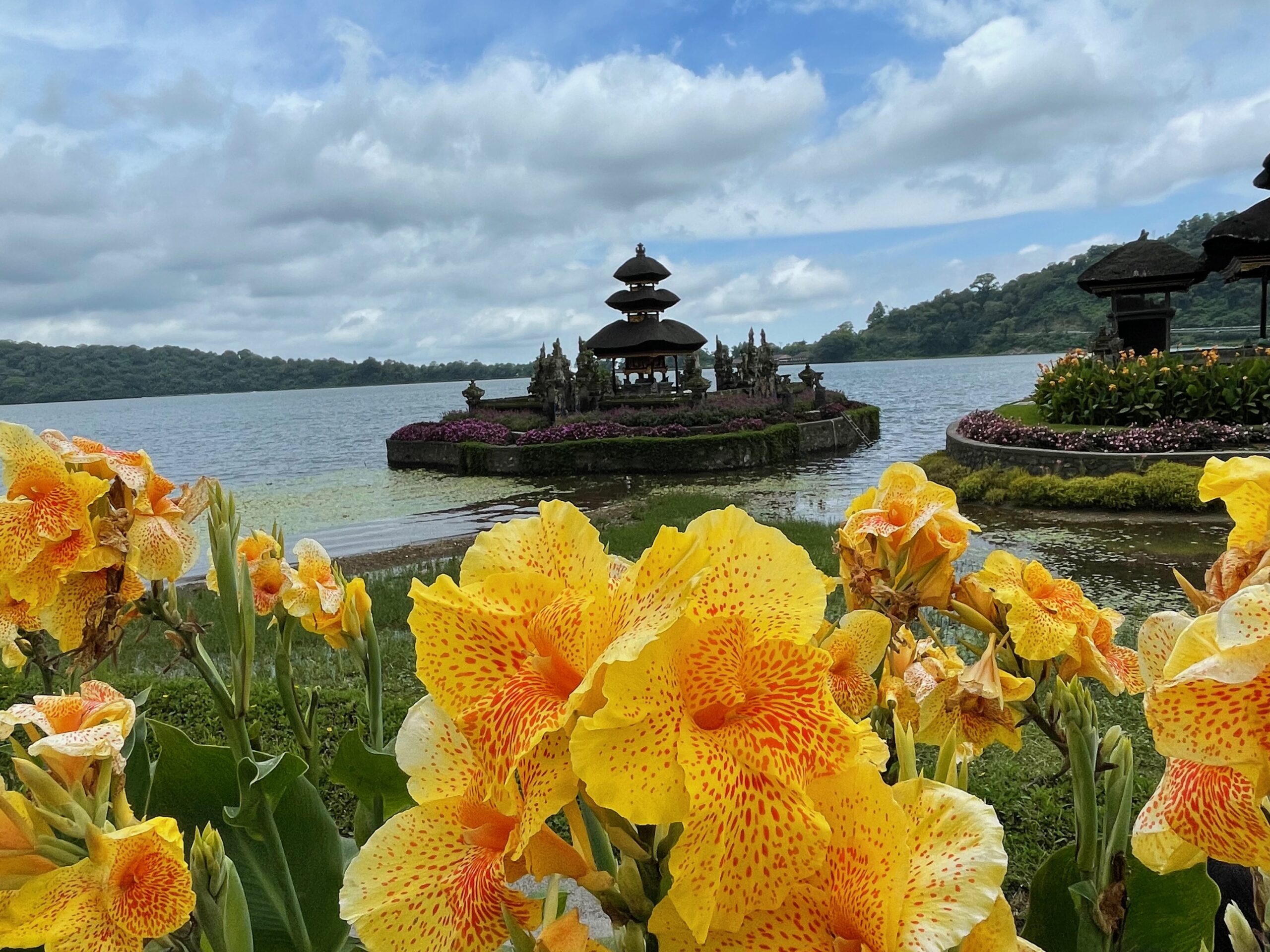 |
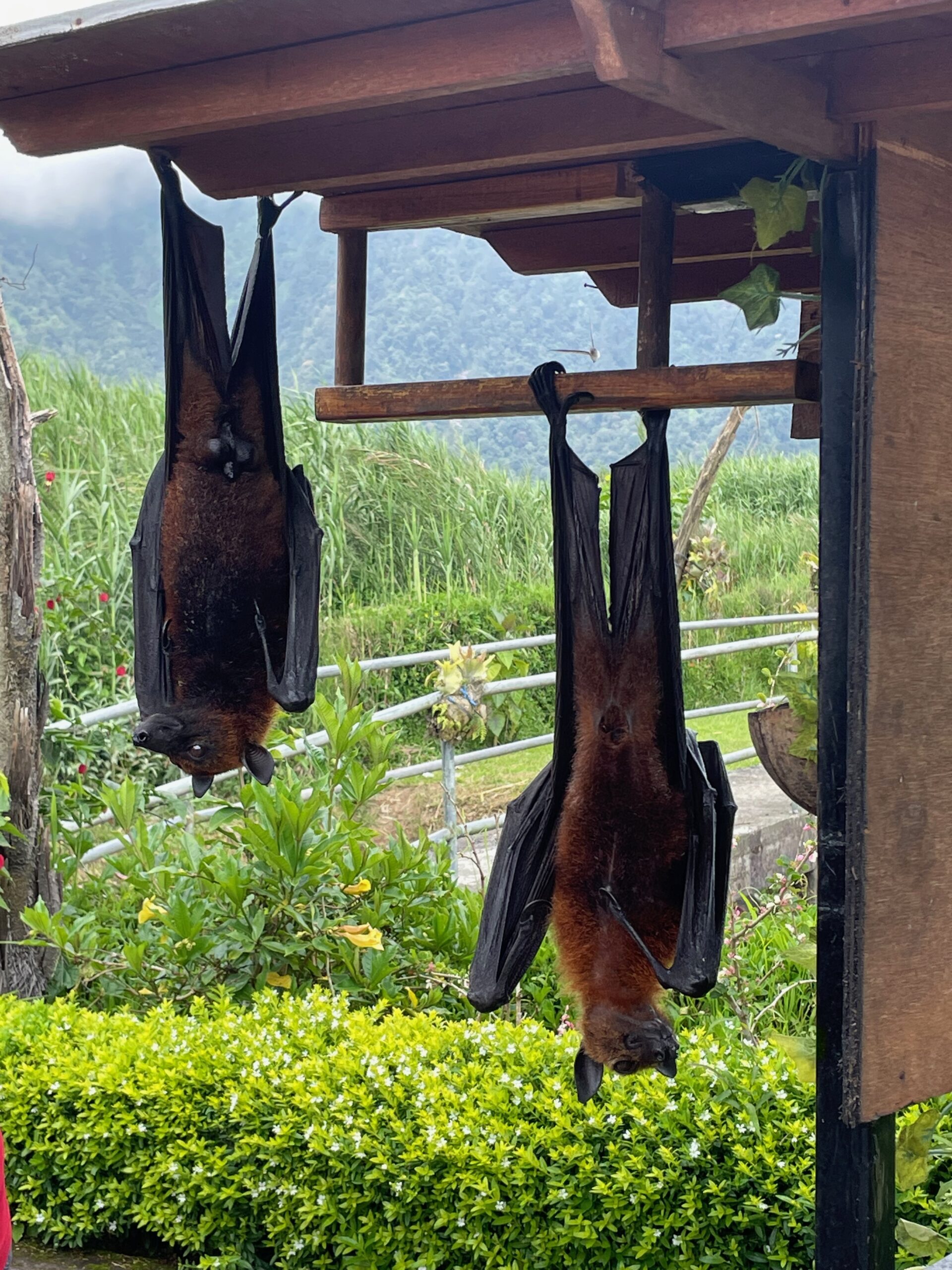 |
However, visiting ULun Danu Beratan is still an interesting and cultural experience. This is a great place to overlook how Indonesians spend time in their temples and how they organize their historical sites. This is also an amazing place to look at the Balinese religious architecture and take in beautiful mountainous views across the lake.
Our last stop in our itinerary was Banyu Wana Amertha Waterfall located 11 kilometers away from Ulun Danu Temple. In fact there is a lot of spectacular waterfalls in Bali, however, we wanted to visit some which are less touristy and surrounded by forests rather than by commercial infrastructure.
In fact Banyu Wana Amertha is still a tourist attraction, there is a small entrance fee and path down through the forest is maintained. However, all along the pathway there is a beautiful wild forest on both sides, it’s on this walk where we saw wild growing coffee plants, there was also few nice moments where we could have perfect views at the surrounding mountains covered by lush greenery. If you don’t walk to walk down (it’s 1km down and then you need to climb back!), for a small fee you can have a ride on a scooter, however, if you’re moderately fit, I recommend walking – this gives a good opportunity for extra stops to take a look at the surrounding nature. At the end of decent there is few small stands where you can get some small refreshments including coconut water. Then the route divides in two and you learn that there are in fact 2 waterfalls! You can visit both of them and the one further away is particularly worth visiting, less people go there, the cascade is much higher and surroundings are much wilder. This is also the place where you can really have a refreshing swim, since the natural pool is a bit deeper, perfect for a dip.
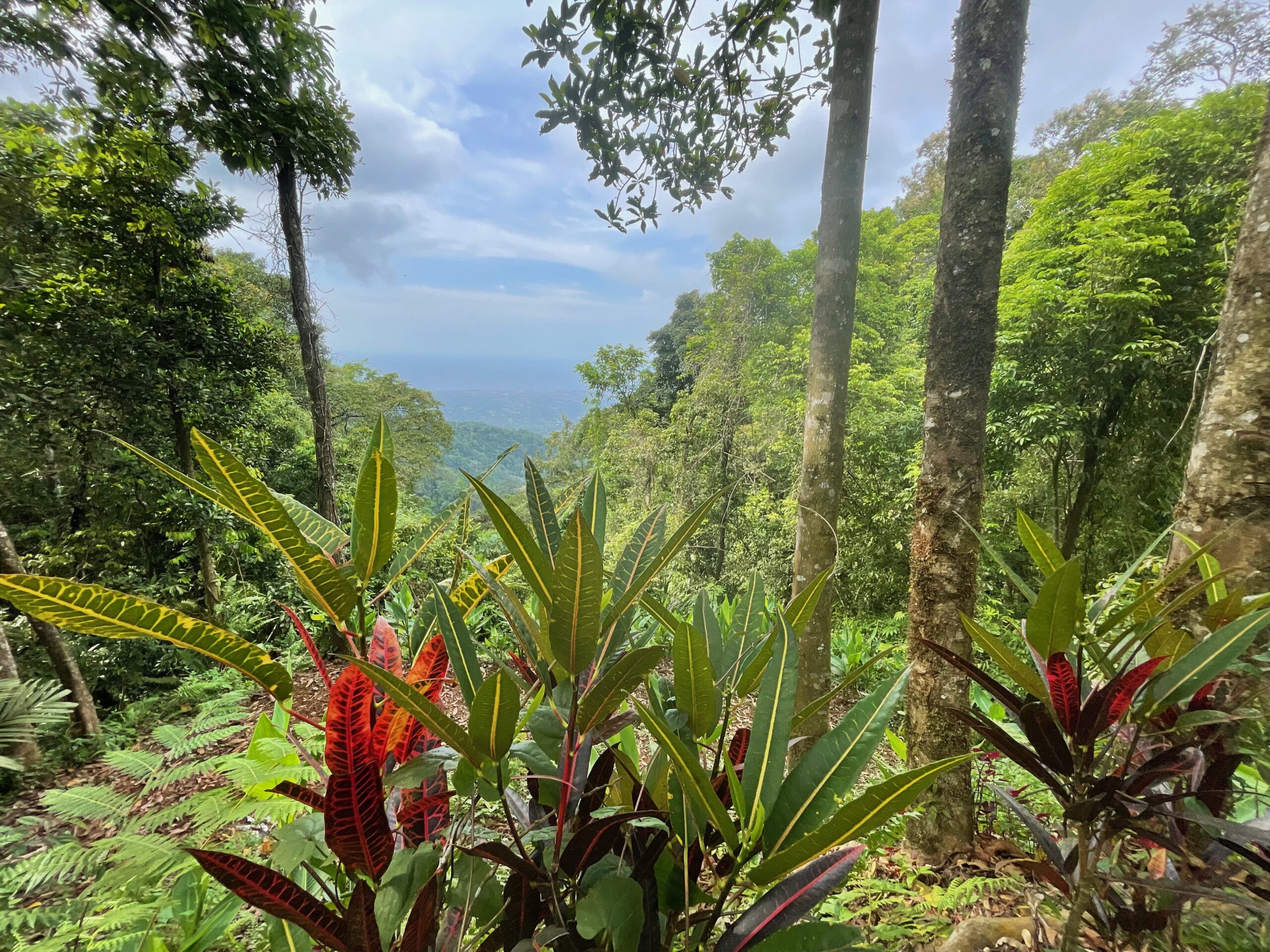 |
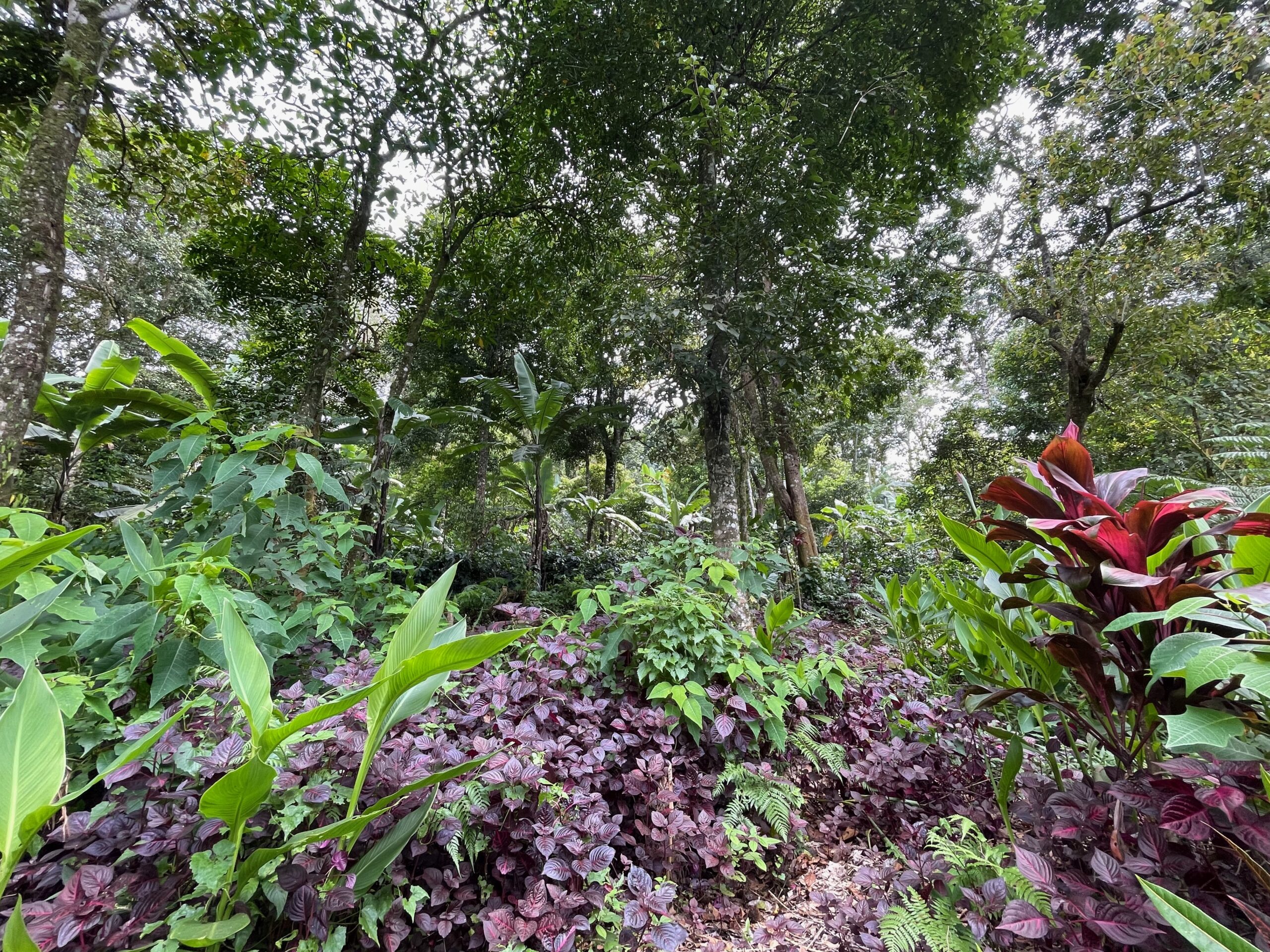 |
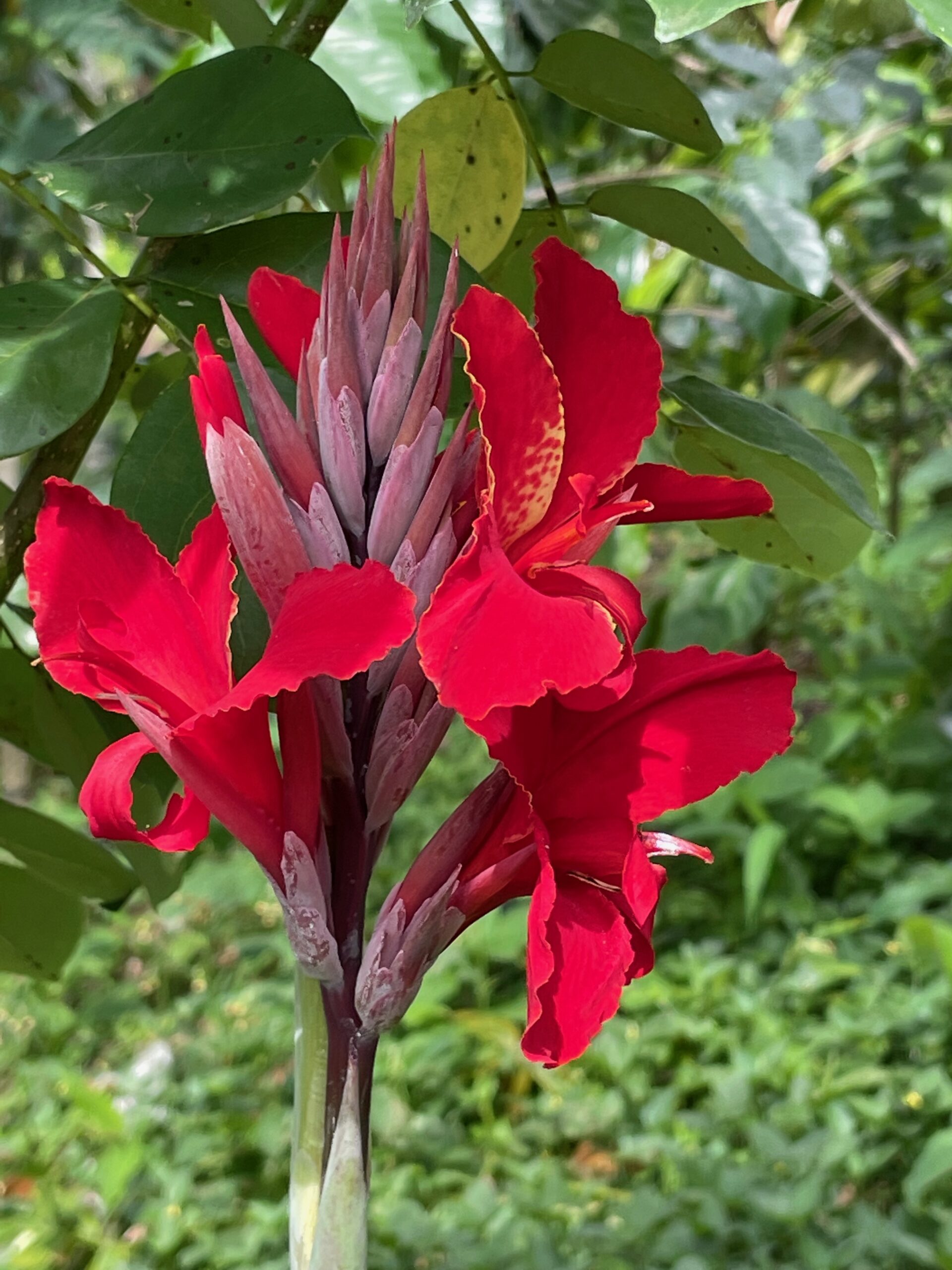 |
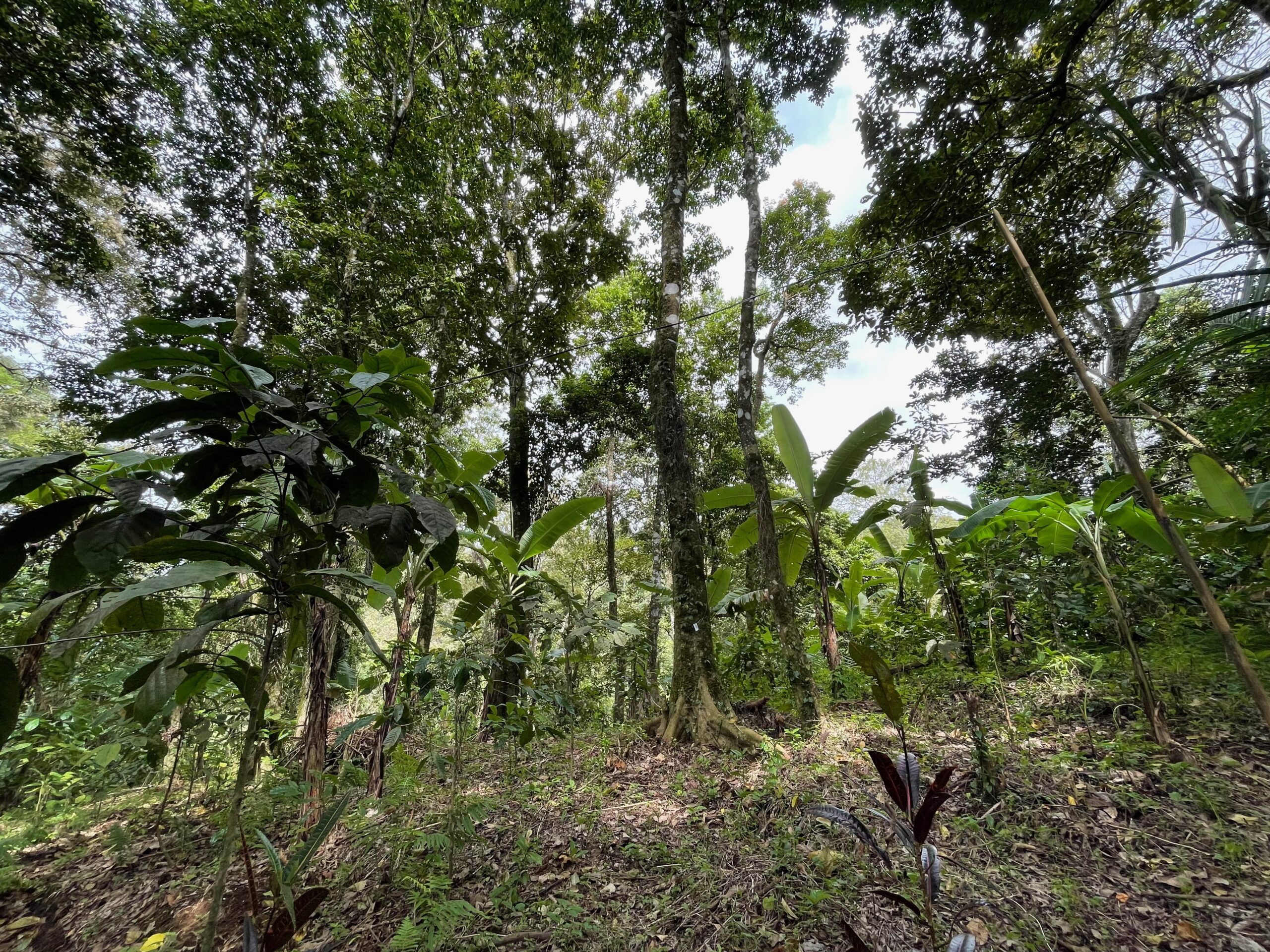 |
I must admit, I was a bit apprehensive of the climb back in hot and humid conditions, however, the beauty of nature as you walk back is so mesmerizing, I didn’t realize when we reached the exit. Overall, I absolutely loved this small trek and the waterfalls. This was a great opportunity to take a look at the jungle, enjoy the nature without mass of visitors but still walk through a comfortable maintained path.
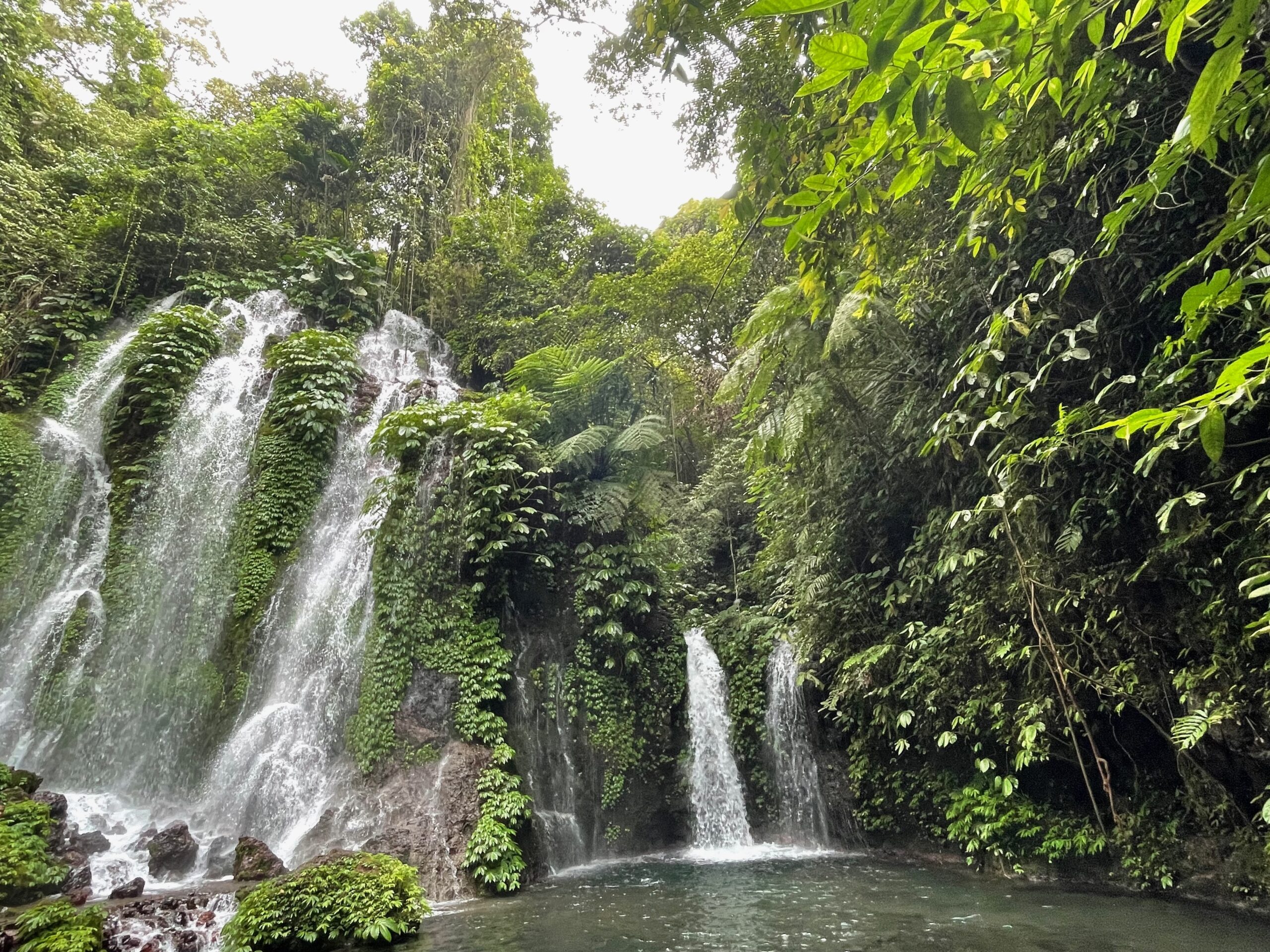 |
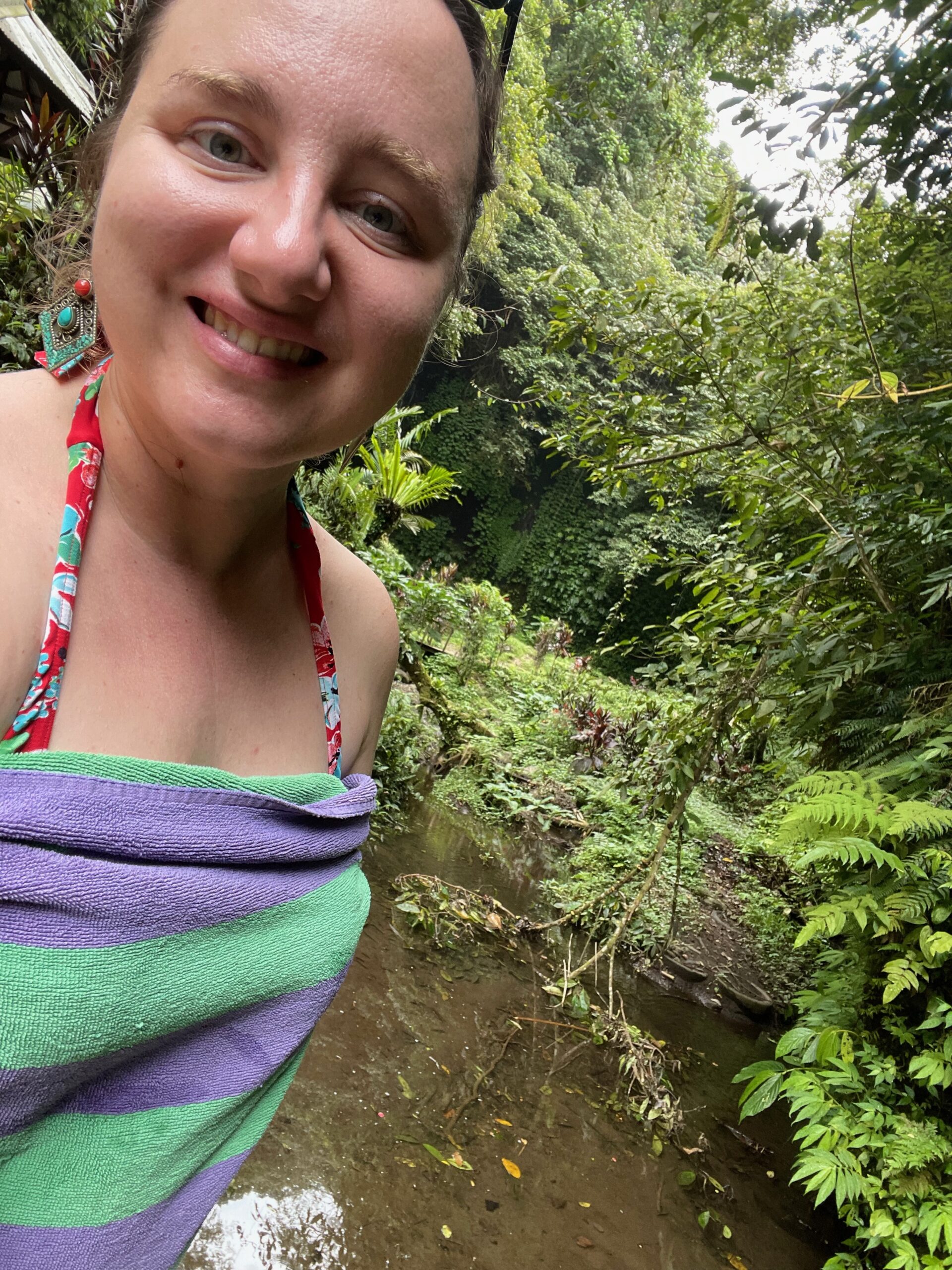 |
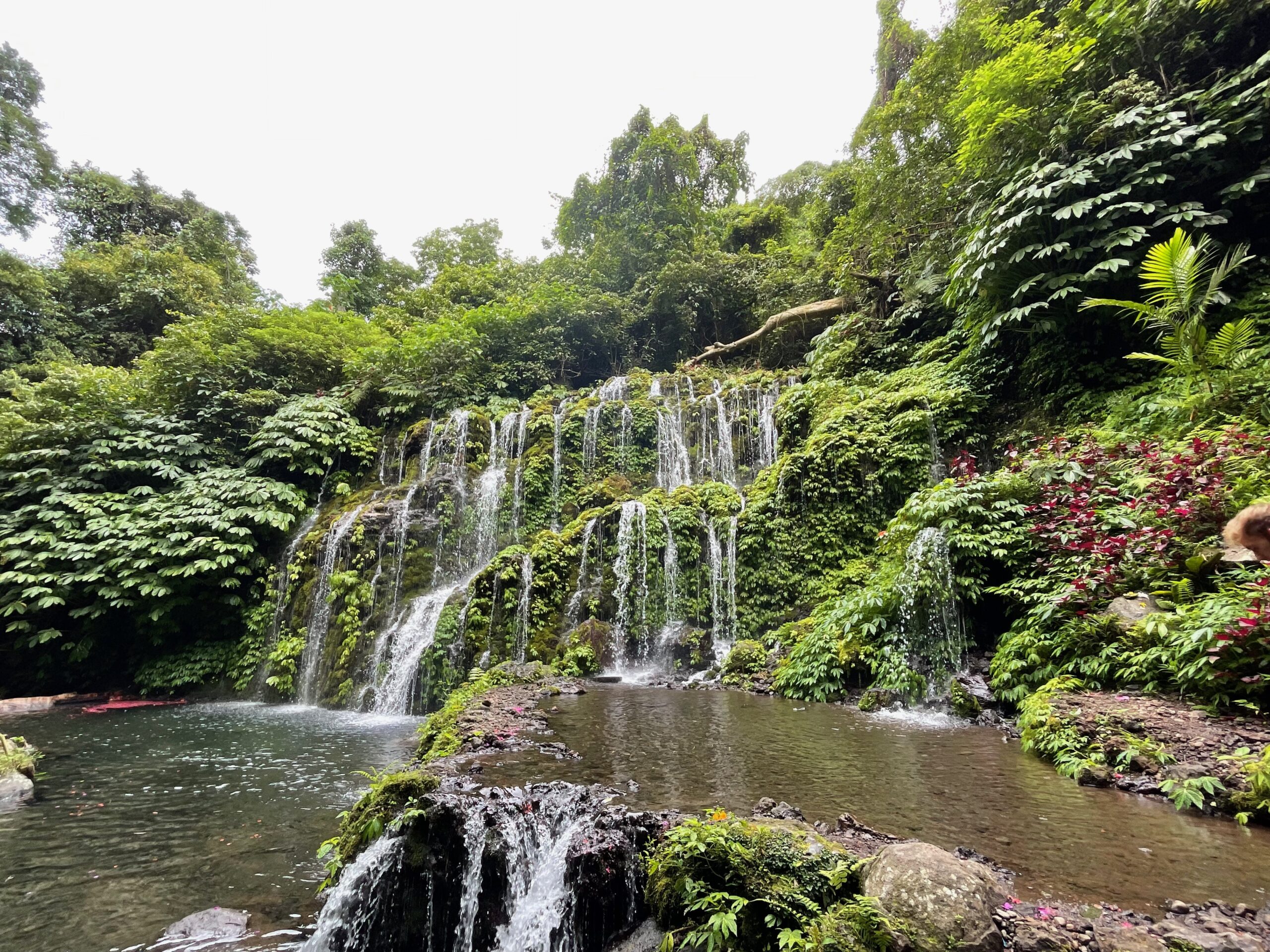 |
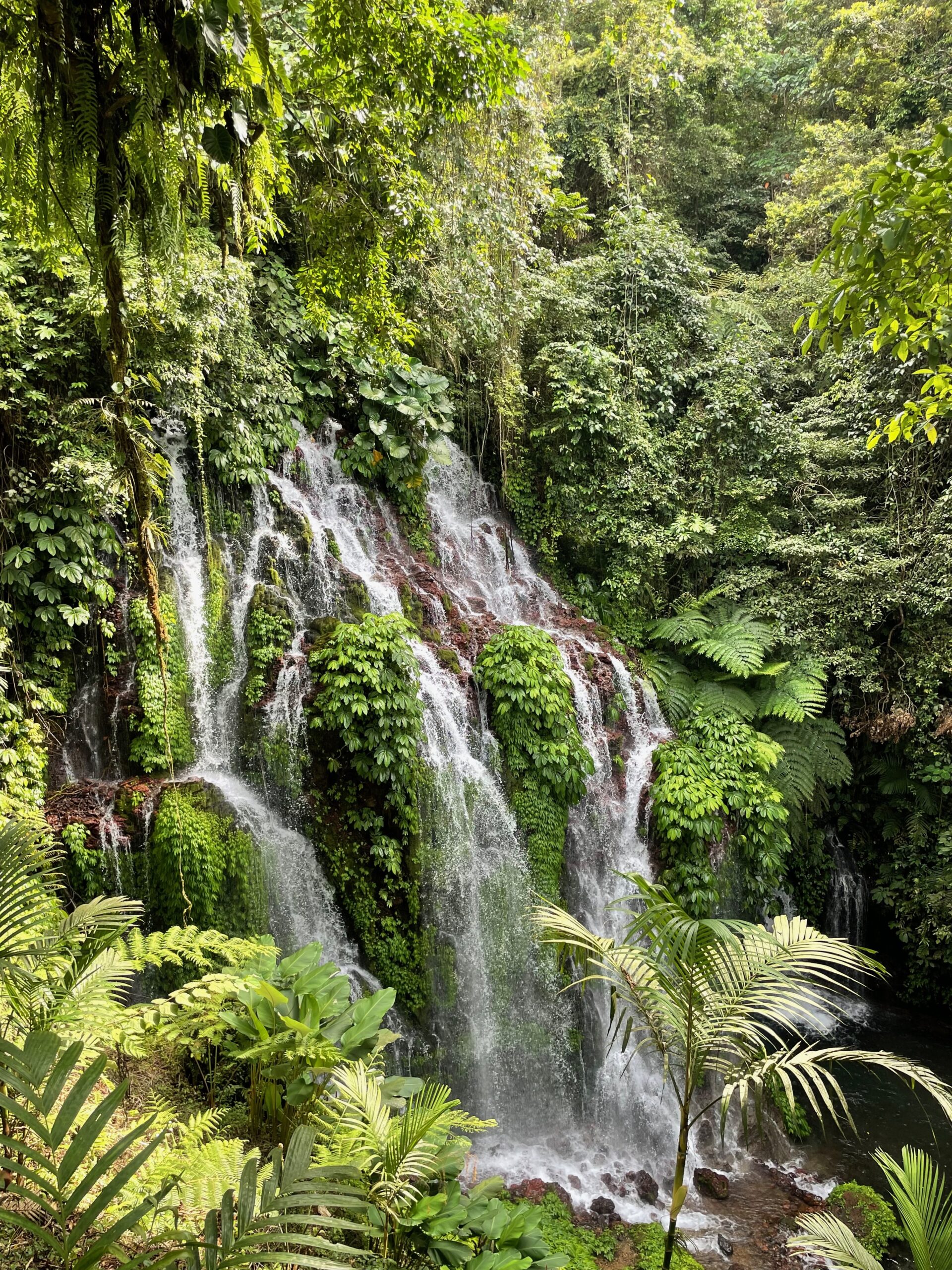 |
When back from the waterfalls, we realized we are just one hour before sunset so decided to come back to Ubud. The Northern routes are not very good for driving when it’s dark so you want to be back from the mountains in the evening. However, the closer to Ubud, the more traffic, so it took us again more than one hour to come back. Even when standing in traffic, I found it as great opportunity to take a look at the streets, local food markets and smaller temples frequented by locals. This is a really nice advantage of taking the route a bit off the beaten track and to overlook less touristy Bali, even if part of it is only through the window of the car.
Day 4 (UNESCO sites: Taman Ayun Temple and Jatiluwih rice terraces)
The 4th day we also spent on a full day trip. We have opted for two UNESCO sites starting with Taman Ayun Temple which is also considered as one of the most beautiful Balinese Hindu temples. Taman Ayun is one of six royal temples in Bali and is of great spiritual and historical importance.
I can admit that visiting this temple was completely different experience comparing to other sacred places we so far had discovered in Bali. There was not many tourists and the overall atmosphere was serene and tranquil. The complex is quite big with vast gardens surrounding the temples, the refreshing greenery separates visitors from the busy streets and hustle of the daily life of the village where the complex is located. You cannot walk between the temples themselves (however, this is apparently typical for Bali), but there is a convenient path around the sacred site so you can have a perfect look at the historical shrines. There is a small garden behind, the path along the shrines continues to the small museum and an art gallery so you can learn more about this heritage site. I recommend spending here calm morning and take in the serene atmosphere of this place, the short movie displayed in the little museum can introduce you to the history of this temple by the member of Balinese royal family.
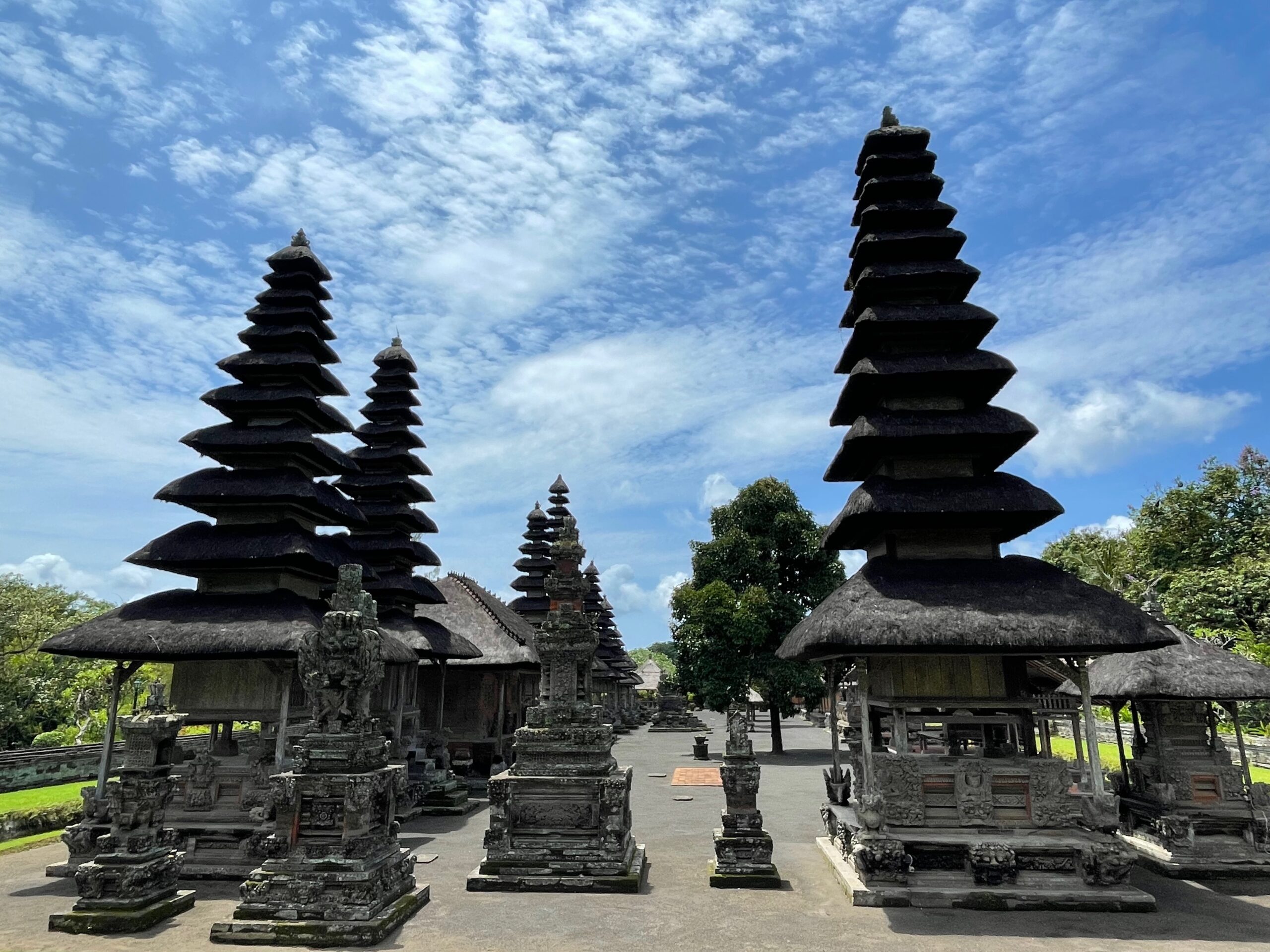 |
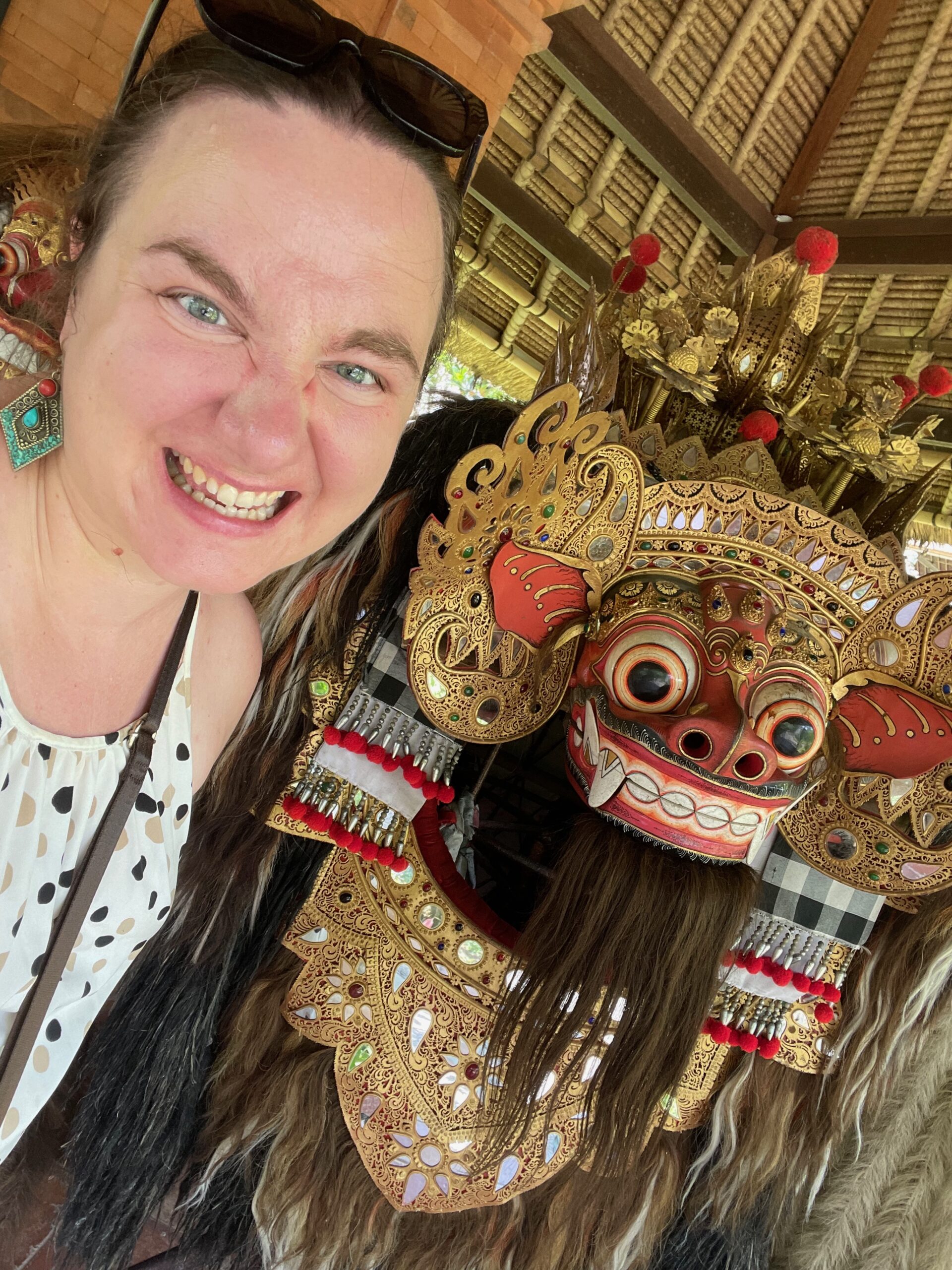 |
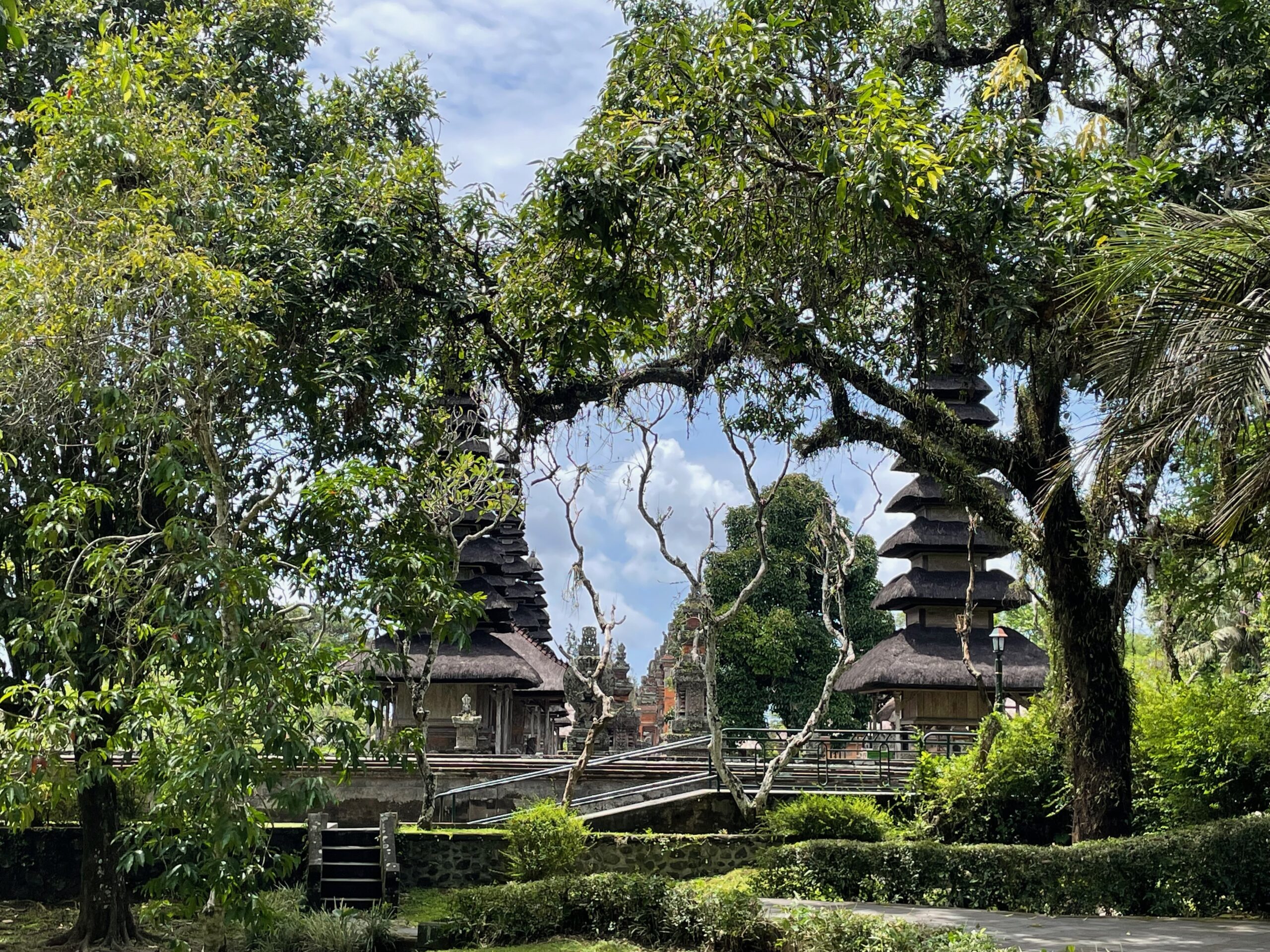 |
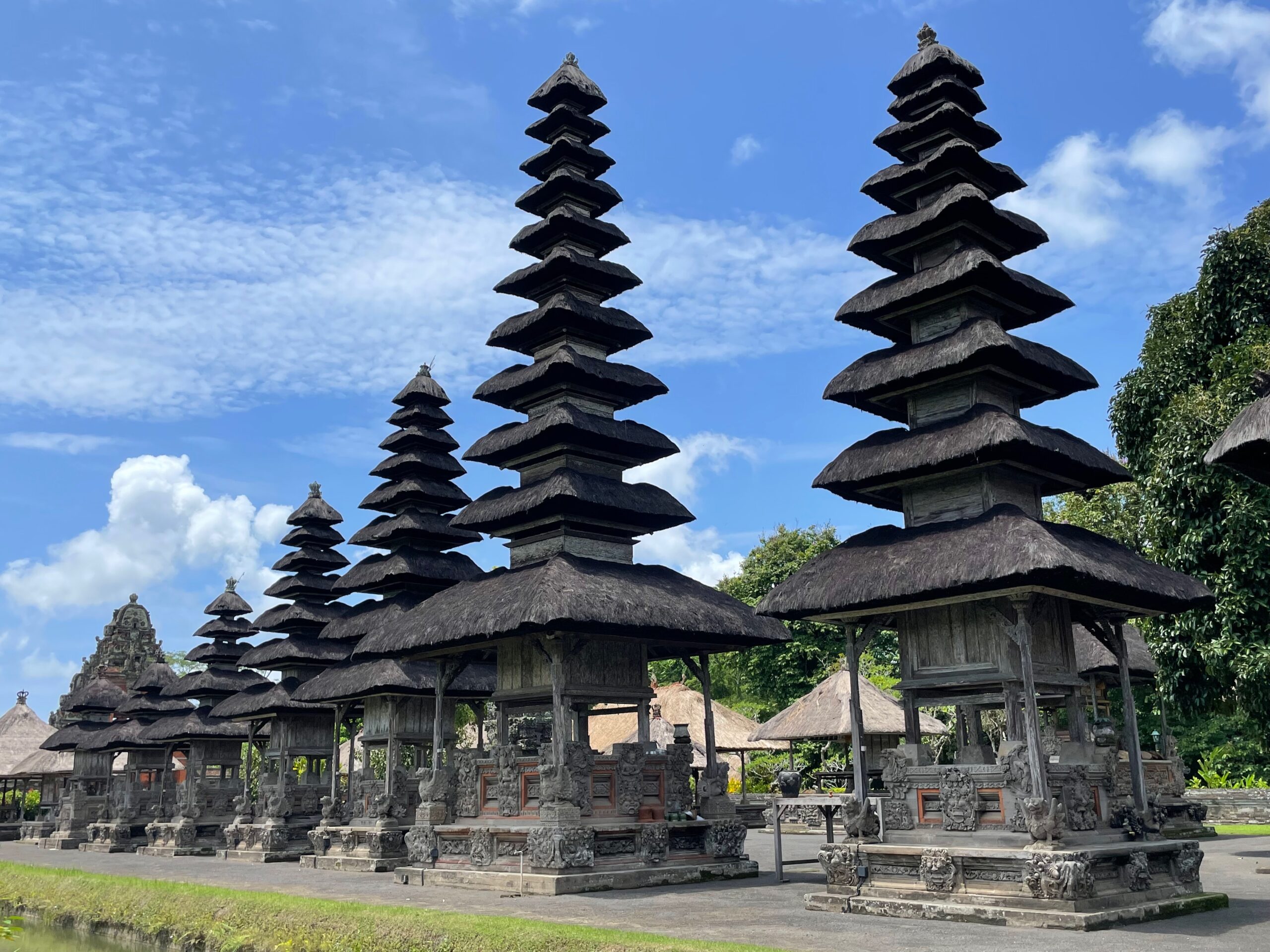 |
Our next stop were the Jatiluwih rice terraces. This UNESCO heritage site comprise over 600 hectares of rice fields following the flowing hillside topography of the Batukaru mountain range. Even the ride from the Taman Ayun Temple to Jatiluwih passing through small villages, lush forests and small rice fields was very scenic and allowed to have a glimpse at the life of Balinese people living a bit further away from most touristy spots.
There is a small fee to enter the parking area from where you can access the viewing platform and start the hikes which will allow you to take a closer look at the cascading rice fields. I saw that Jatiluwih rice terraces are often included in the whole day itineraries of the tourists trips as one of few attractions. However, I find this place so full of natural beauty, offering scenic landscape of rice fields and spectacular views at the mountains that I recommend staying here for few ours to properly enjoy this place. That would be a pity to drive here all the way along to just snap a few pictures from the viewing platform. Speaking of the viewing platform – if the weather and visibility is good, I recommend starting your explorations from this place especially if you want to take pictures, the rice fields stretch to the horizon and the landscape is truly amazing.
 |
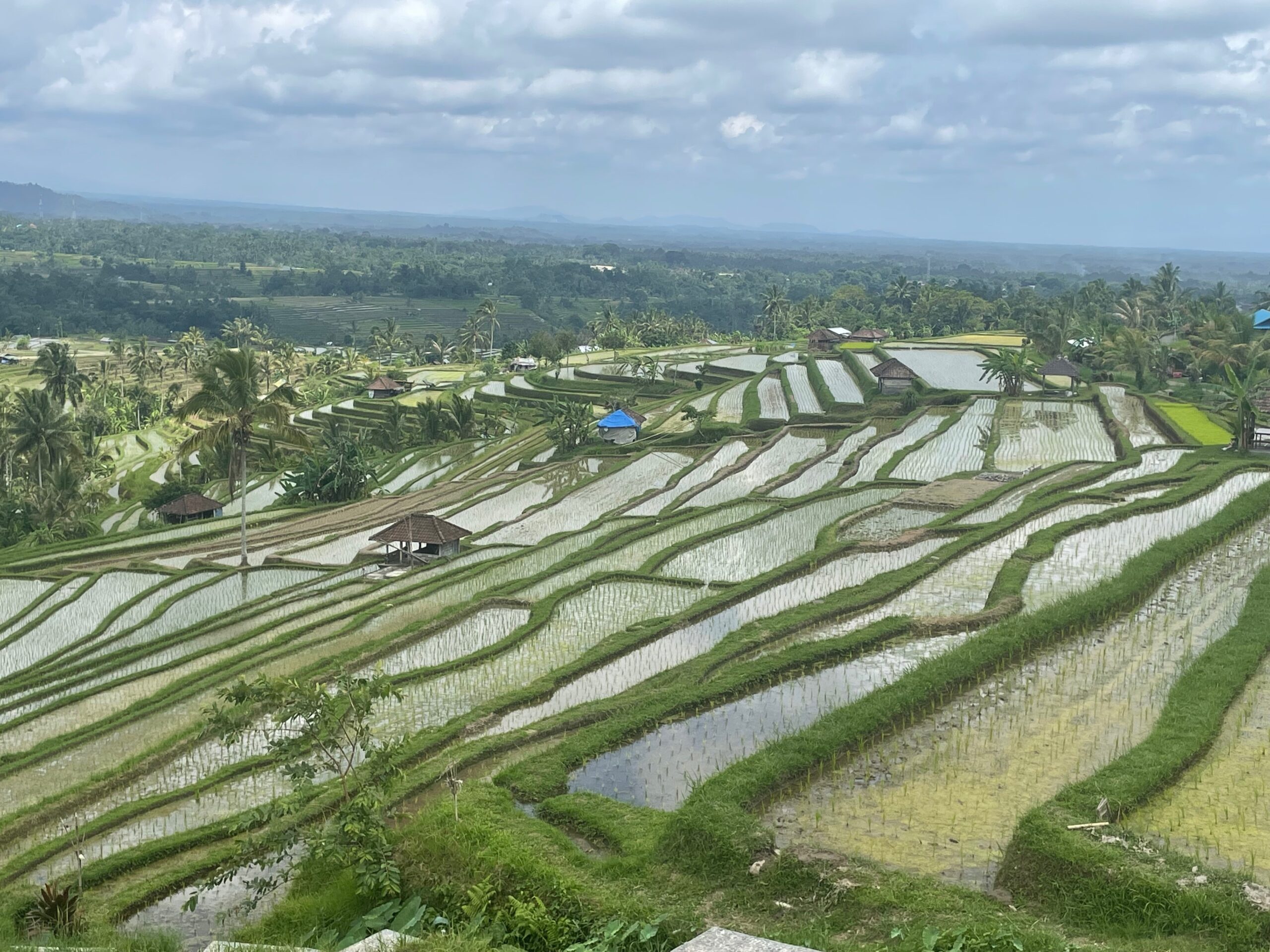 |
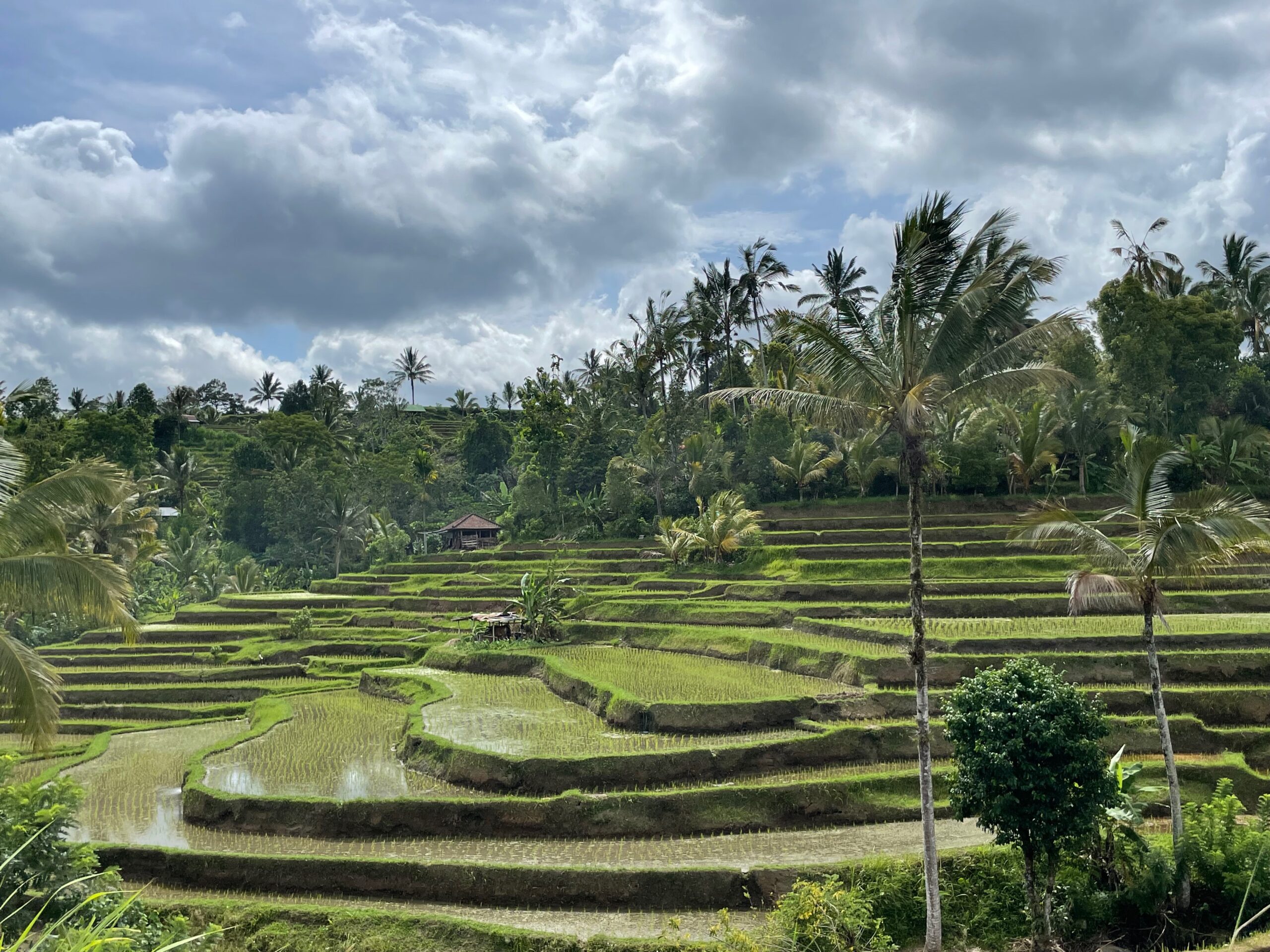 |
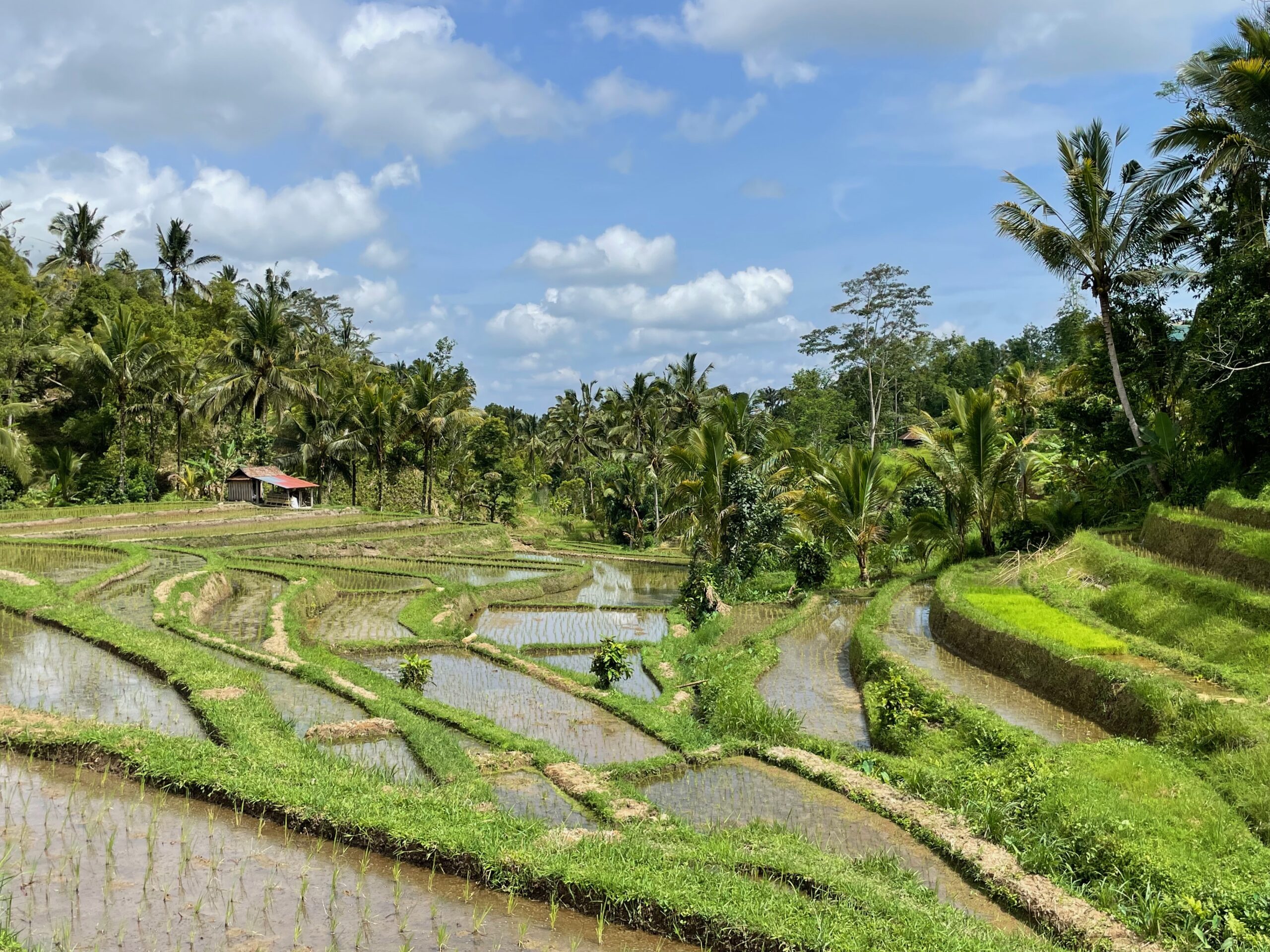 |
The site is well signed and you will easily spot maps with well-marked hiking trails leading through the rice fields. The paths length are mostly 1-2km and the approximate time of completion of the hike is included. We were a bit surprised that for a 2km hike around 2 hours were allocated, however, this was a safe maximum if you counted stops for pictures or refreshments – you will encounter many small stalls selling coconut water and fruits along the way and I fund those little establishments an absolute gem to sit and admire the views when enjoying your cooled coconut water on a hot and humid day.
The hikes are quite simple for a moderately fit person and I think that one can easily do few of the trails to appreciate this natural beauty to full extent. The different paths offer various angles on the rice fields, some of the hikes are more scenic than the others though. We did three walking paths: yellow, orange and red and I find red offers the best views.
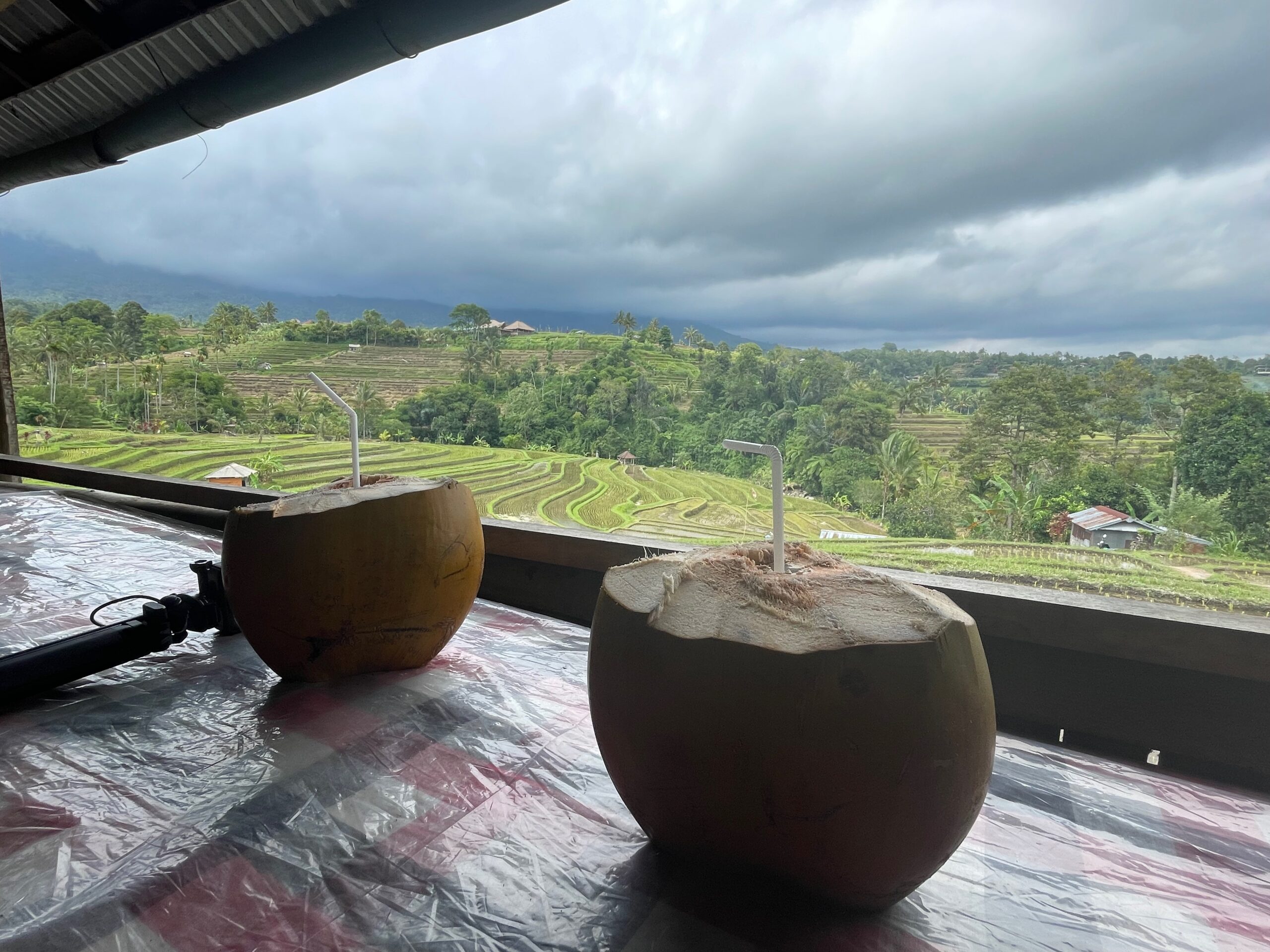 |
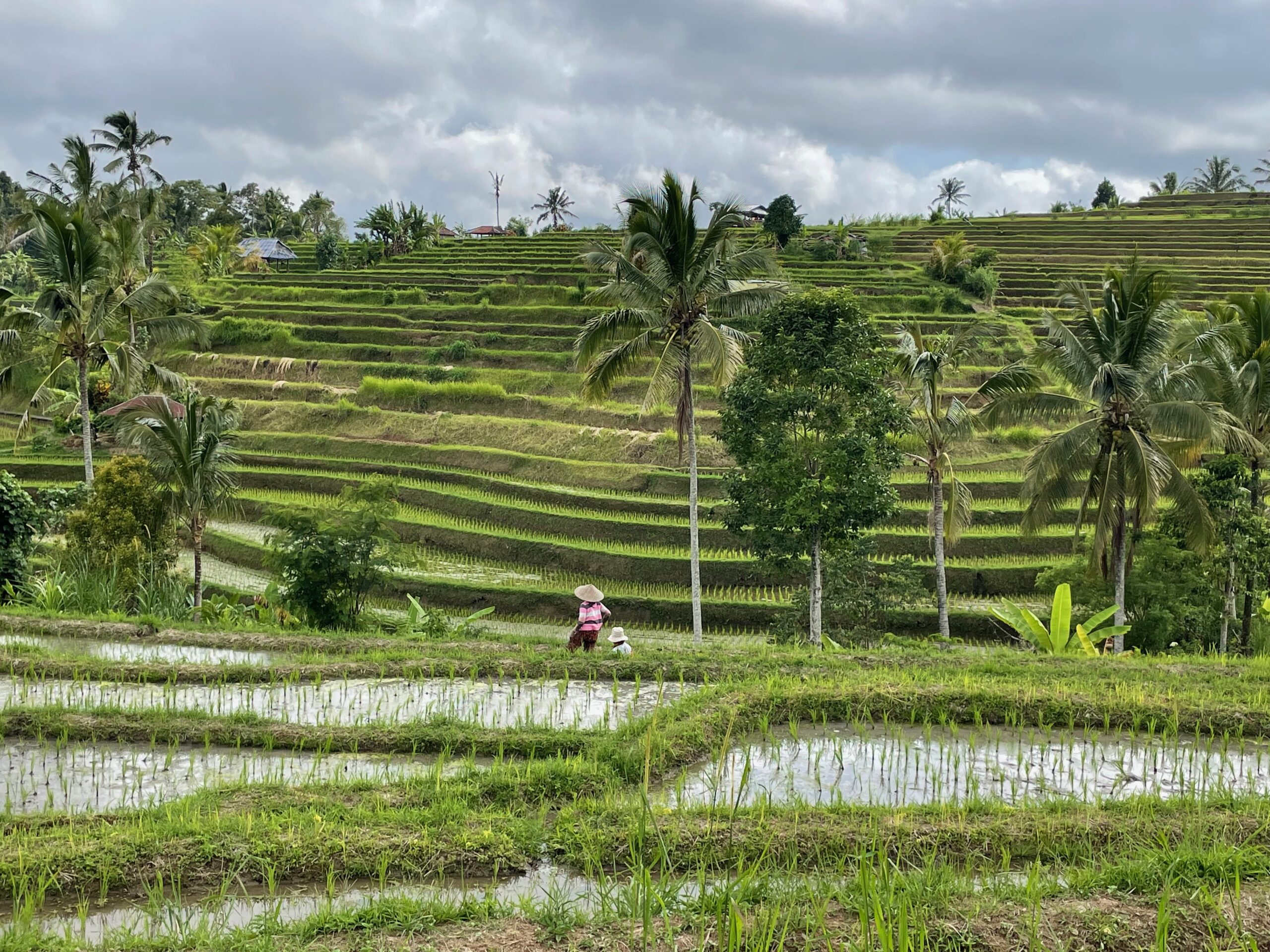 |
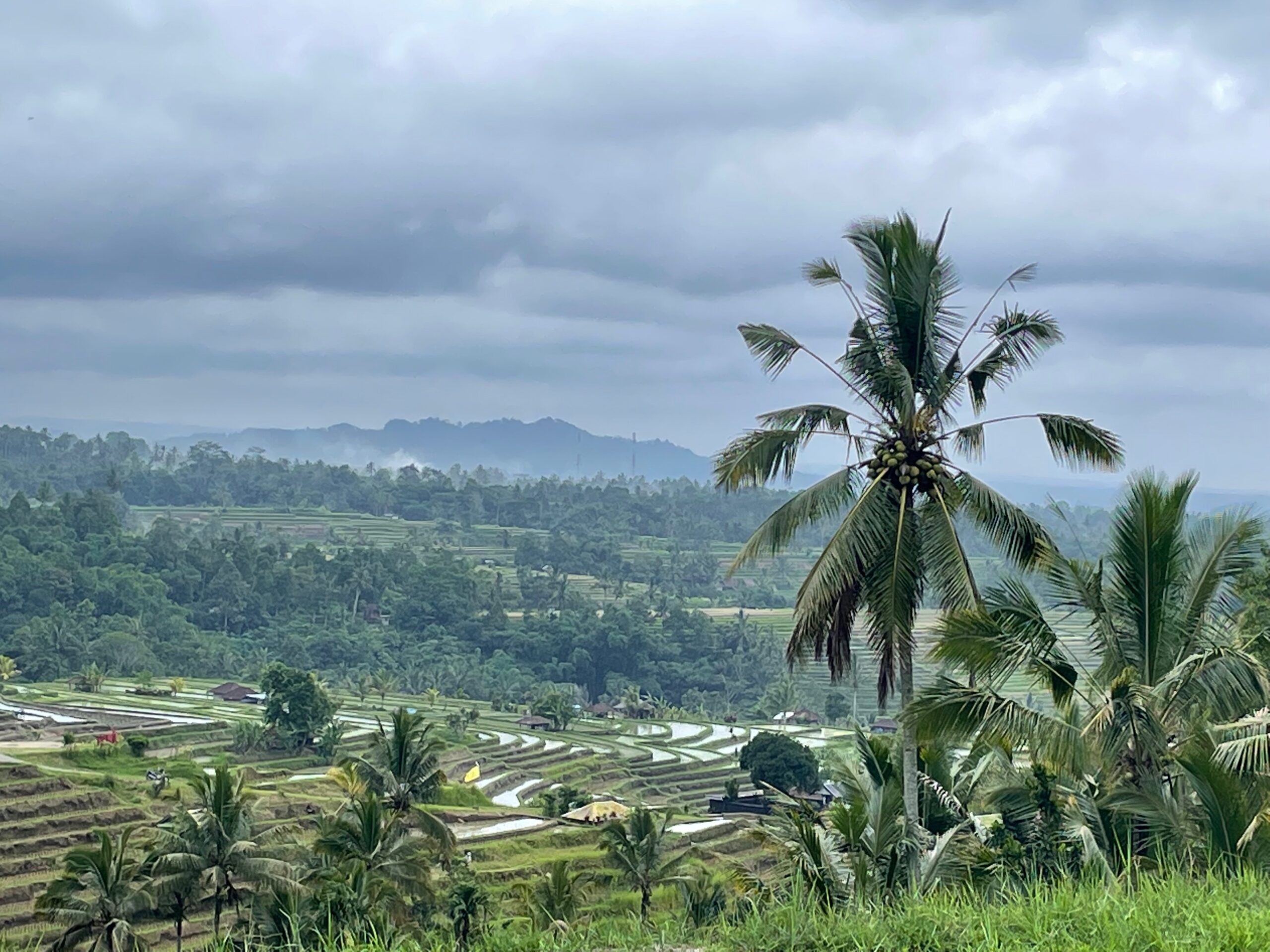 |
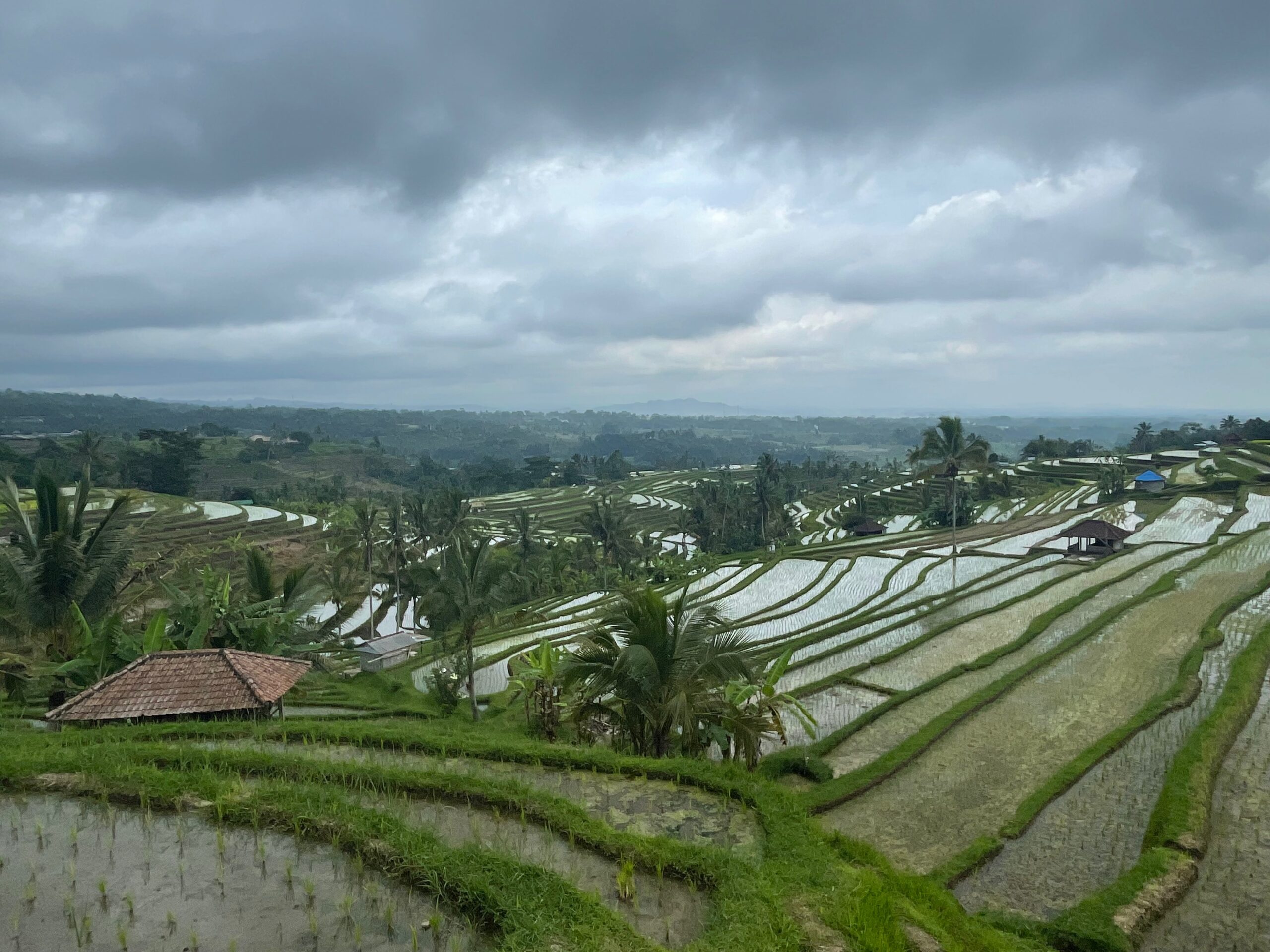 |
I really recommend reserving half a day to walk along the paths and enjoy the beautiful natural landscape without rush. If you can, stay until golden hour to see the rice fields bathed in the warm light. This is a perfect moment to return to the viewing platform to capture few panoramic pictures of the area.
Since the road back from the mountains is narrow and now well lit, it’s best to leave the site shortly before or after sunset.
Day 5 (Ubud, Goa Gajah Temple and Tegenungan Waterfall )
We have started our day with a walk around Ubud. The town is known for its artisanal vibe and if you search for some more unique items to bring back home, Ubud is a good place to check out the small boutiques and art markets. If you want to have a bit of relax, the town has quite vast offer of little spas where you can get a massage.
When strolling through the narrow quaint streets, one can spot many small stalls to grab a snack, freshly squeezed juice from local fruits or have a cup of luwak coffee. Personally, I find that in Ubud a well-reputed cafeteria is the best place to try the luwak, I found that in many places around Bali, the coffee is served too thin to appreciate its taste, as the sellers want to save on the precious grains. However, if you choose your place well, you can actually try the properly-brewed coffee to make your own opinion on its original taste.
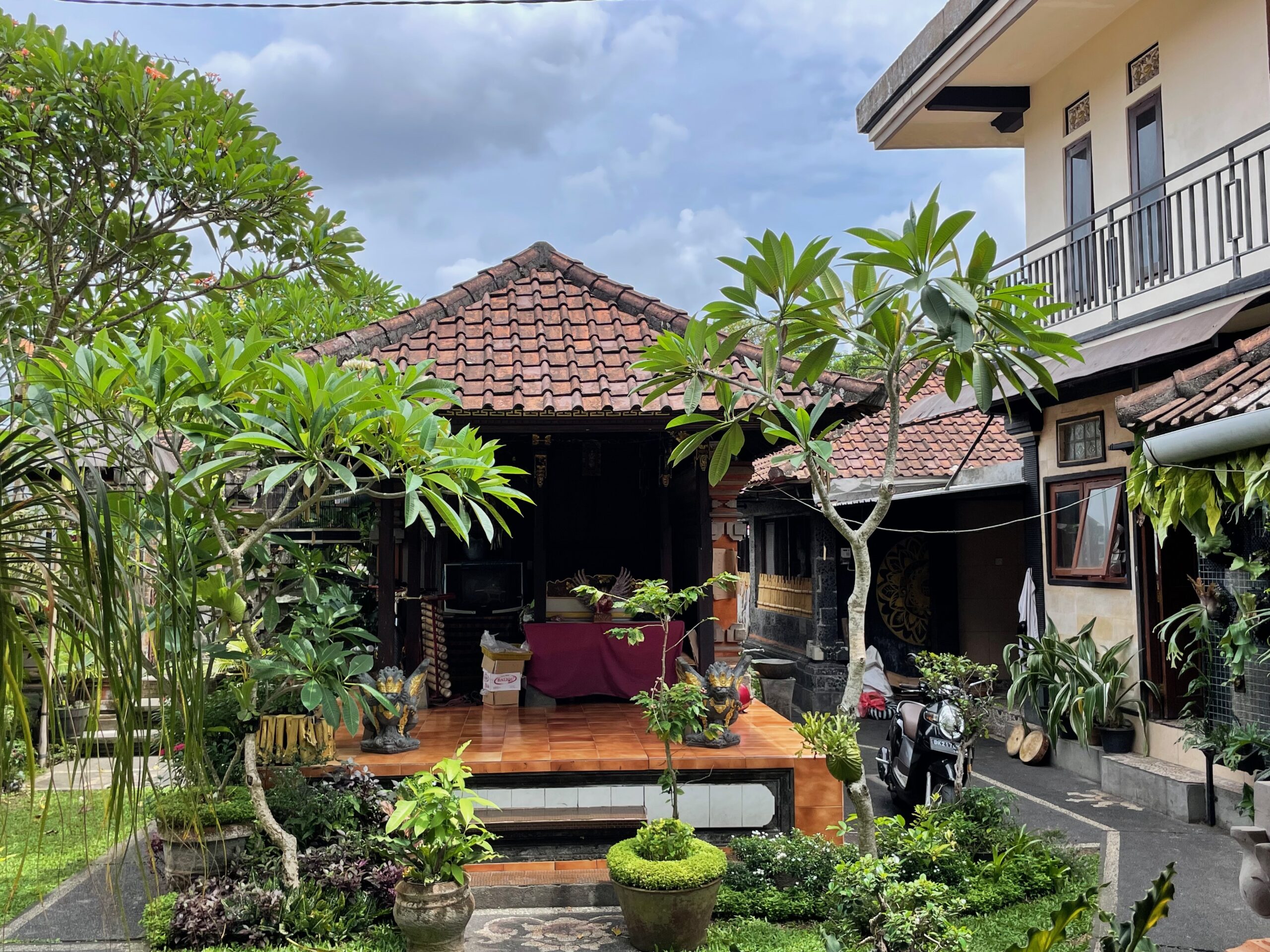 |
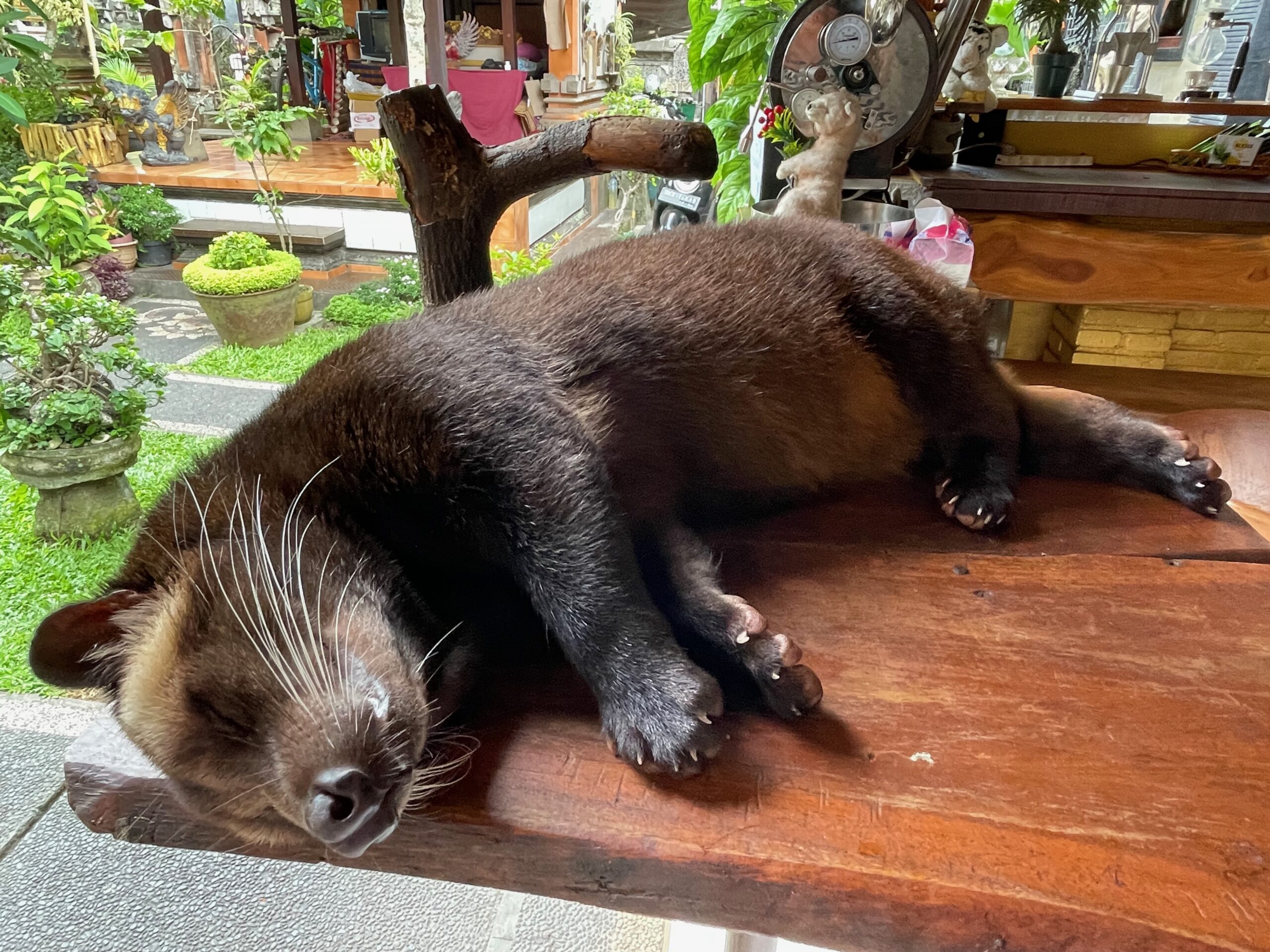 |
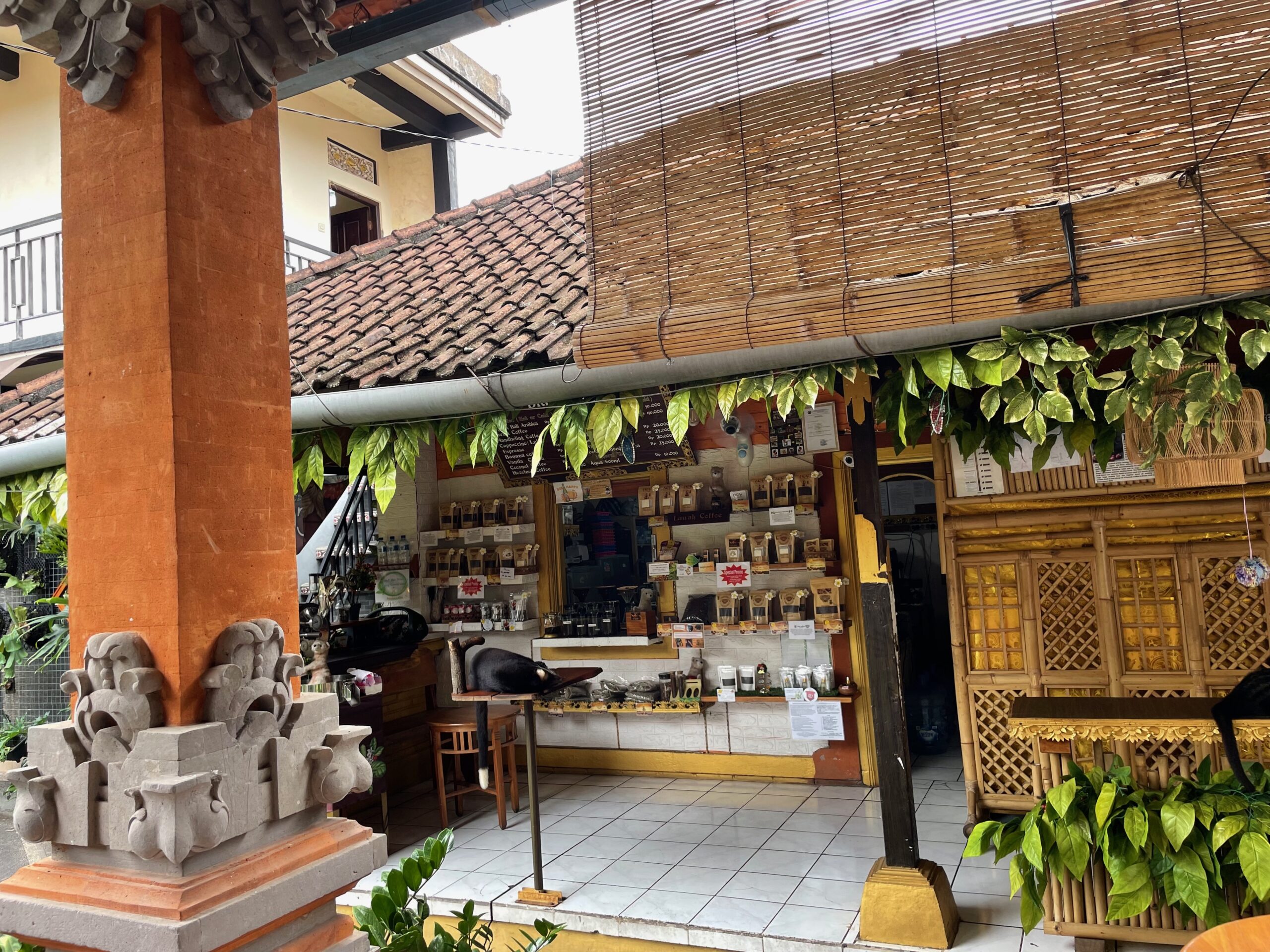 |
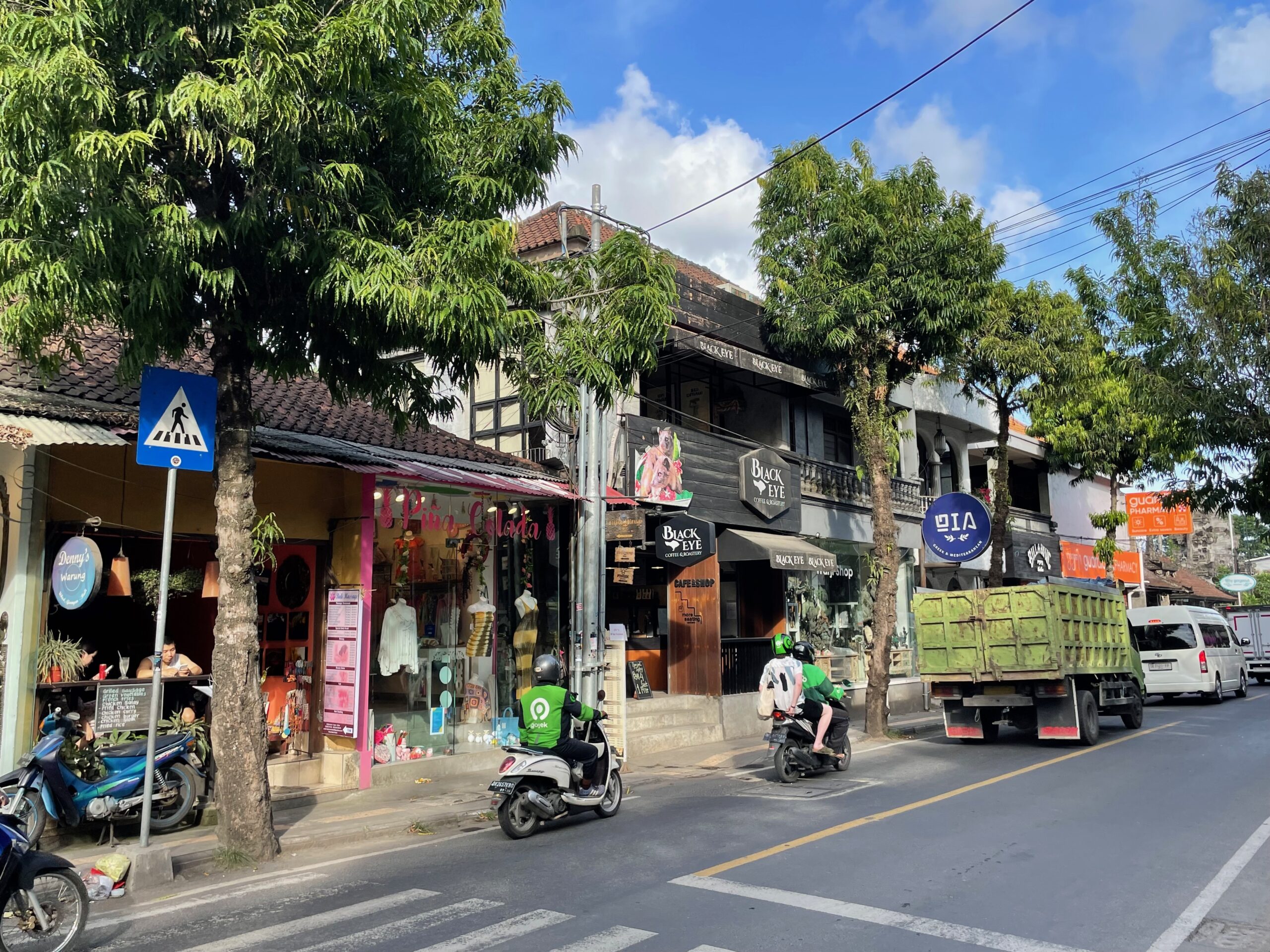 |
After some small shopping we have decided to visit few places on the outskirts of Ubud, including Goa Gajah temple located merely 4km away from the centre of Ubud. This Hindu temple dates back to the 9th century and it’s most important part is the Elephant Cave named after Hindu God Ganesh (god known to have a characteristic elephant head) located inside. The cave is quite small, but besides there are still few pavilions and the small garden with a path down to a waterfall. If you want to rest a bit from the busy roads of Ubud, then walking around the garden surrounded by the forest and stopping by the waterfall for a while is a good idea for a short while of relax.
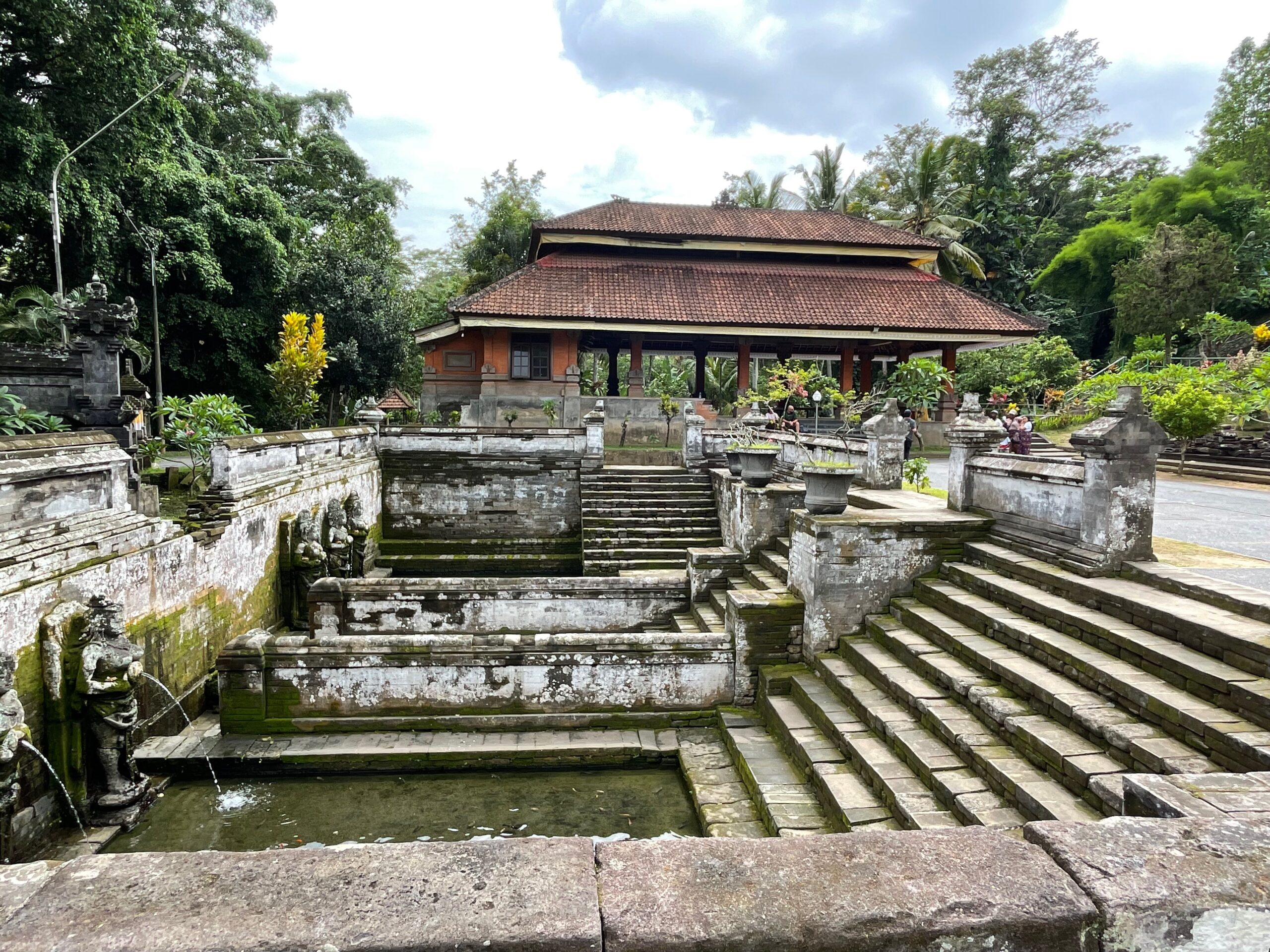 |
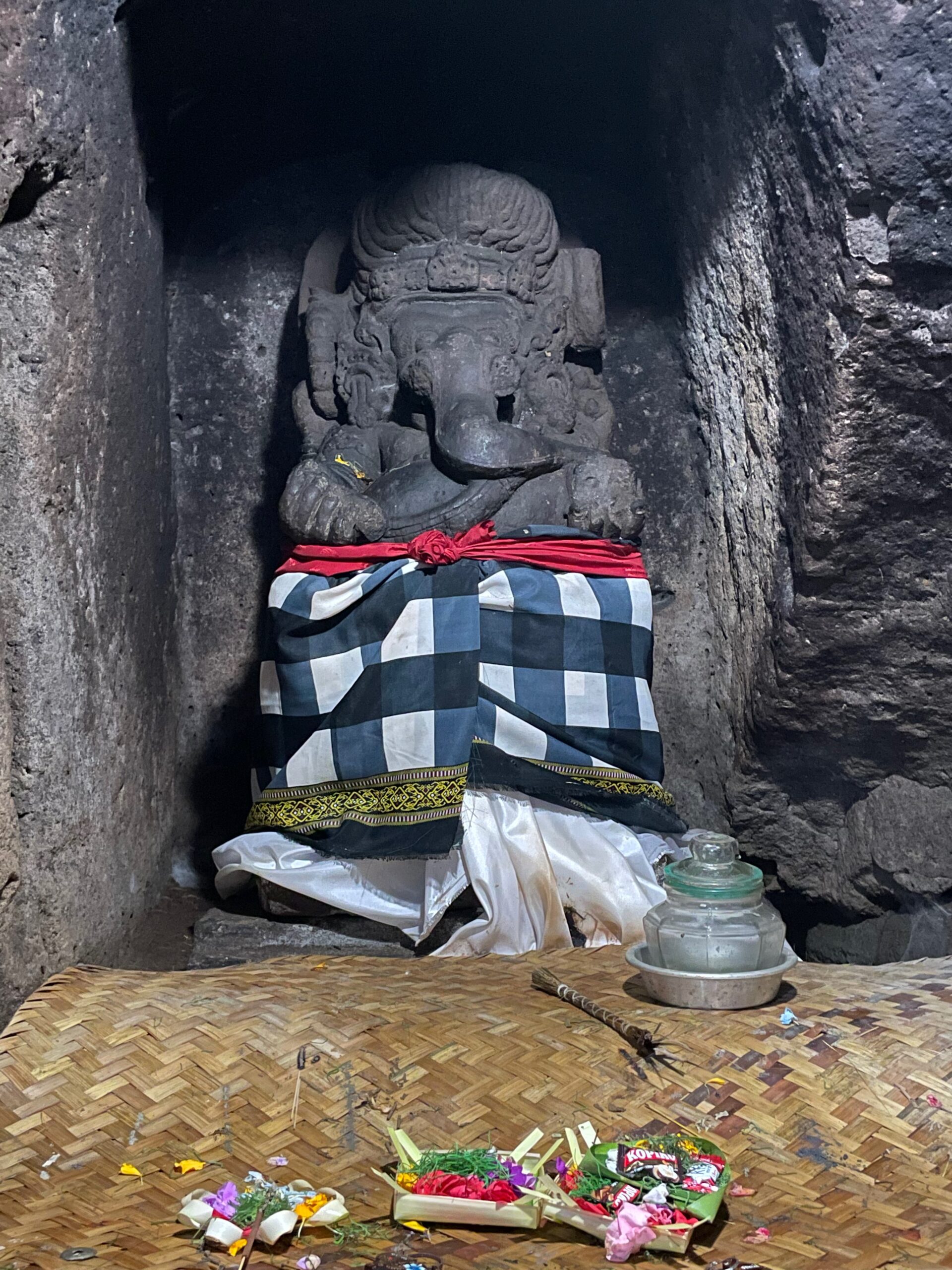 |
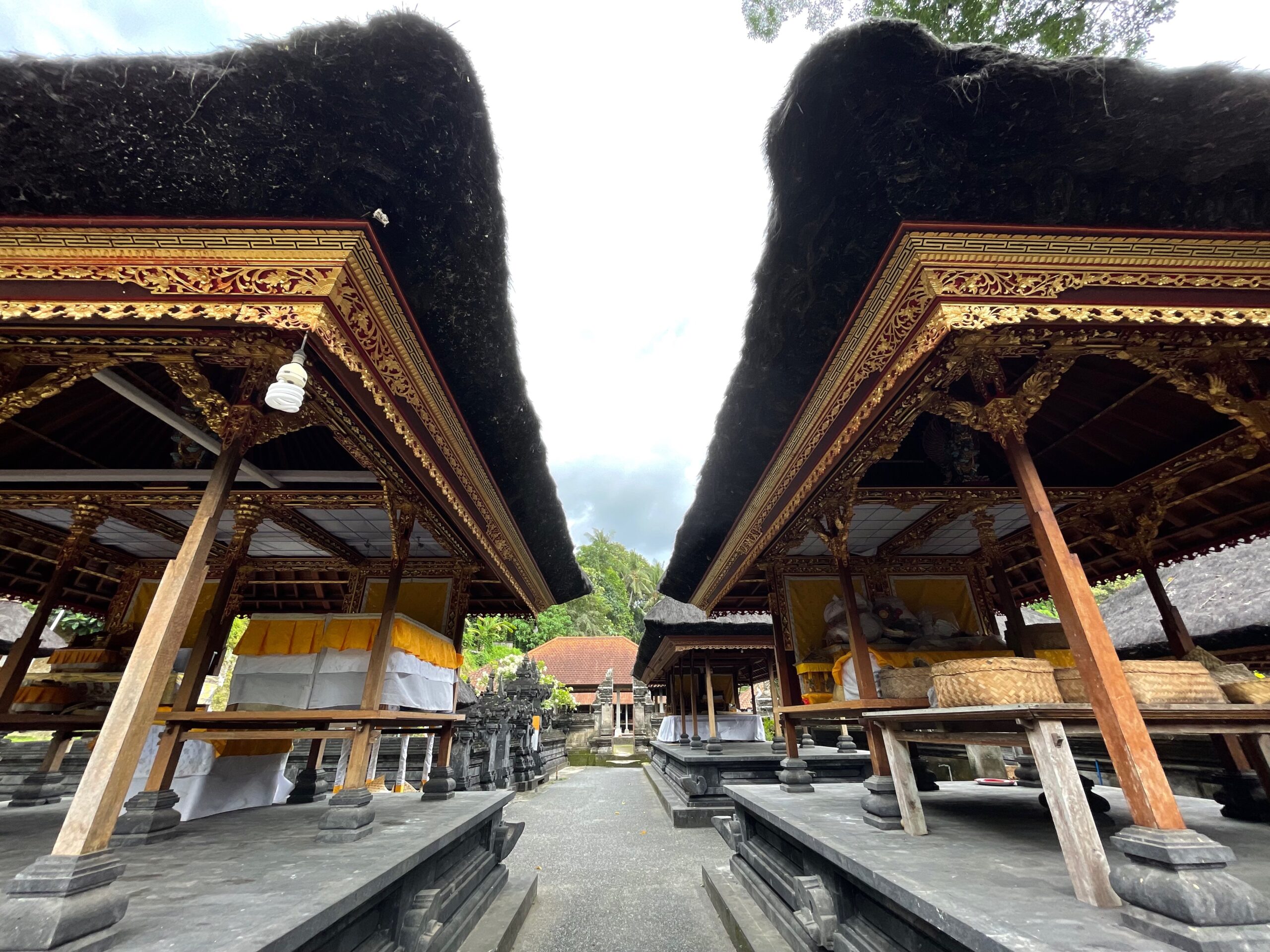 |
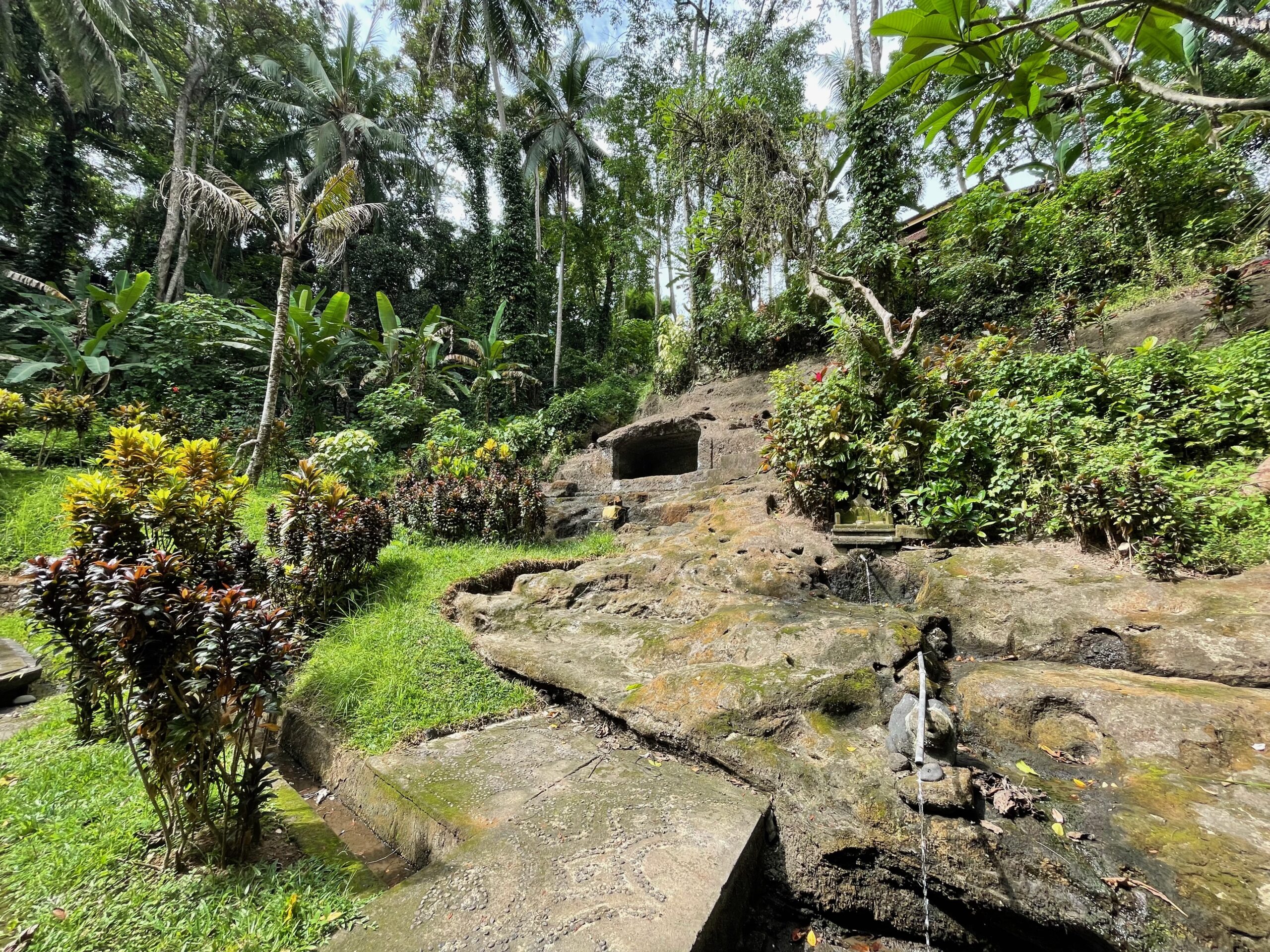 |
Another stop on our way was a Tegenungan Waterfall located just 7km away from Goa Gajah. This is one of the more accessible waterfalls since it is not located in the highlands or mountainous regions. Despite the relative isolation of the waterfall from the busy town, the site is transformed into vibrant tourist attraction. There are clubs and bars and souvenir stands with a lively music around to create a party-like atmosphere. The water is shallow around to have a refreshing dip though and the area is properly marked and maintained to have your swim secure. All in all, if you search for a cheerful atmosphere full of people, music and entertainment then this is an excellent choice. However, if you want to immerse in nature and spend some time in more cameral and tranquil place, then you need to opt for more remotes spots located deeper inside of the island. Even if Banyu Wana Amertha we have visited before is not an exactly hidden gem and you will not be alone there, I can still say that it is much less commercialized and you can still enjoy your time admiring unspoiled nature, listen to the sounds coming from the forest and have a solitary swim in the further waterfall if you have a bit of luck.
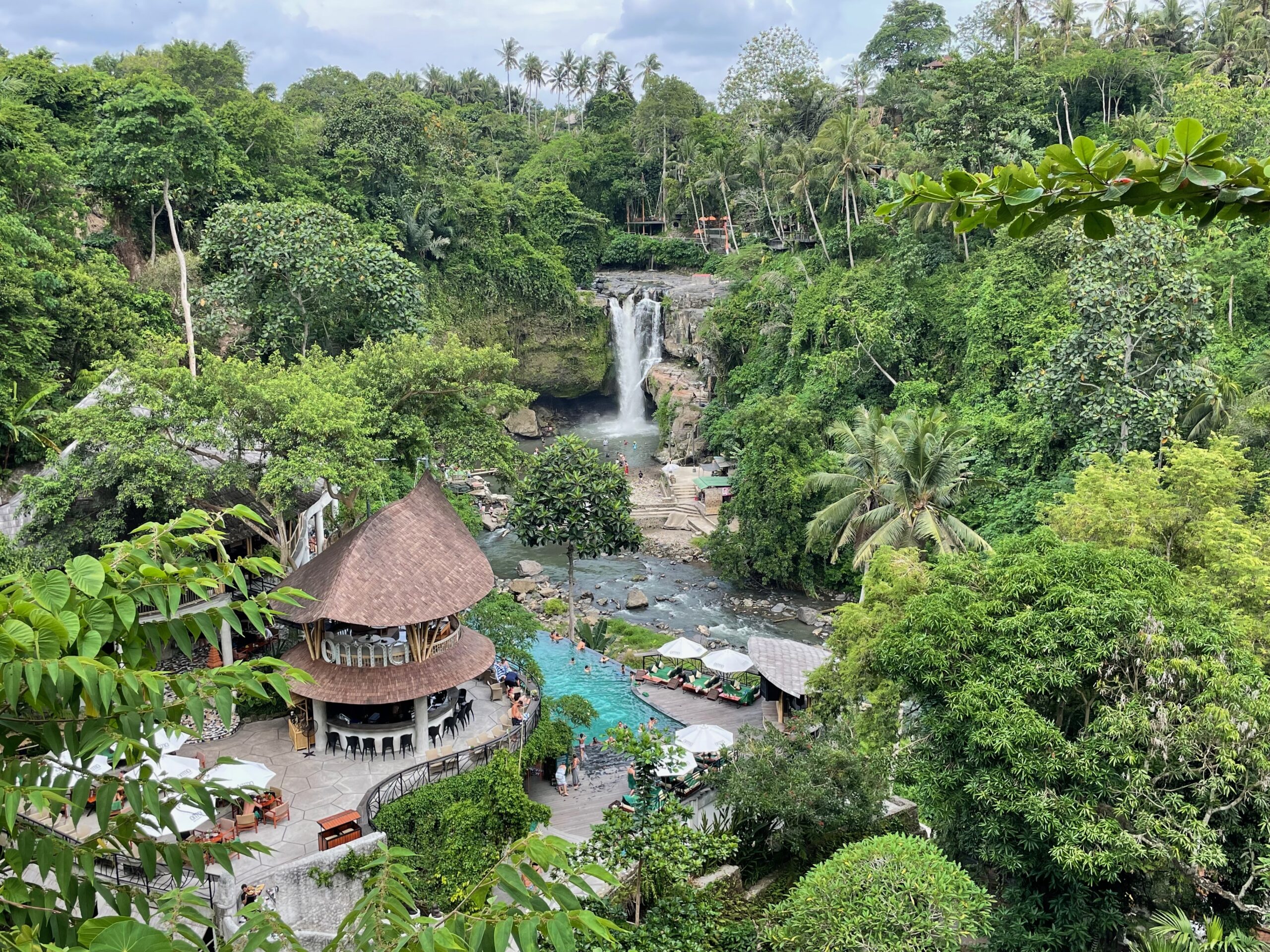 |
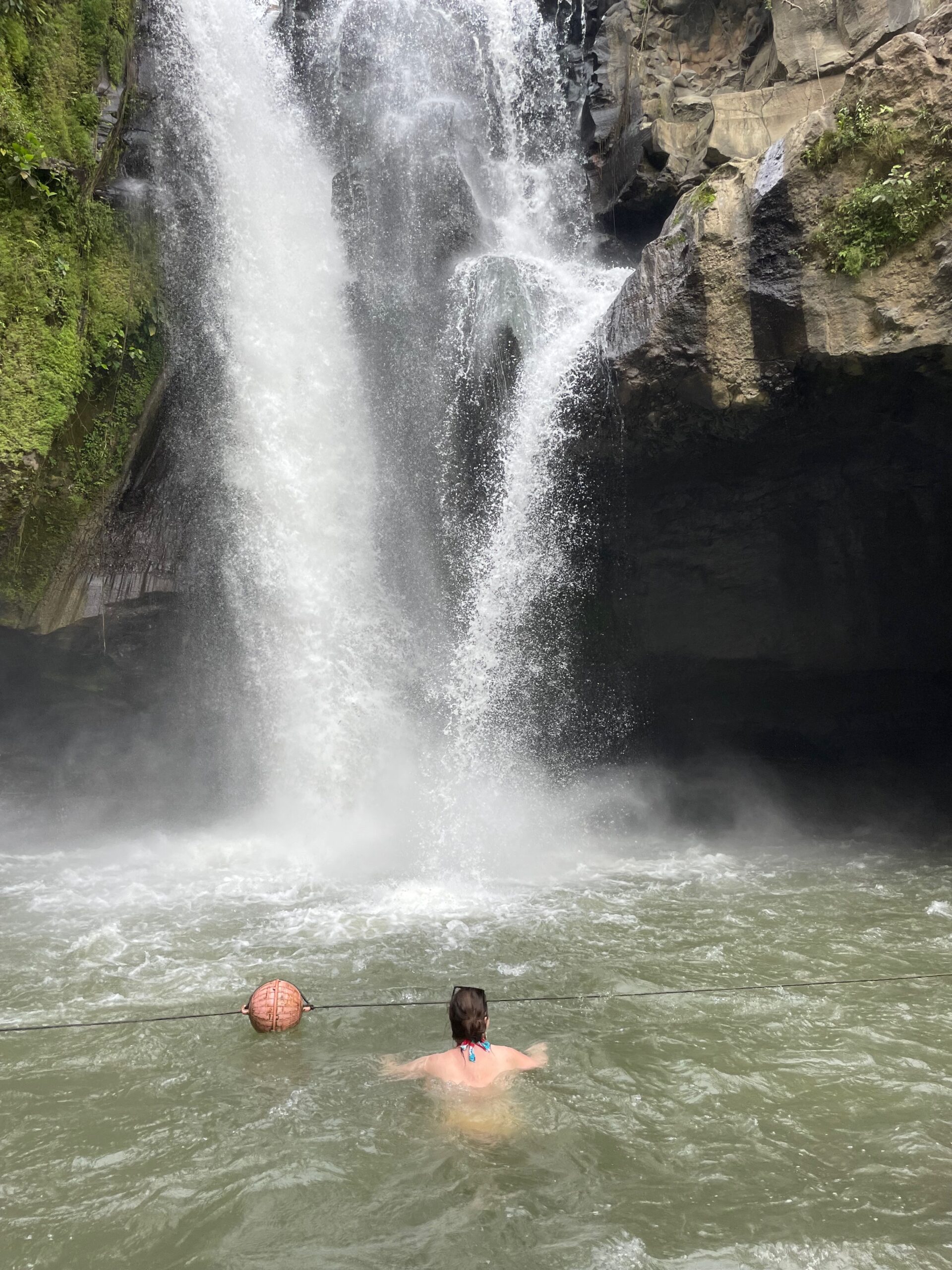 |
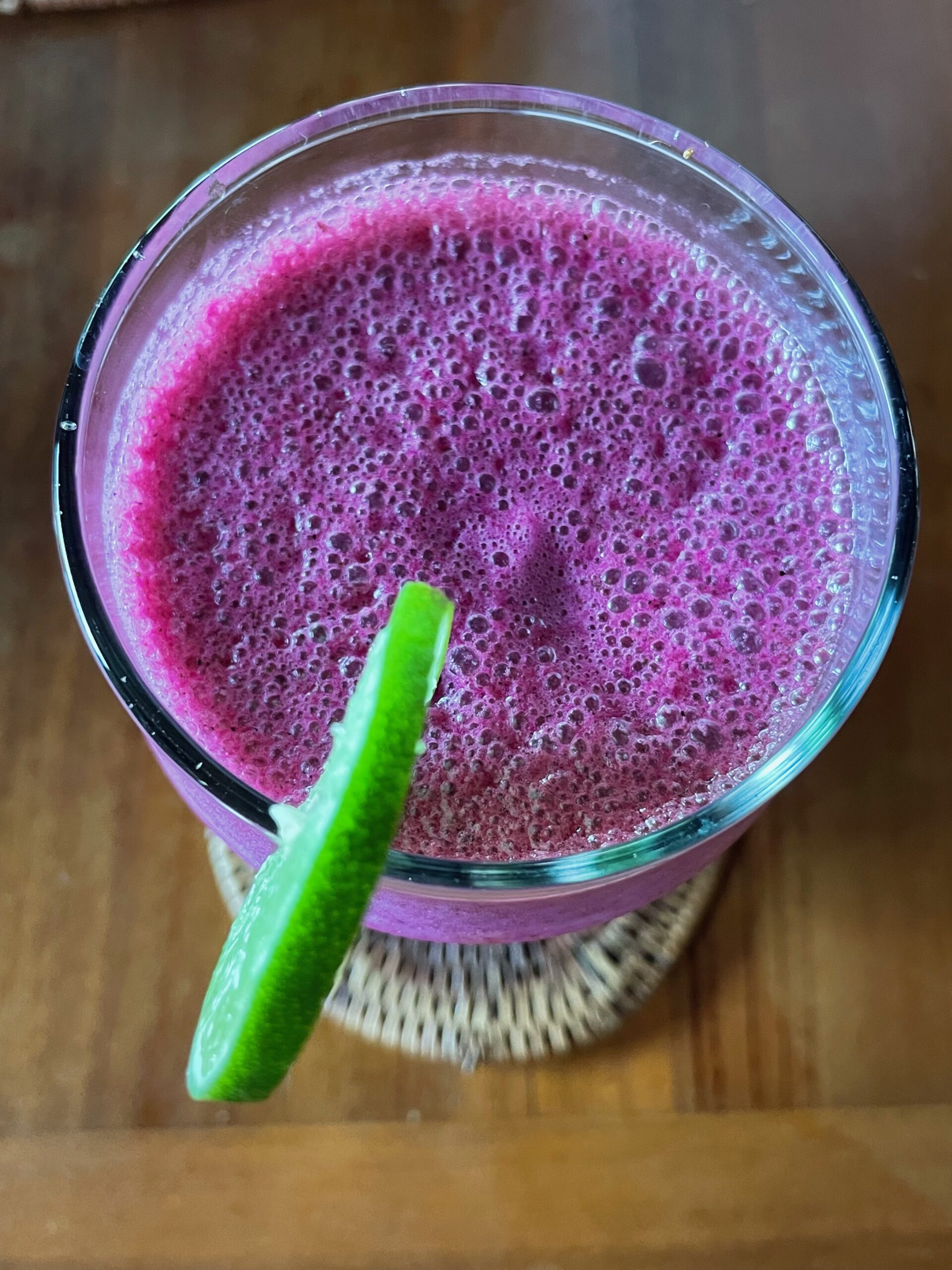 |
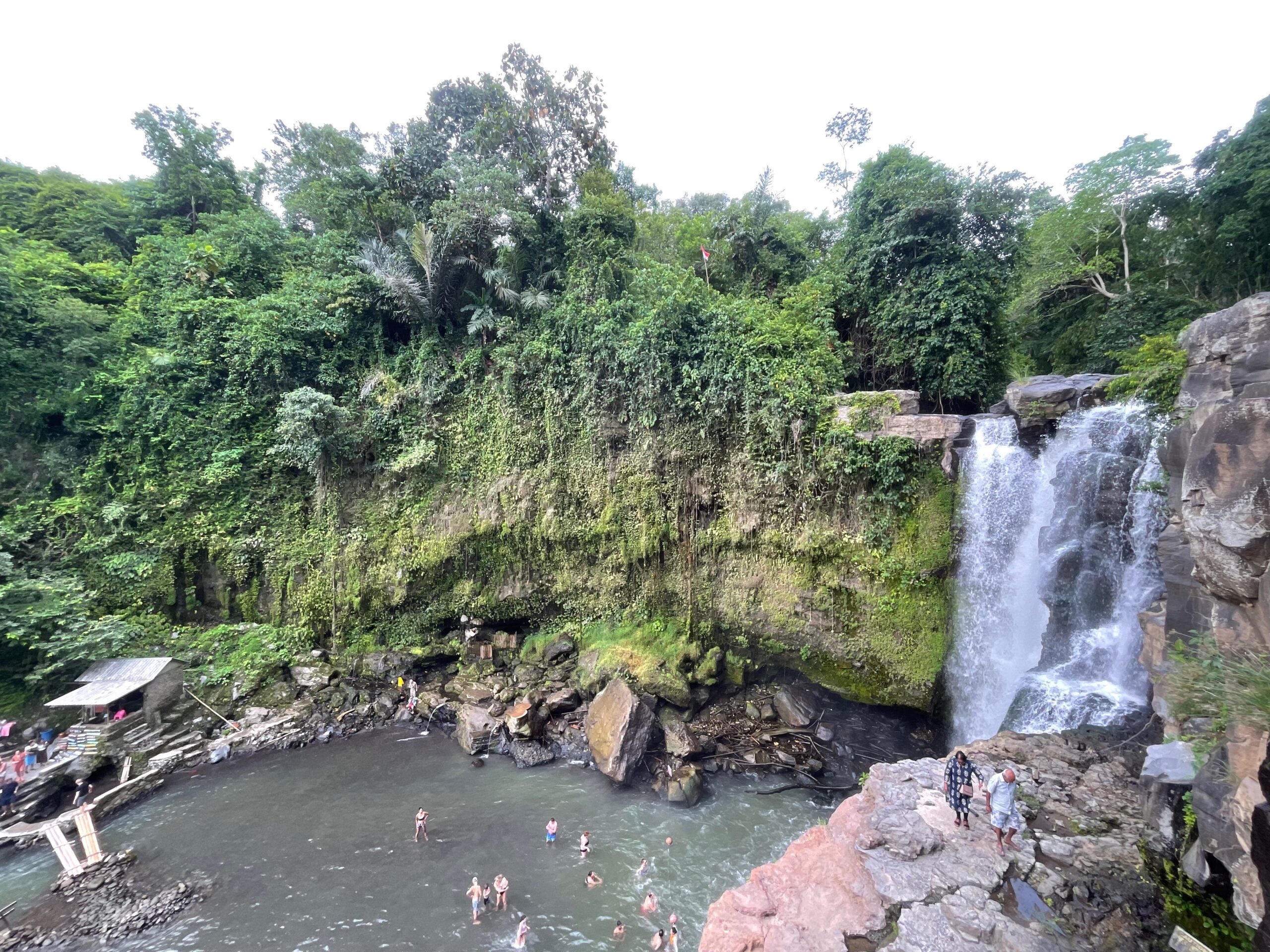 |
Day 6 (Ubud)
This was our transfer day from artisanal Ubud to the coastal area. We have used this day to enjoy a bit more of the amenities of our hotel. I can admit that the facility exceeded our expectations and we loved spending there our mornings and evenings as the place was an excellent hideout from the hustle and bustle of busy Balinese roads as well as a soothing retreat from the steep hikes to the waterfalls and long strolls along the rice fields in hot and humid weather.
I loved our Indonesian breakfasts which differed slightly every morning so we could explore more of local flavors, the gentle traditional music all around the main lobby setting a good vibe for the rest of the day (and for the night!), amazing swimming pool open during day and night located in the middle of a lush garden. We have been spoiled there for 6 amazing days and I can completely understand people who decided to relax and enjoy all the facilities of the hotel for entire day. I normally don’t review the hotels we stay in that much details but this place was enchanting and we fully enjoyed the late evening swims and walks in the perfectly structured jungle-style gardens as well as relaxed in our beautifully furnished Balinese style apartment.
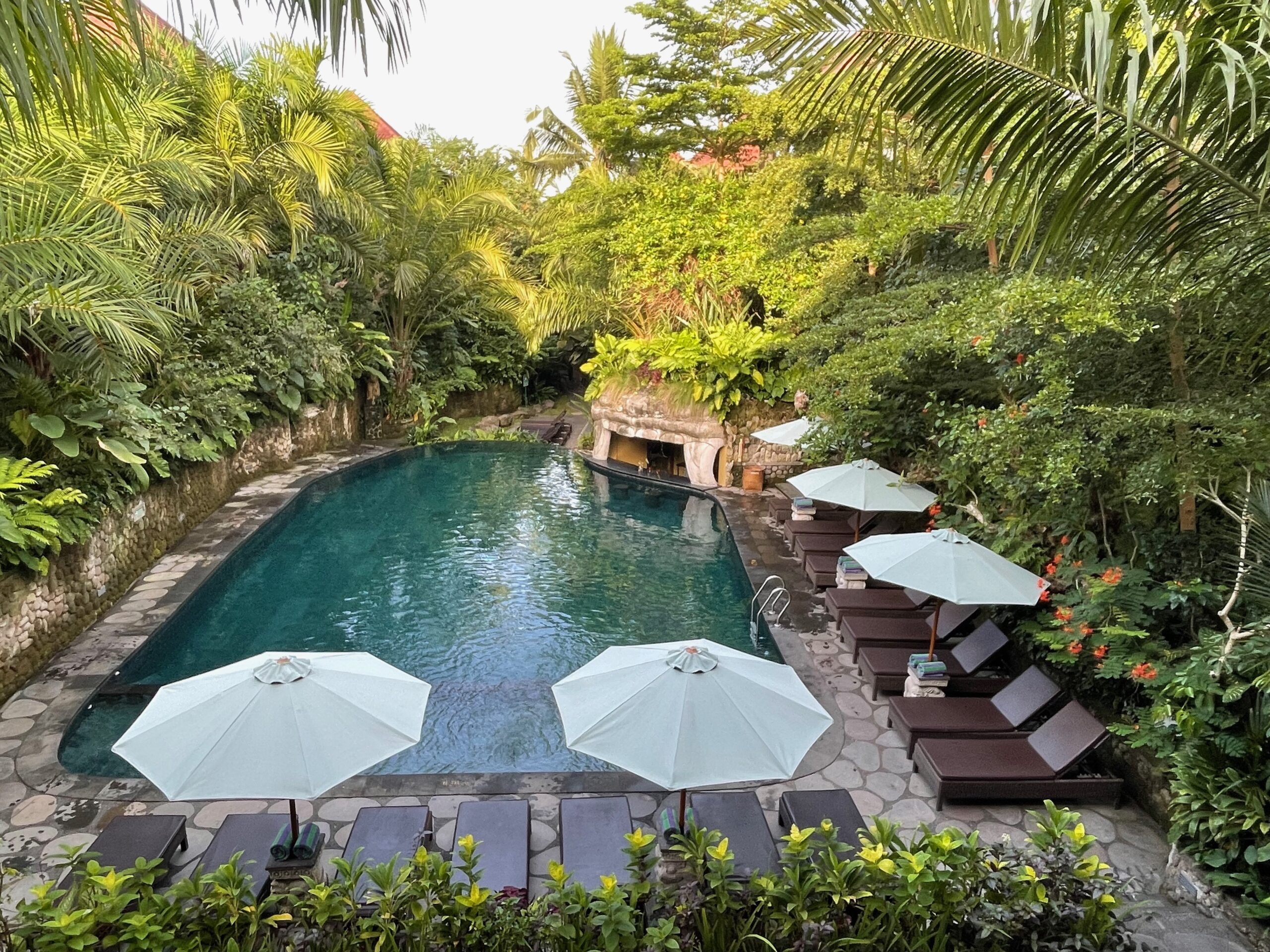 |
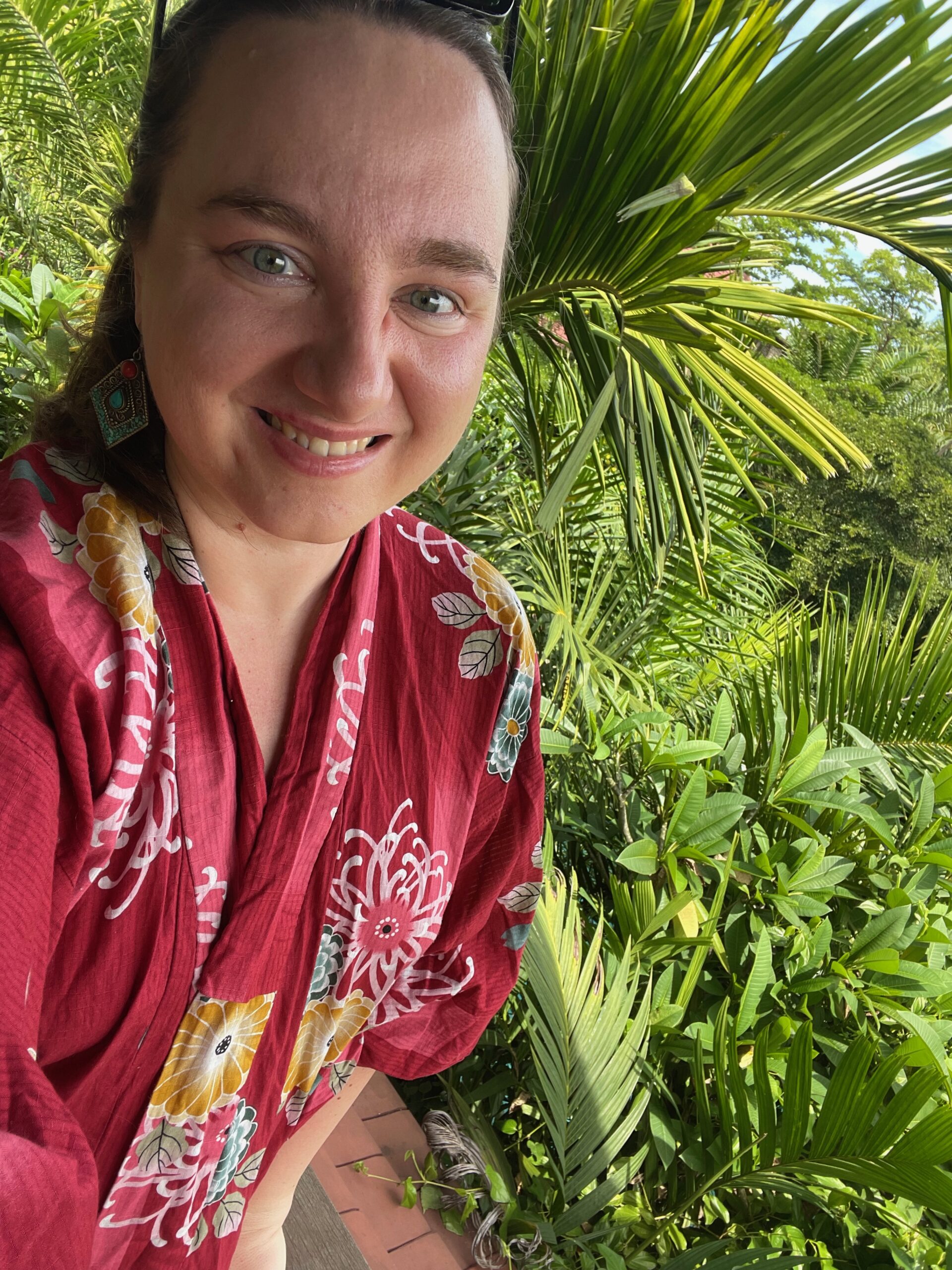 |
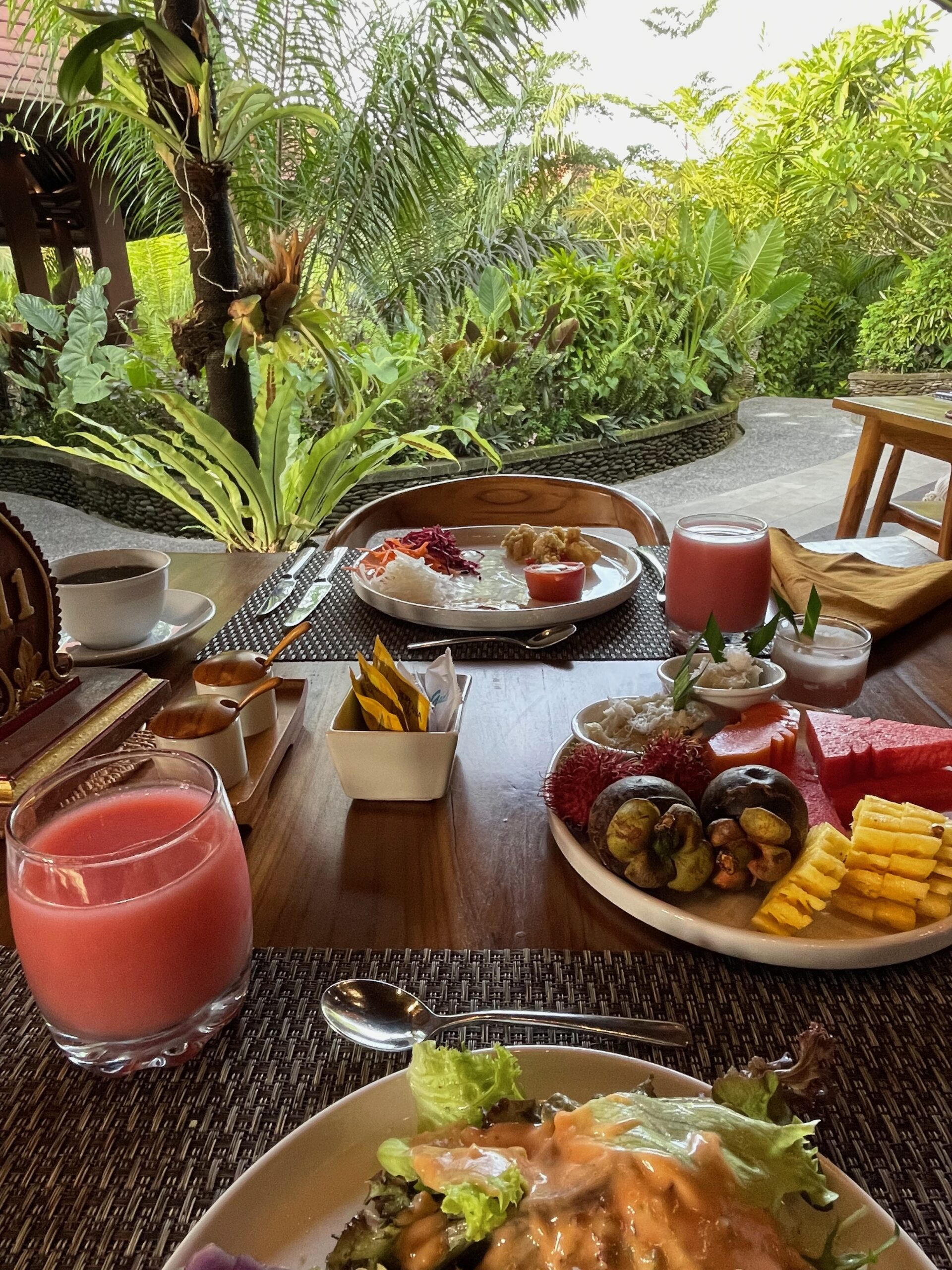 |
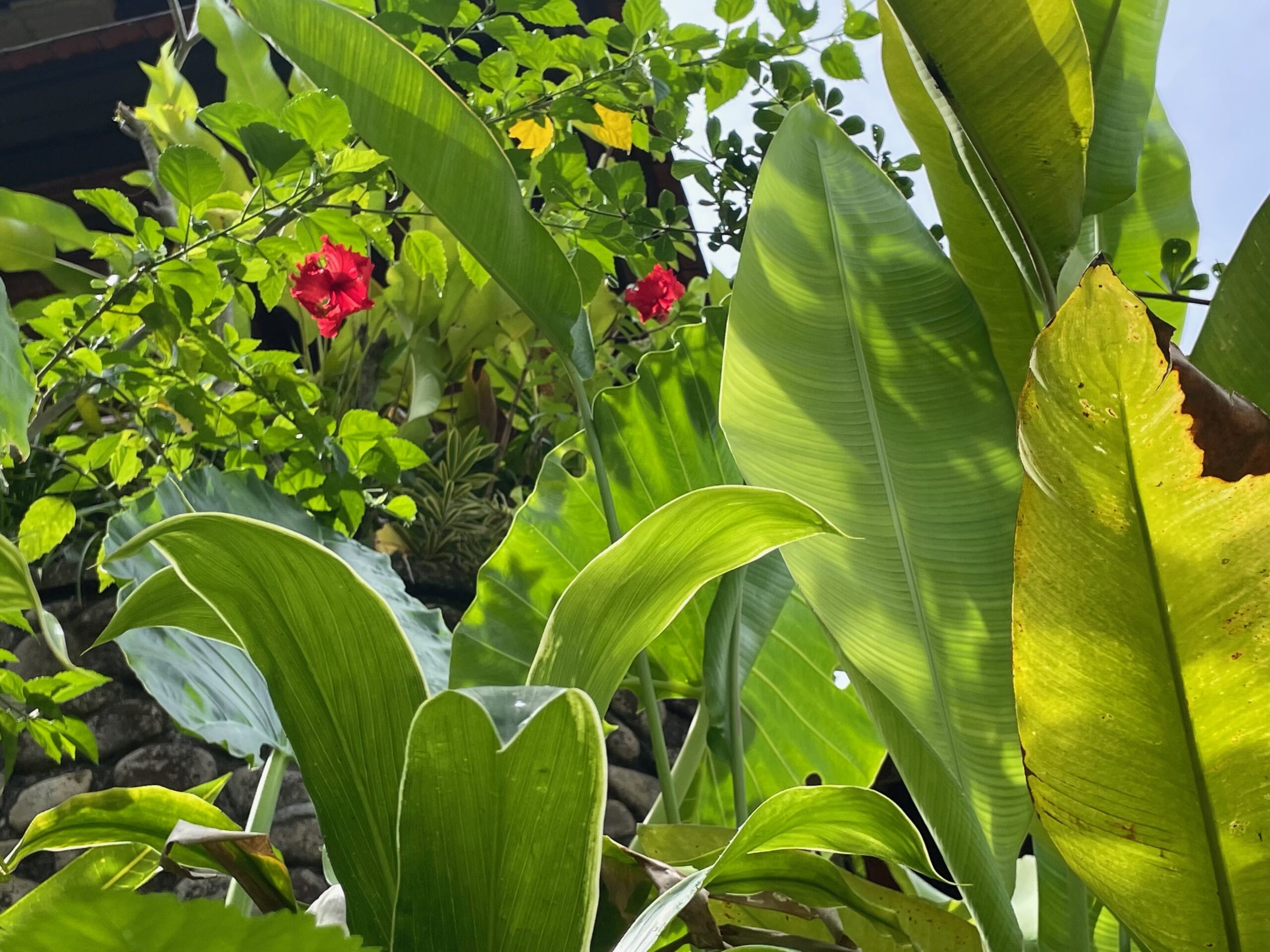 |
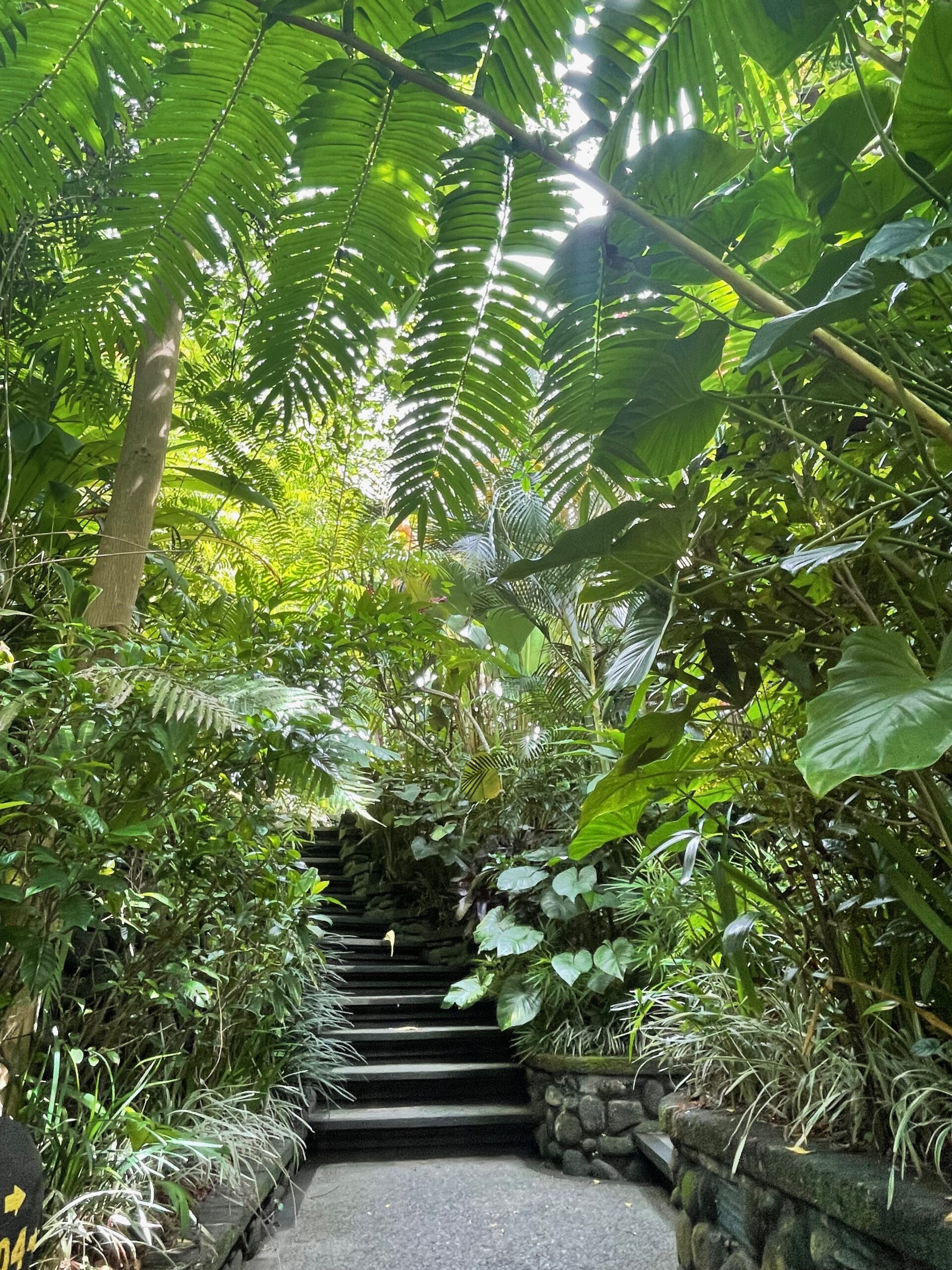 |
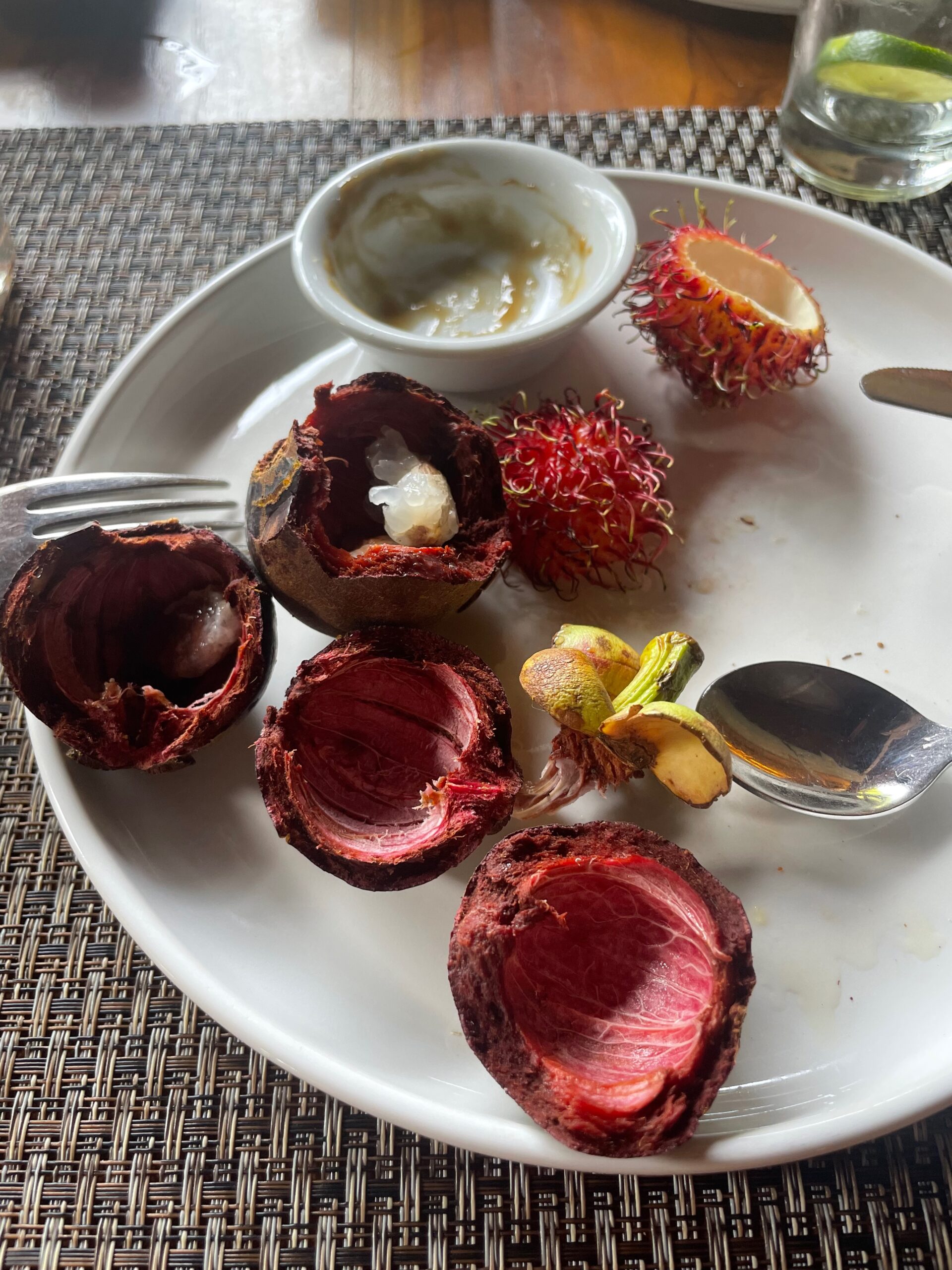 |
Our afternoon route to the coast was longer than the one could expect for a 45 km journey on a flat terrain, but when moving around Bali, one should always count in some time in traffic.
We have arrived to the Nusa Dua coast late afternoon to just spend some time swimming, relaxing and doing sweet nothings.
Day 7-12 (Nusa Dua coast)
Can one can get bored spending 6 full days in the beach resort? Bali has many beaches and I recommend doing some short research to choose the right for you. In Bali you will find places suitable for surfing, perfect for partying or to have some private time for yourself. We have chosen Nusa Dua beach which is more cameral, it’s clean and shallow waters are ideal for relaxing swim. This is the place which I find good for couples, families maybe with large resort vast offer of family entertainment. We have liked the beaches not being too crowded with many guests opting for their hotel organized activities than swimming or having long strolls along the coast.
Nusa Dua beach is known for its string of big resorts lined along the coast, so you can expect a reasonably dense tourist infrastructure on side too, with many spas, quaint bars and commercial stands offering water sports. The big resorts offer some daily aqua gym, Balinese nights with traditional music and dance performances, billard, mini-golfs and many other small activities, I recommend checking out the full offer just upon arrival.
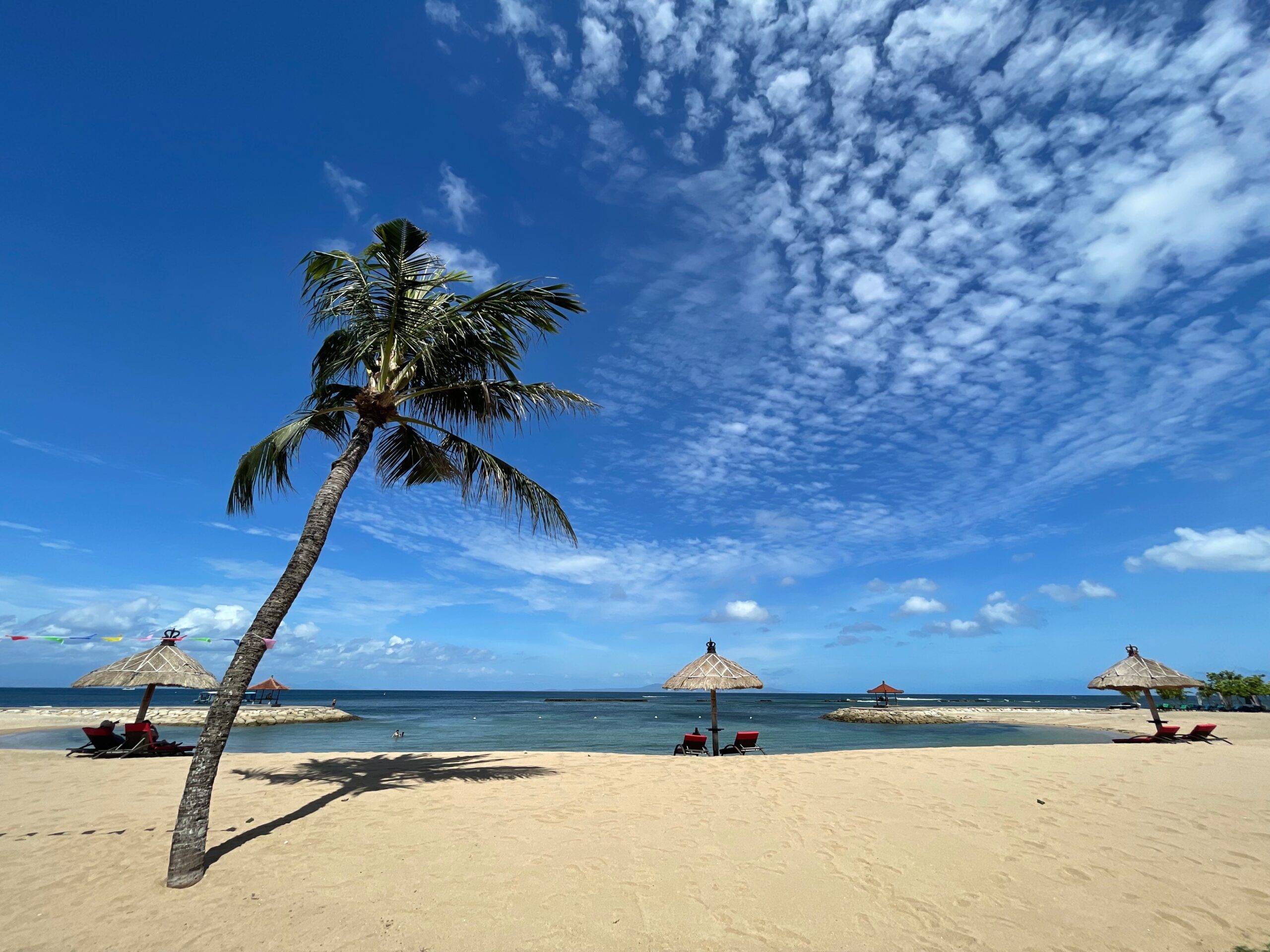 |
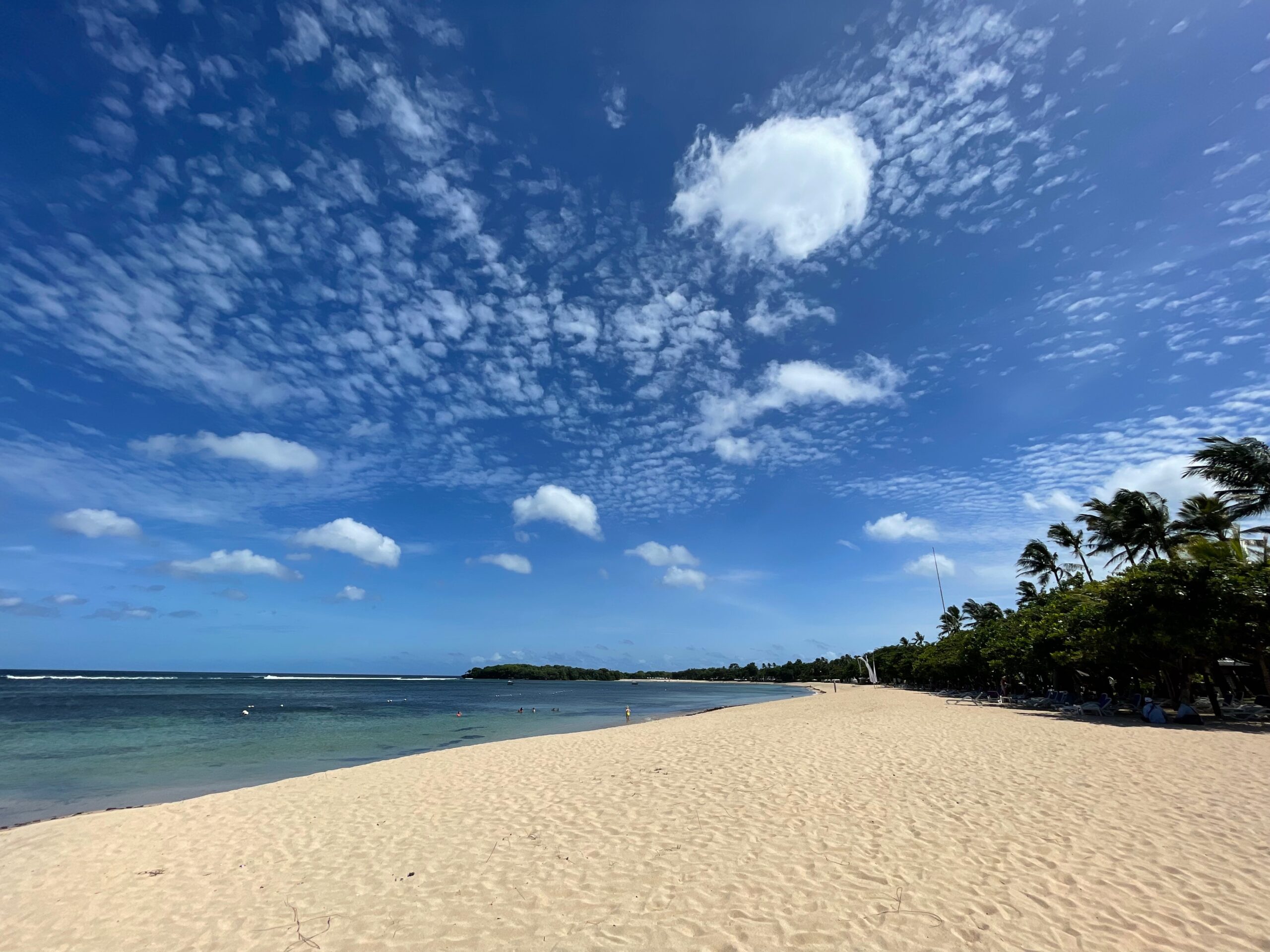 |
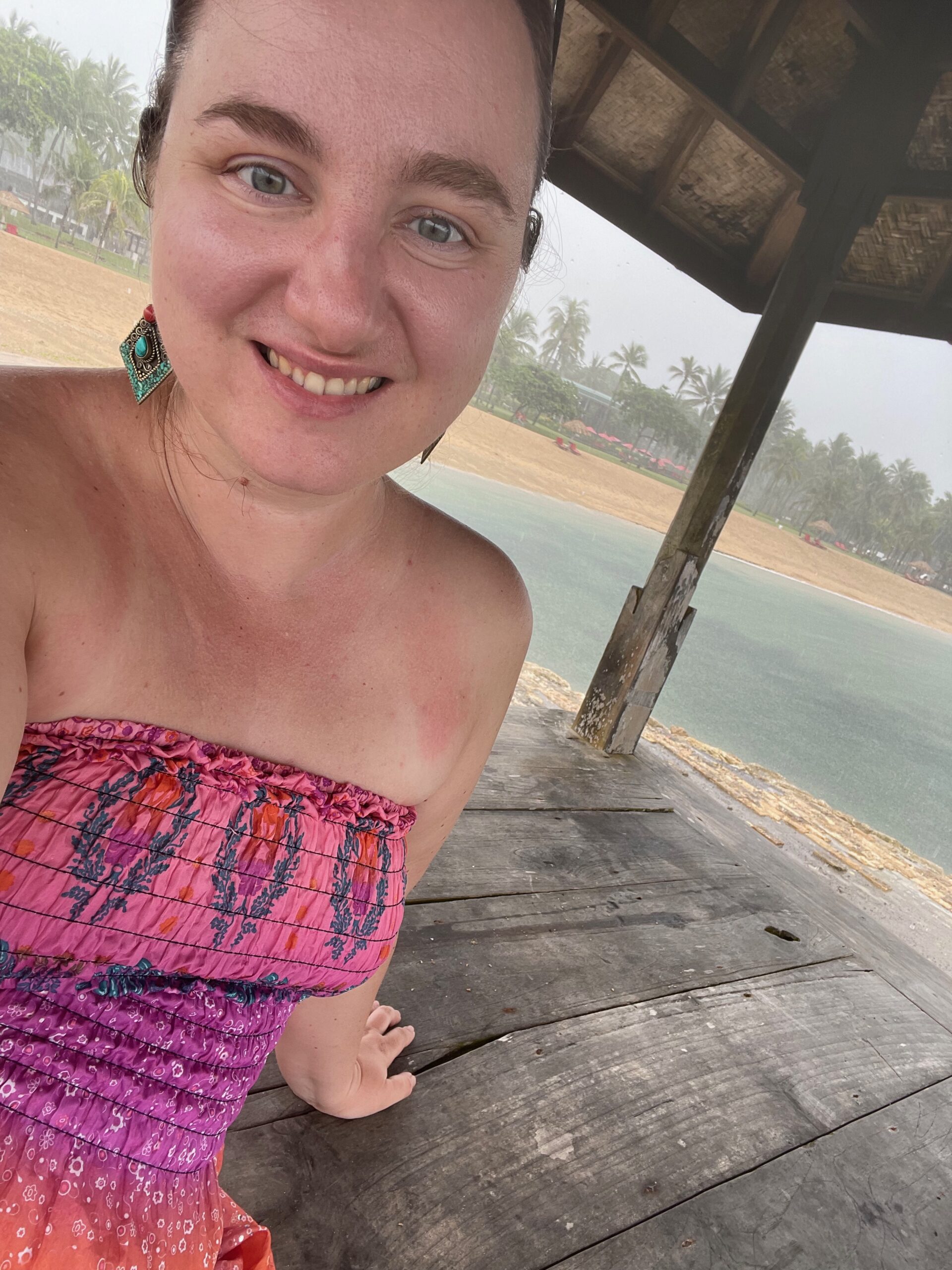 |
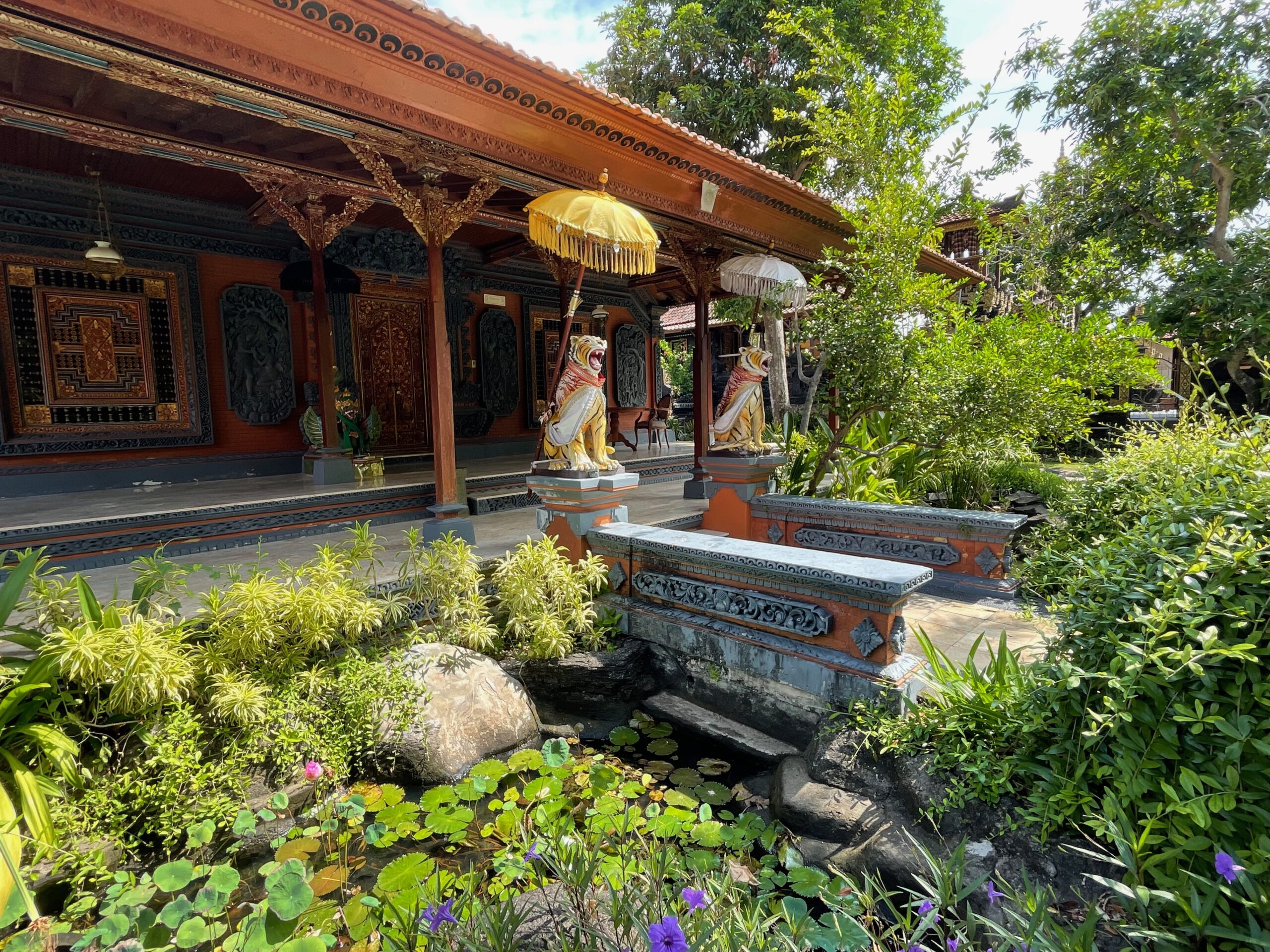 |
We have used our hotel spa for Balinese massage, as well as few other smaller facilities with massage outside of resort. My experience is that the hotel spas are on the more expensive side but their offer is uniformly good, whereas the smaller facilities have varied quality service often depending on your luck with masseur. Some of them were more competent than others, and you don’t want to risk to get your body into unqualified hands.
The coastal area was also a great place for us to enjoy the local seafood. During our stay in Ubud and out trips deep inside the island we have enjoyed the exotic fruits, crispy ducks, nasi gorengs, tempehs to name just a few of our culinary explorations, but we didn’t try any fish.
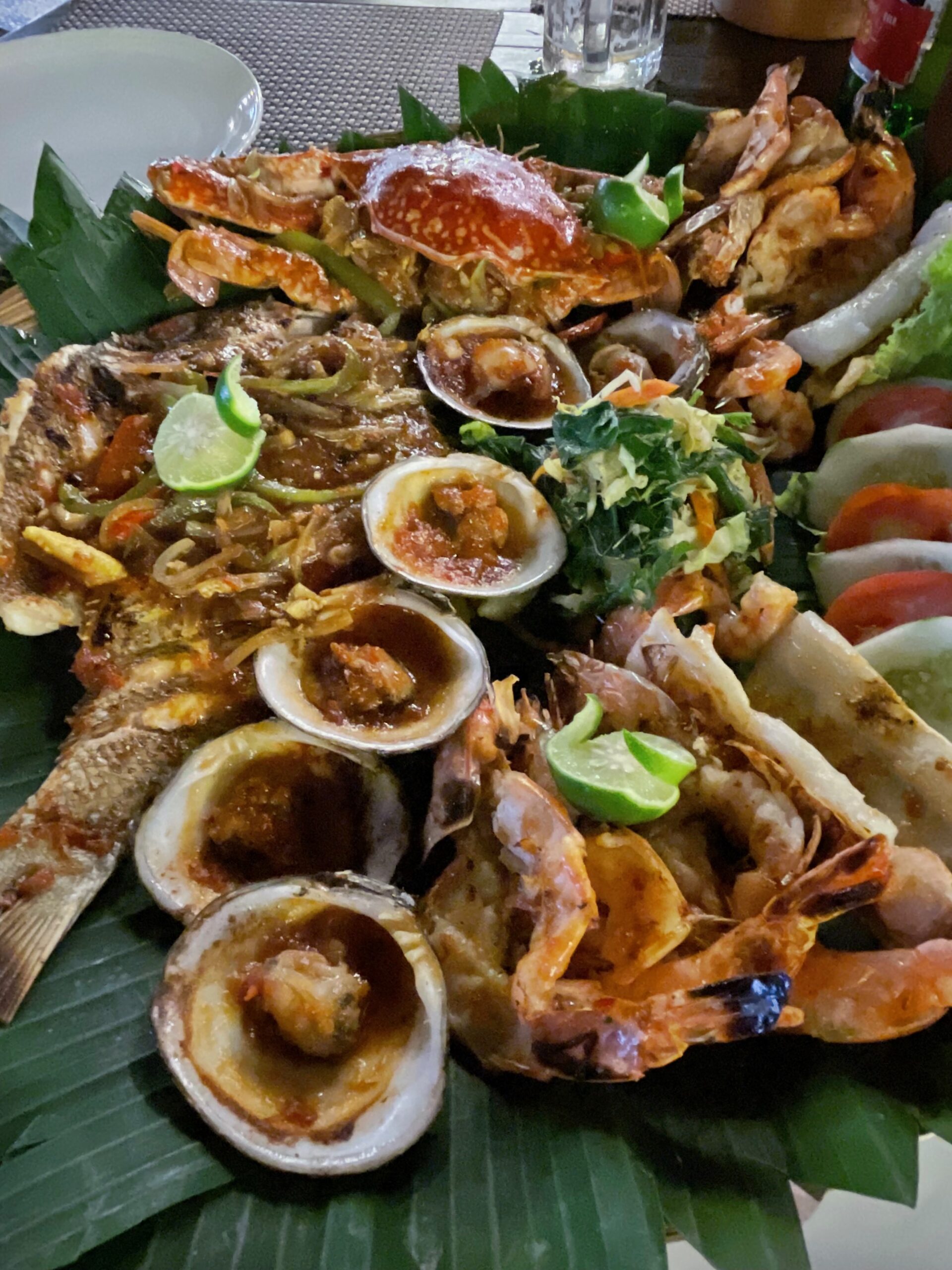 |
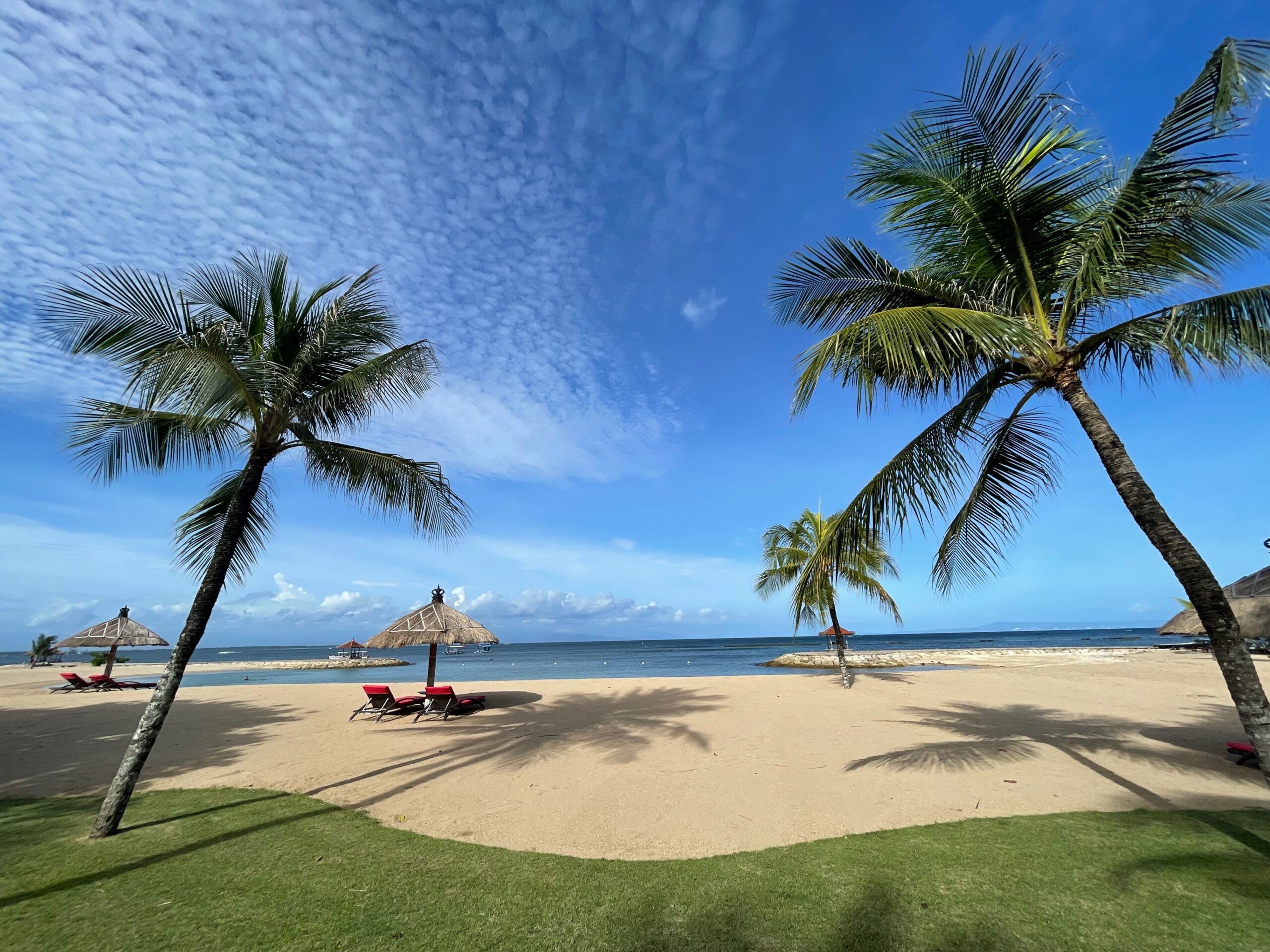 |
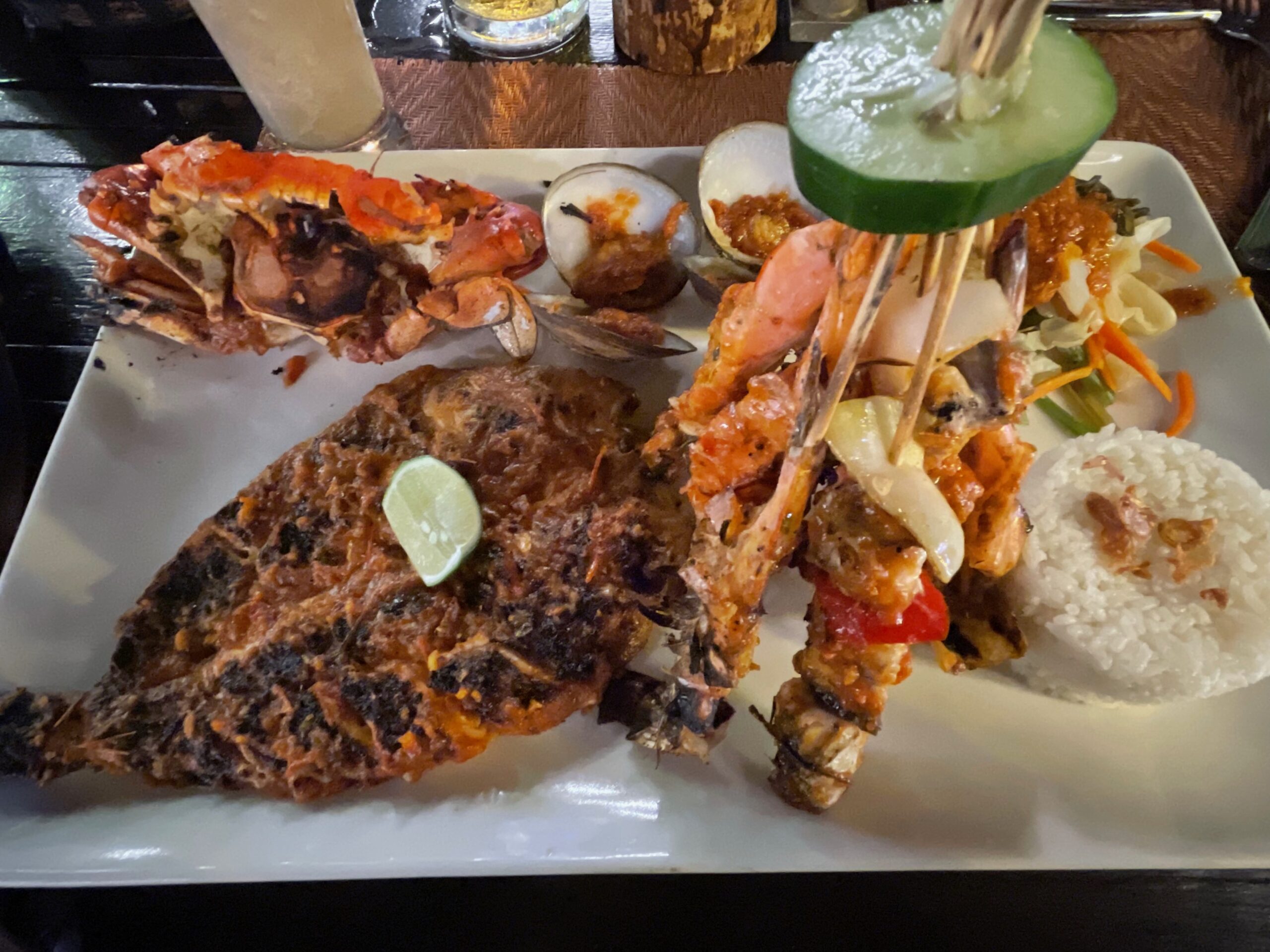 |
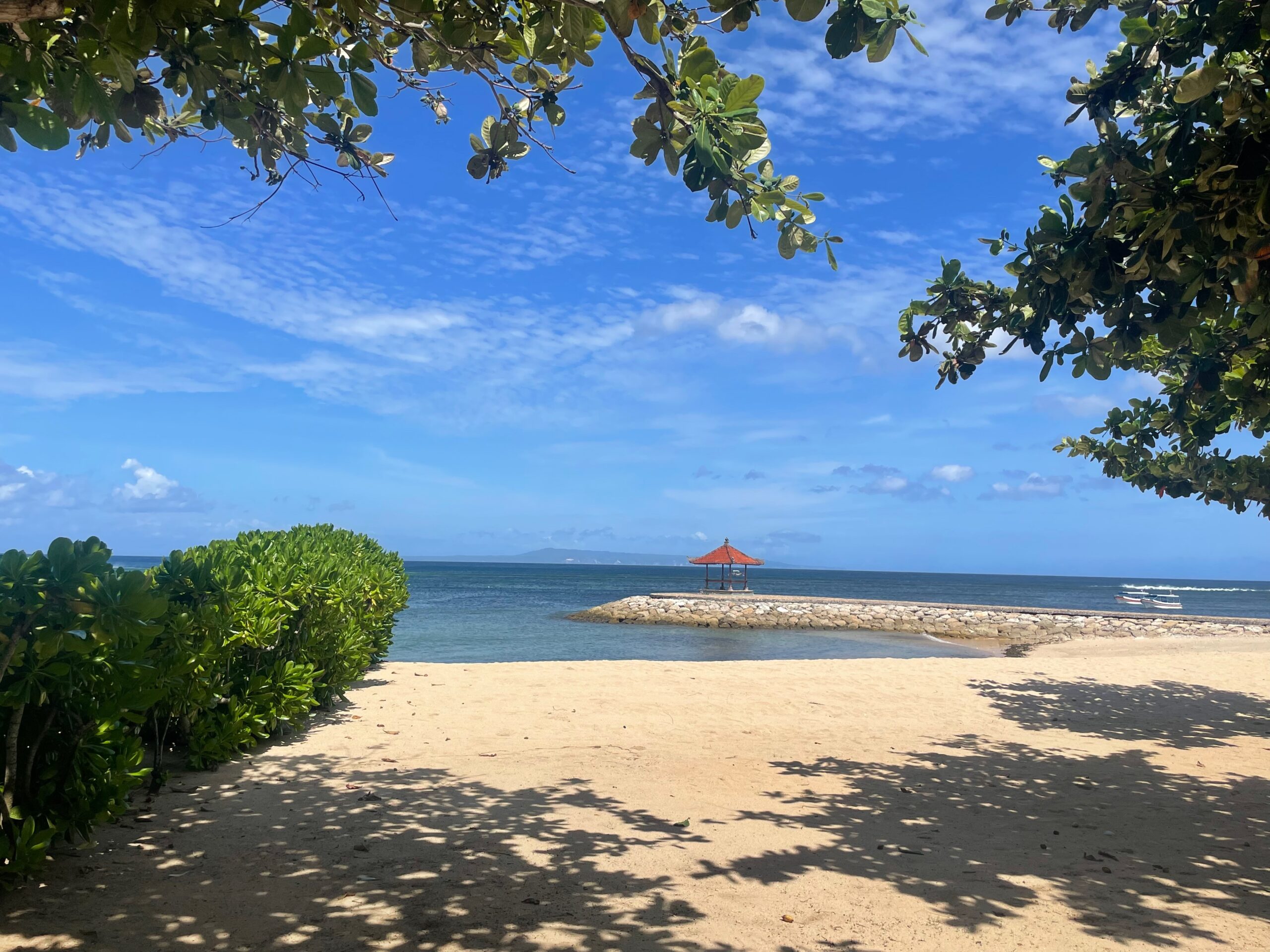 |
Around our hotel resort we have found many small family run restaurants having grilled fish, mussels, crabs, squids and many other delicious catches straight from the Indian ocean on their menu. The prices were inviting as they were on less steep side than in the restaurants being located inside of the hotels on the coast. I recommend checking out both for a bold seafood feasts in the smaller restaurants across the street further from the ocean and a la carte smaller dishes in the beachfront restaurants of the resorts. The prices for food in the coastal hotels matched those in the Parisian restaurants so you can make the count before deciding.
We have swim in the swimming pool of our hotel and in the ocean every day. Interestingly, the hours of the tides of the Indonesian change every day dramatically, the hour of high and low tide can differ even one hour which made us to pay attention to choose the best moment to have a swim. The water in Nusa Dua area is quite shallow, and it’s often not deep enough to swim during low tide.
You can still opt for a water sport this time or enjoy a swim in the swimming pool. This was also a great time to hide in the spa for relaxing Balinese massage or to have a quiet moment of meditation.
Those 6 days passed too quickly as we fell for a comfortable temporary routine having great time on the coast.
We took it easy the last day since we knew that the long journey back will be tiring. We were flying with a change in Singapore with 14 hours flight getting us back to Paris.
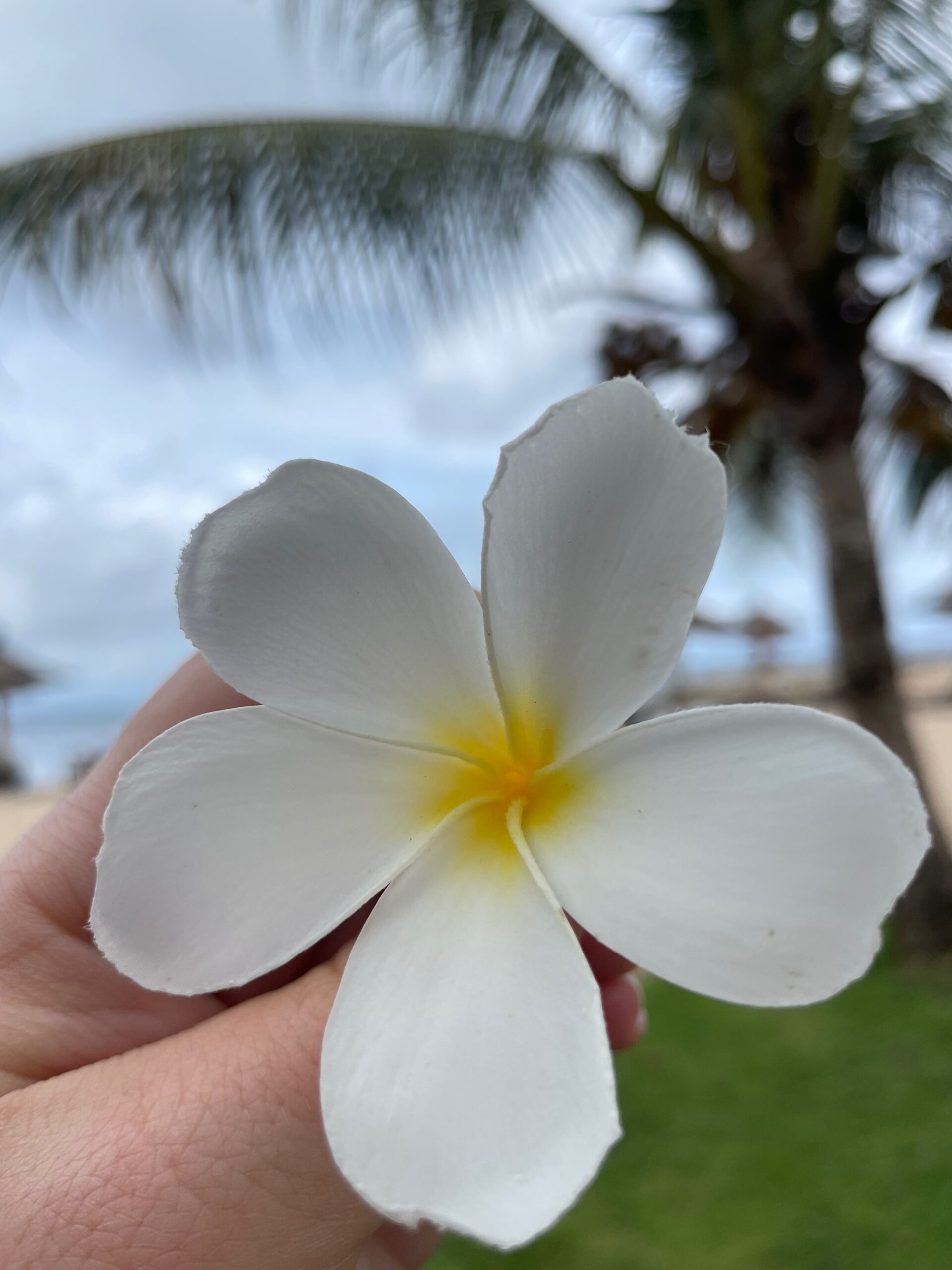 |
